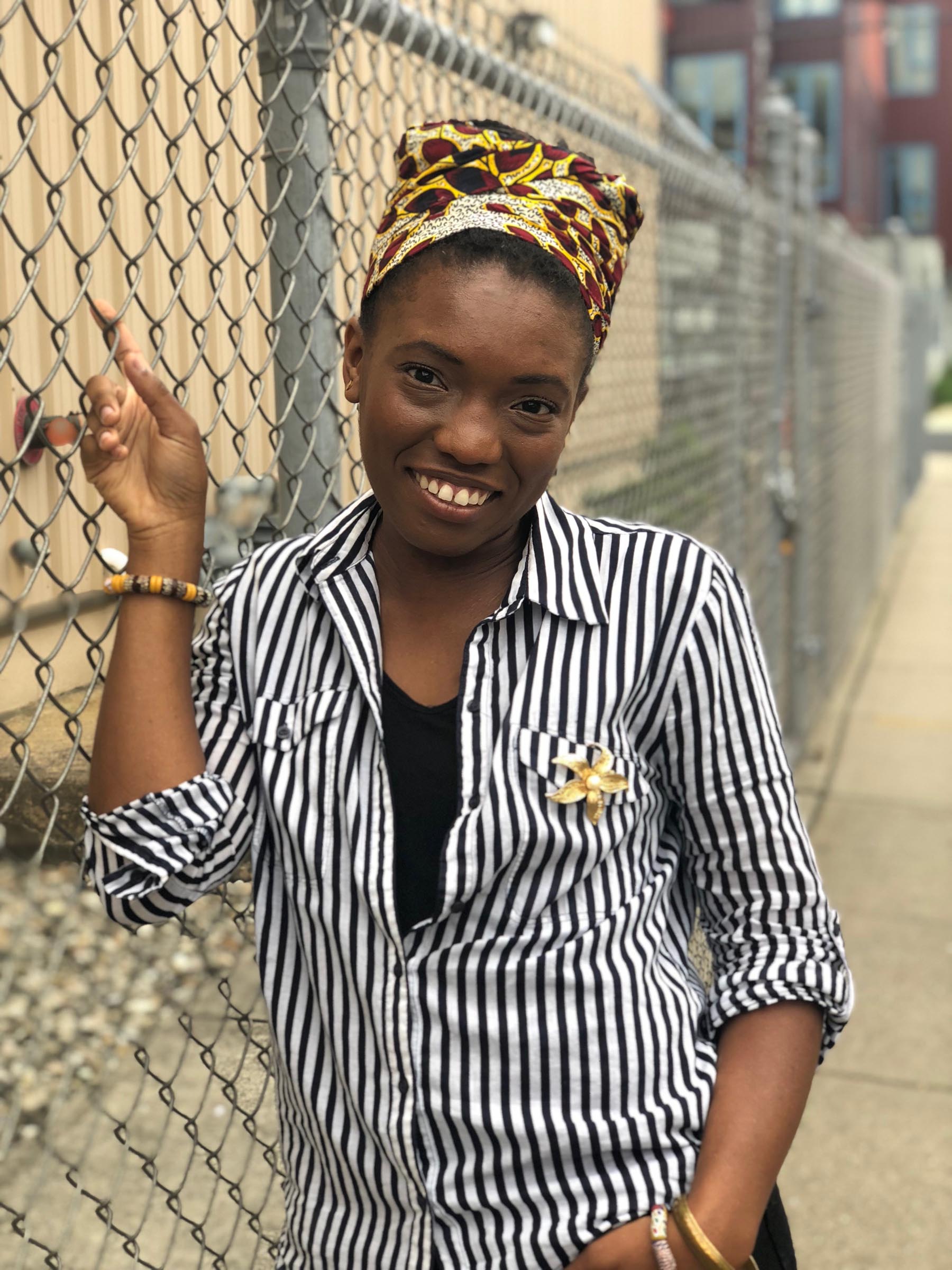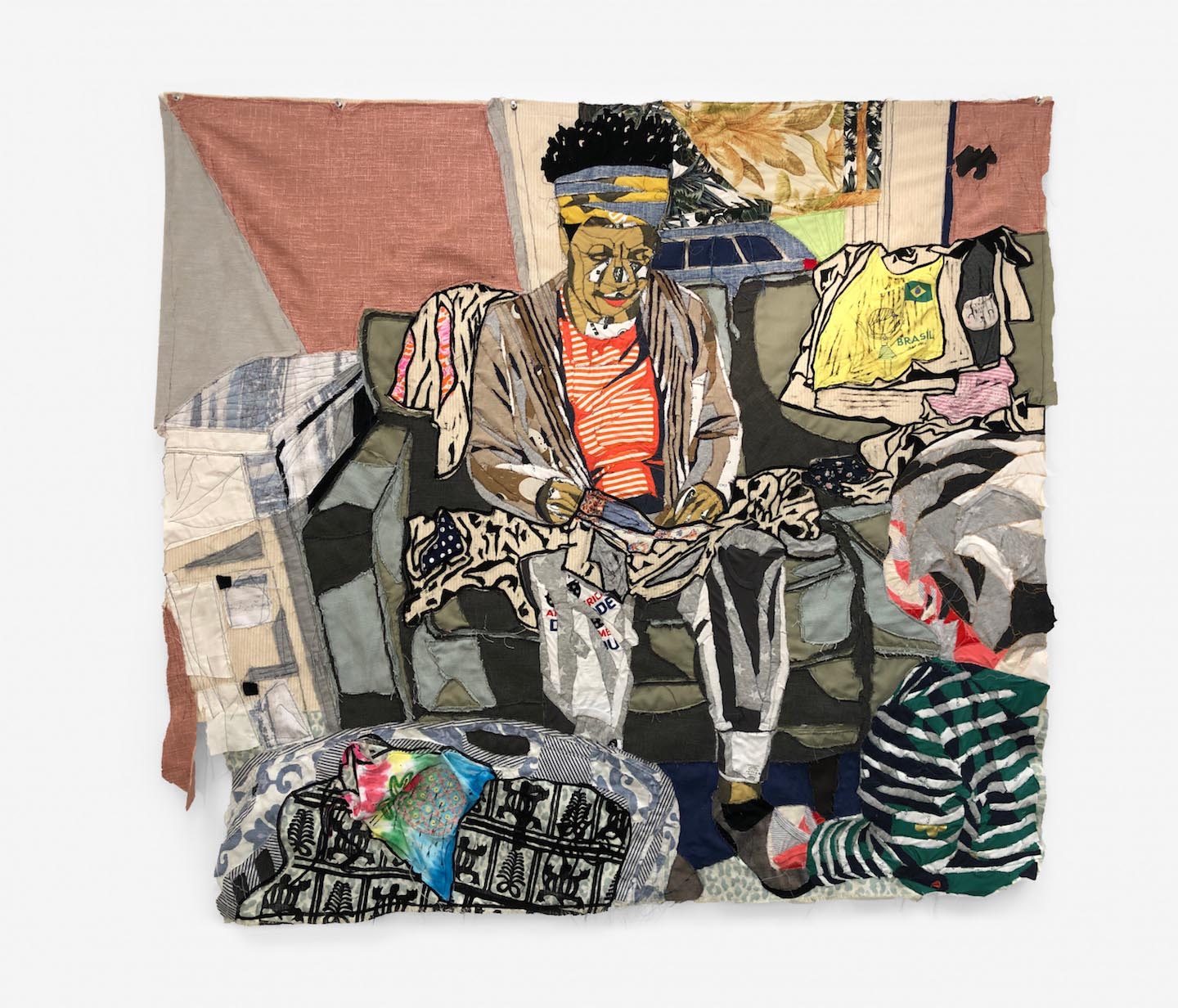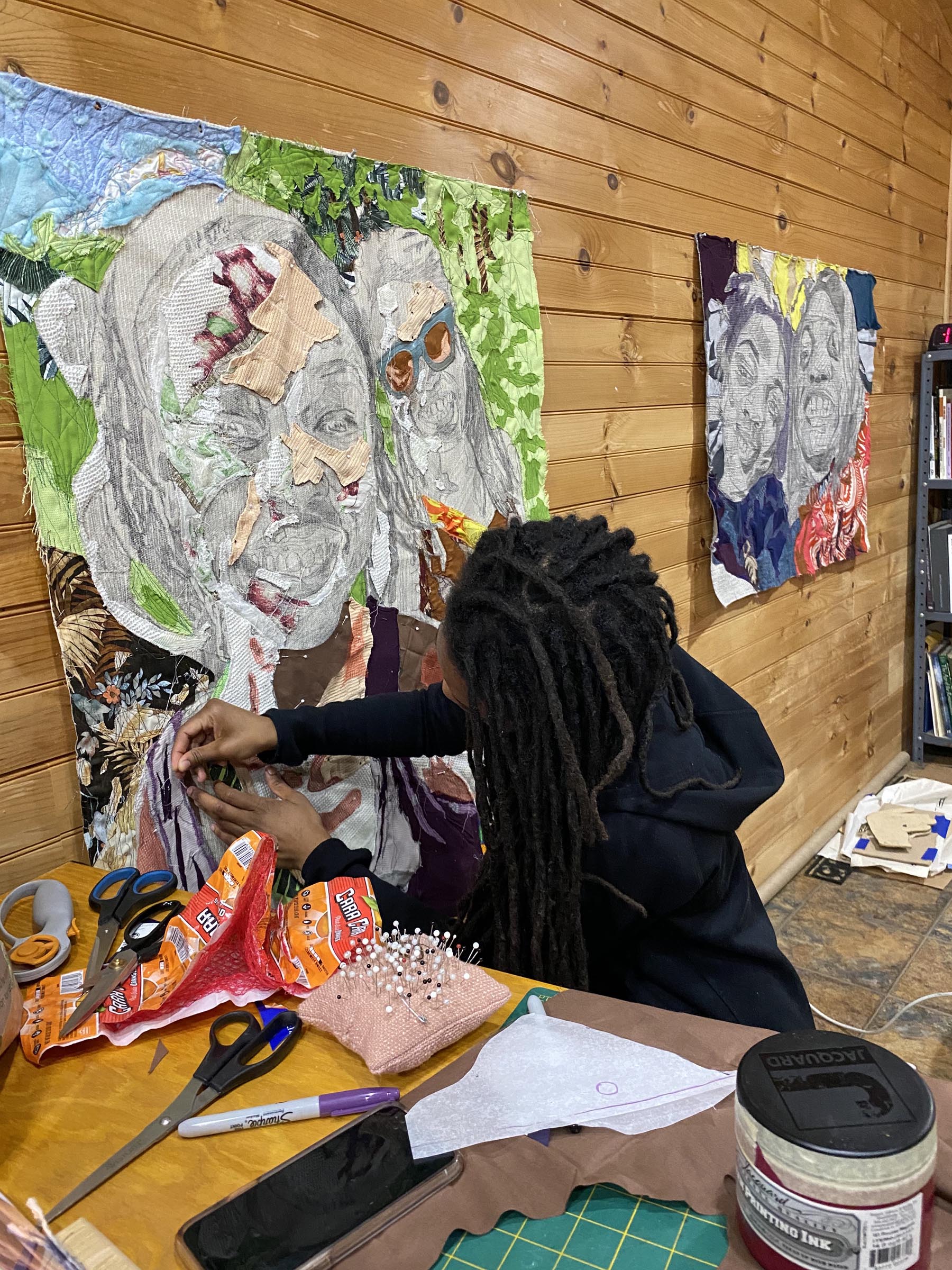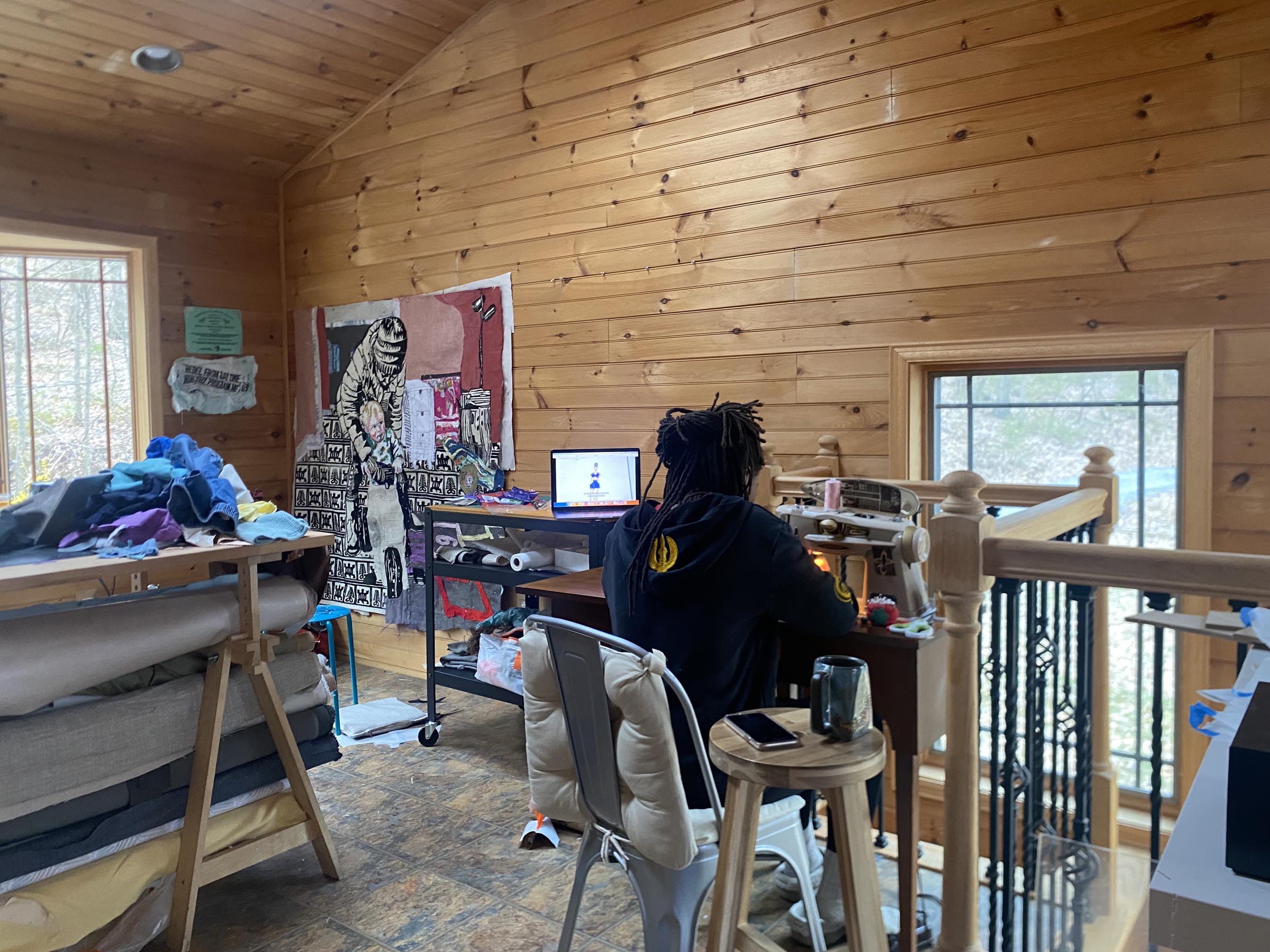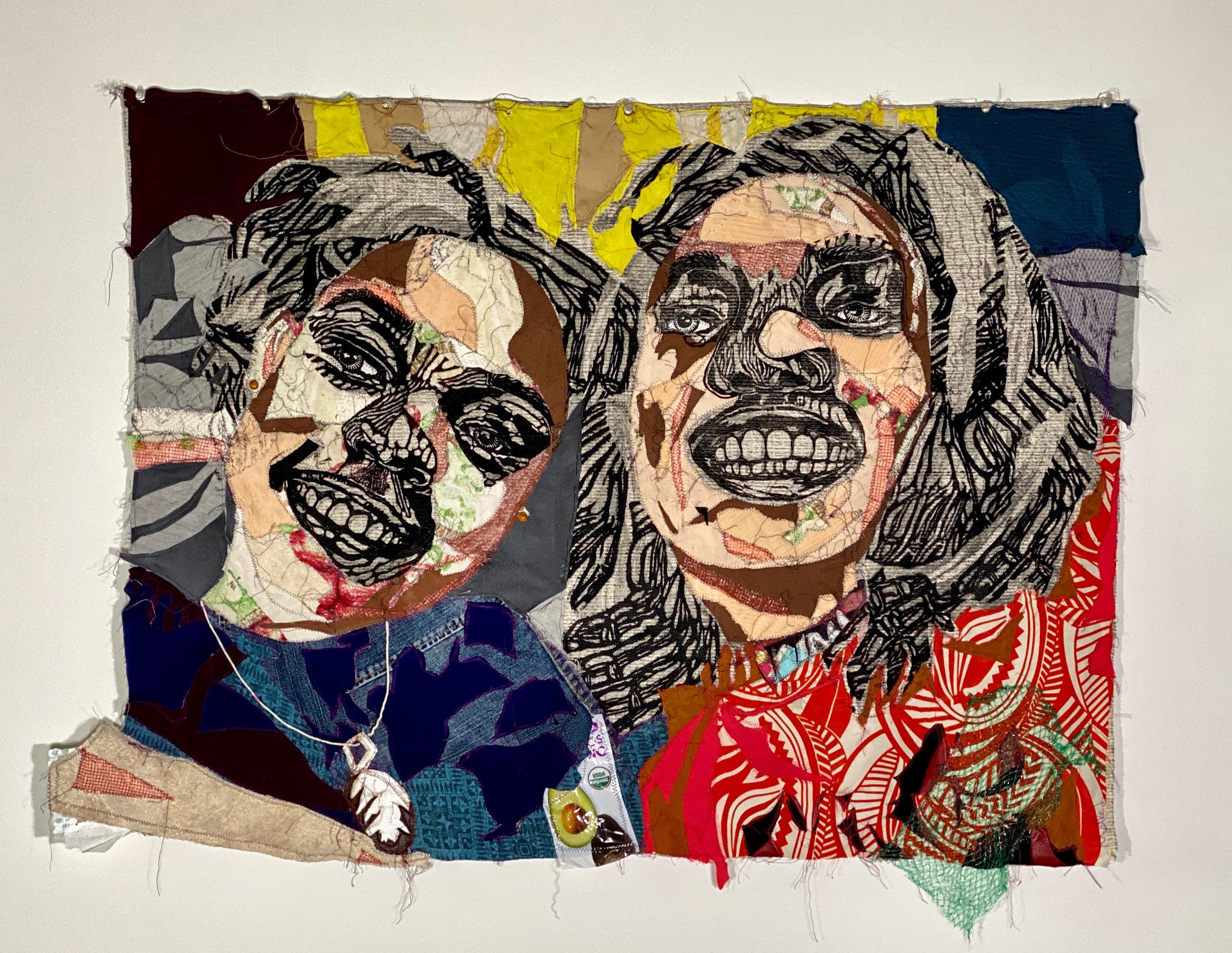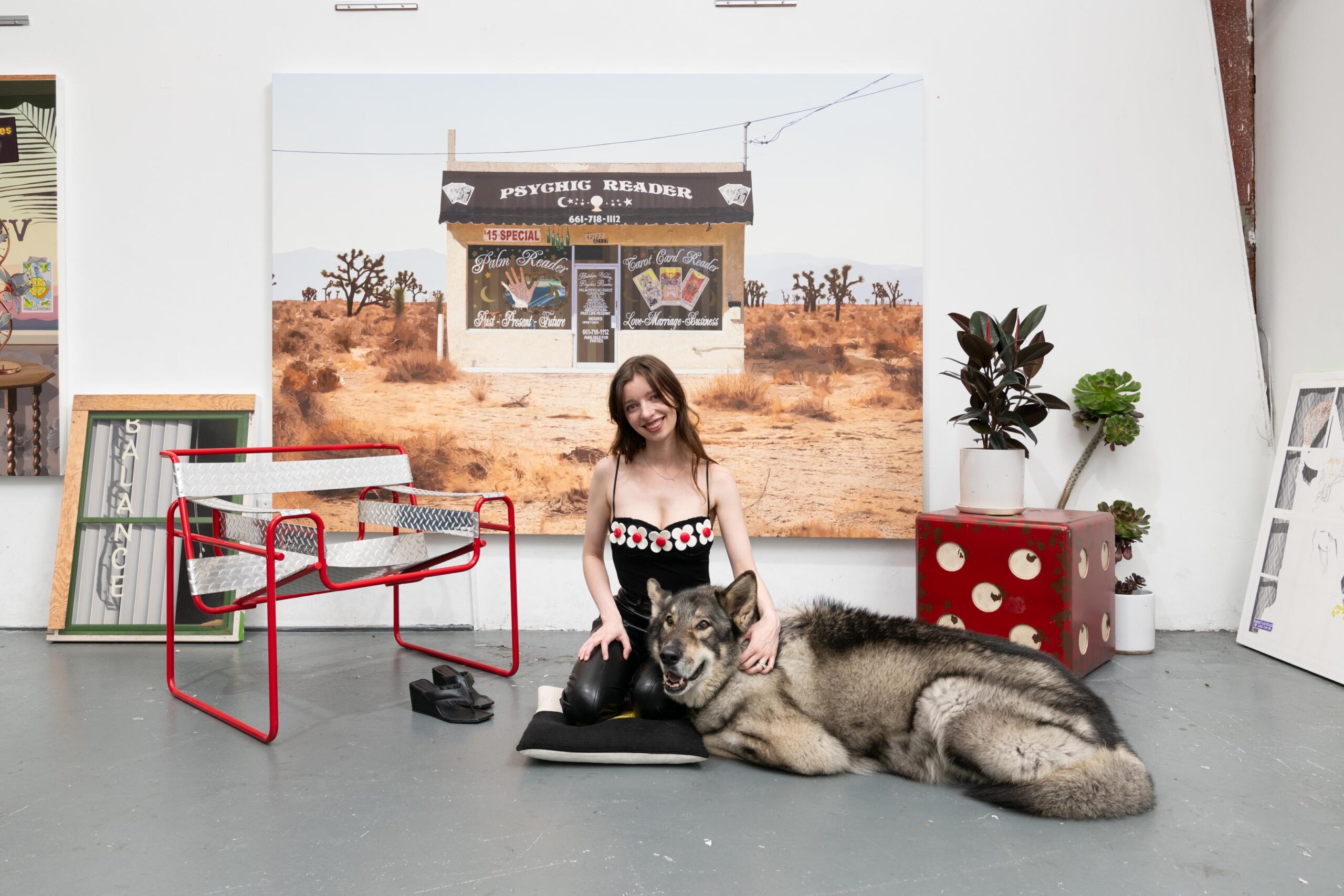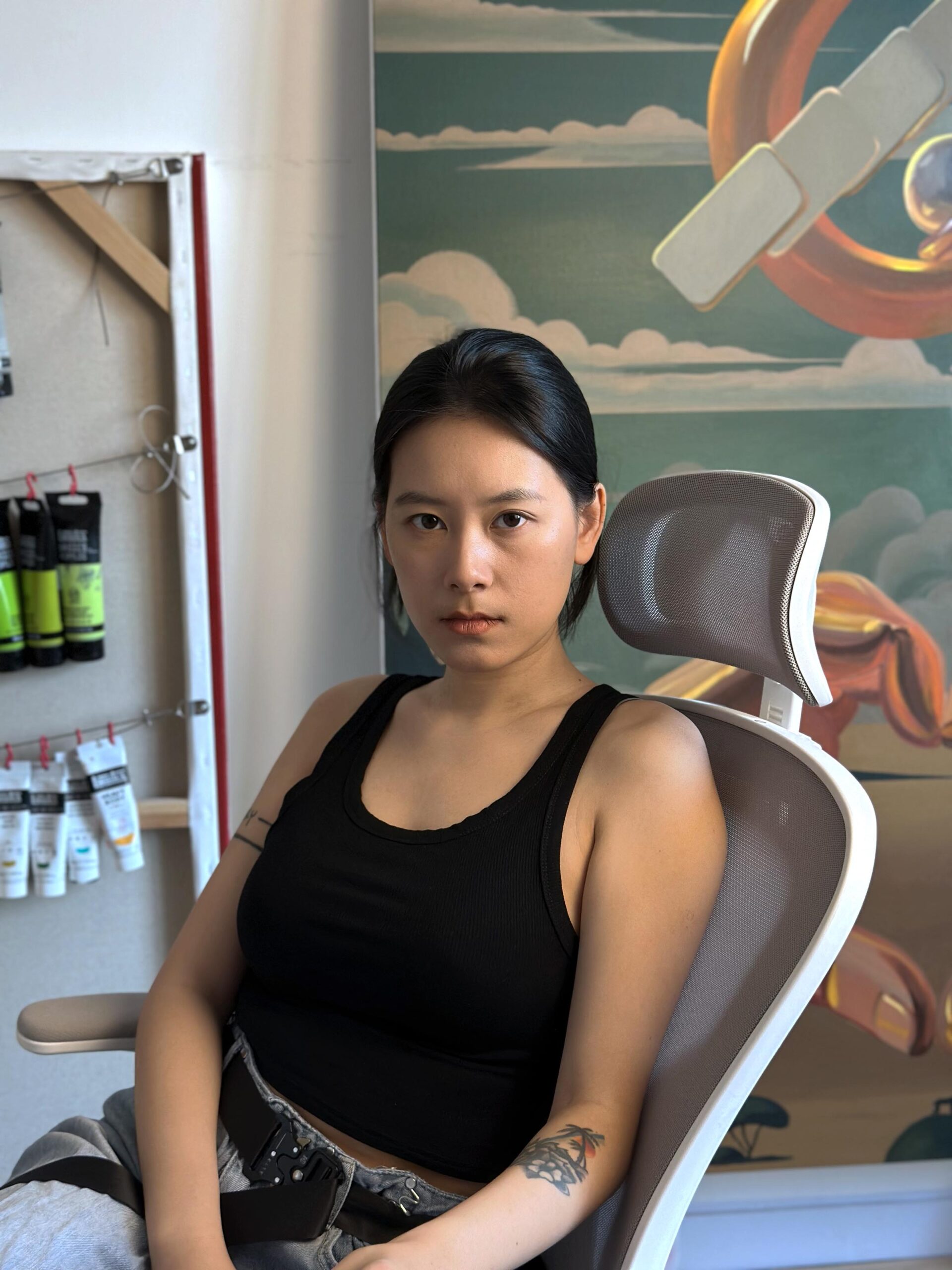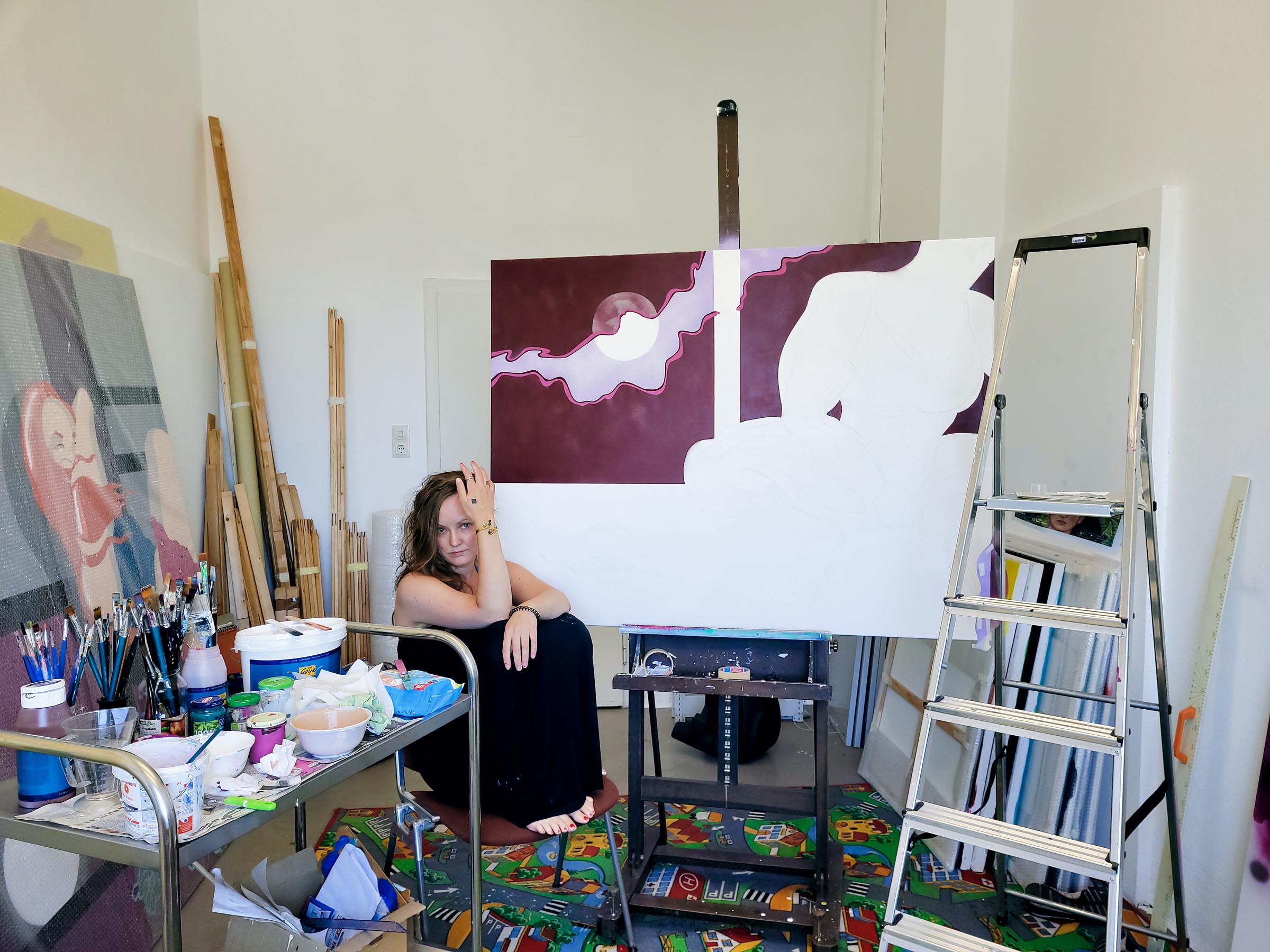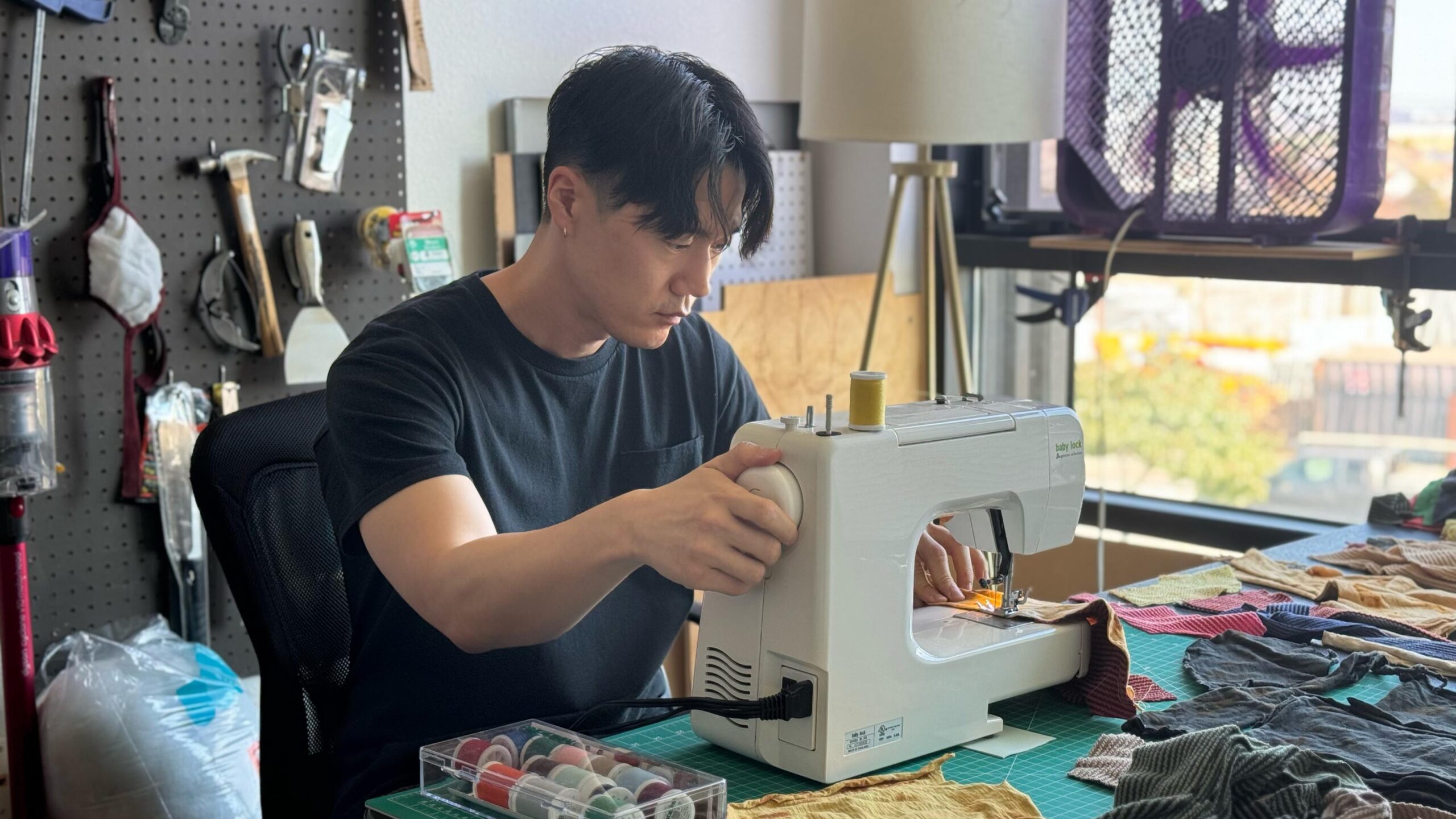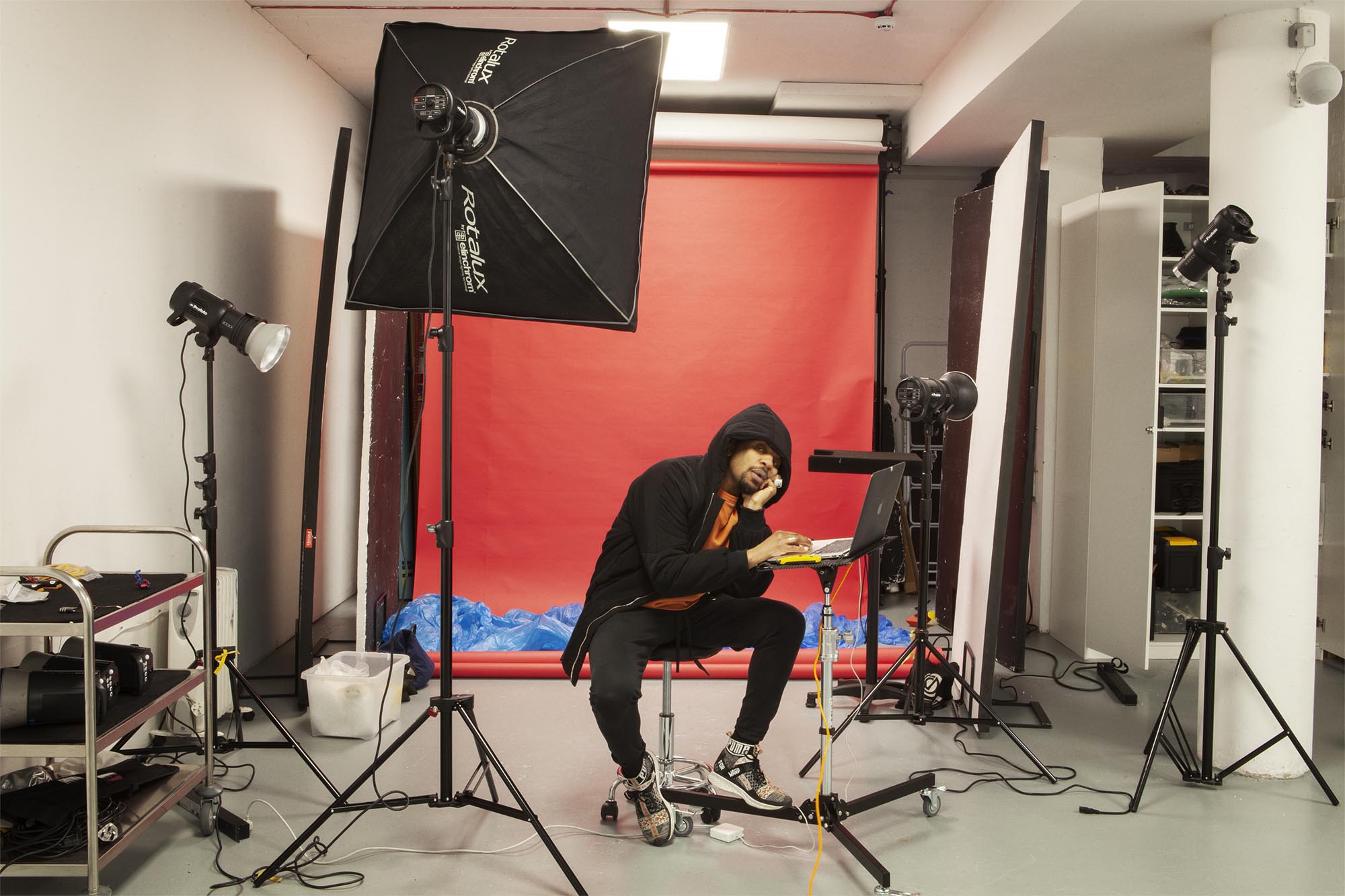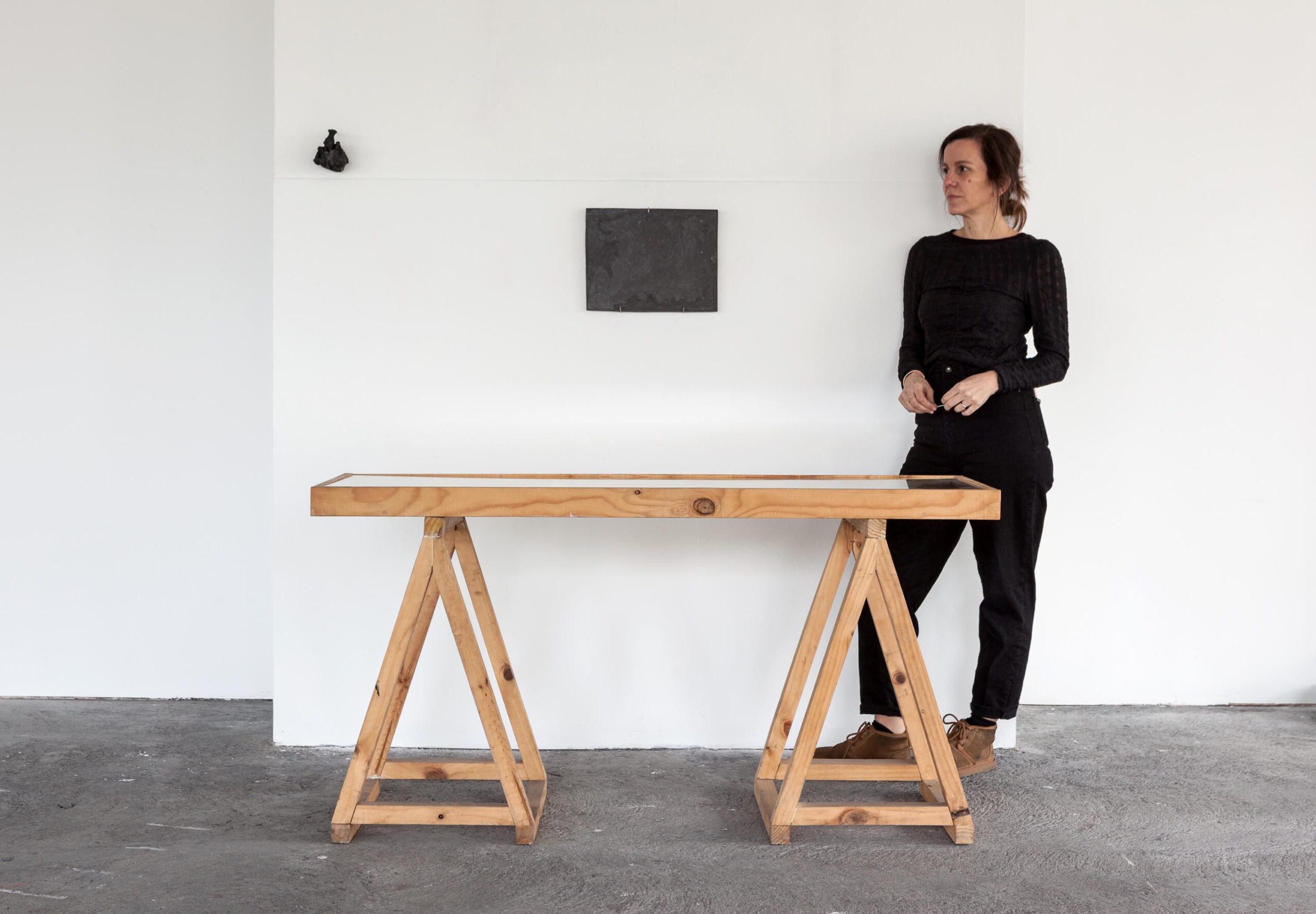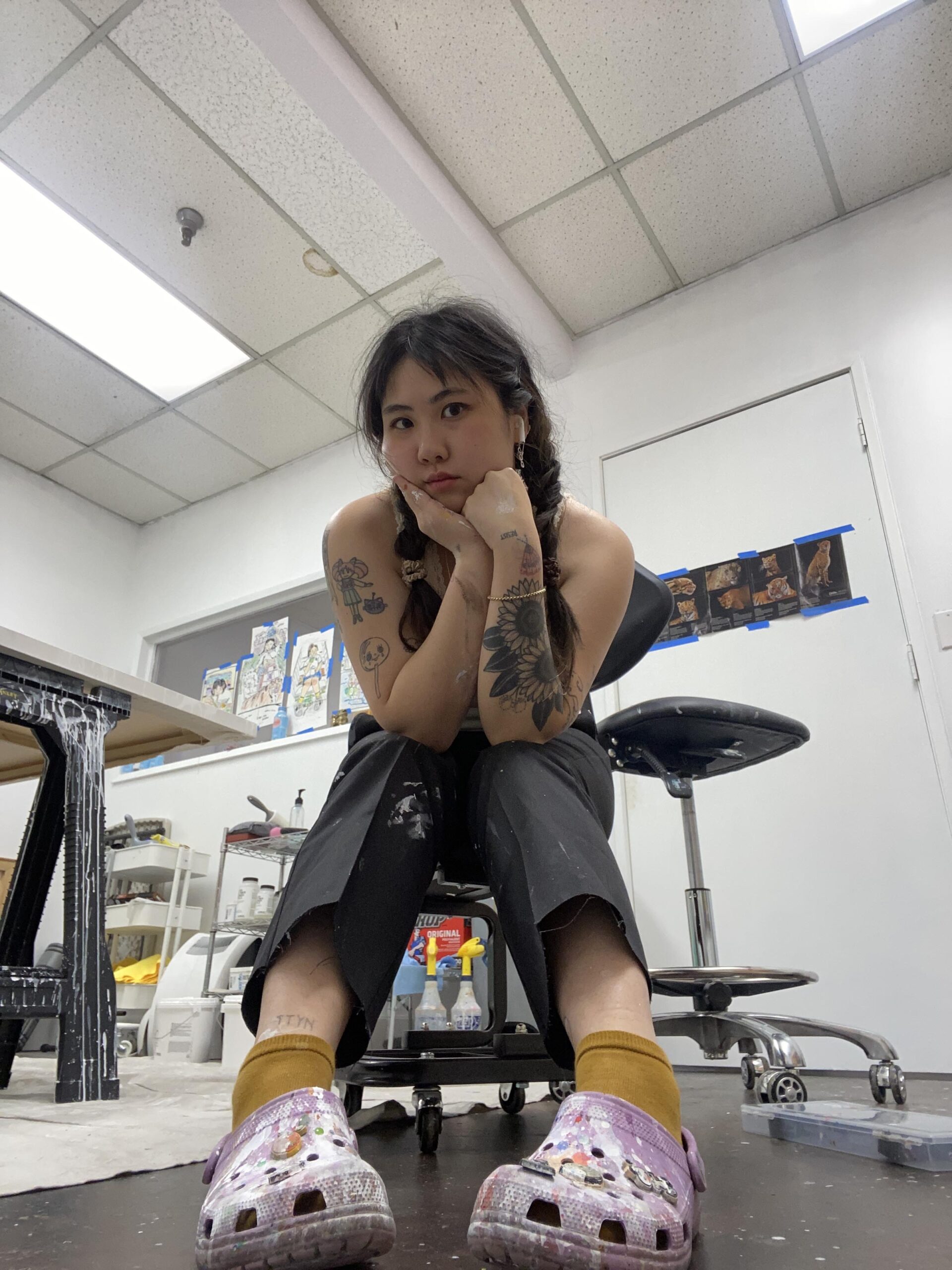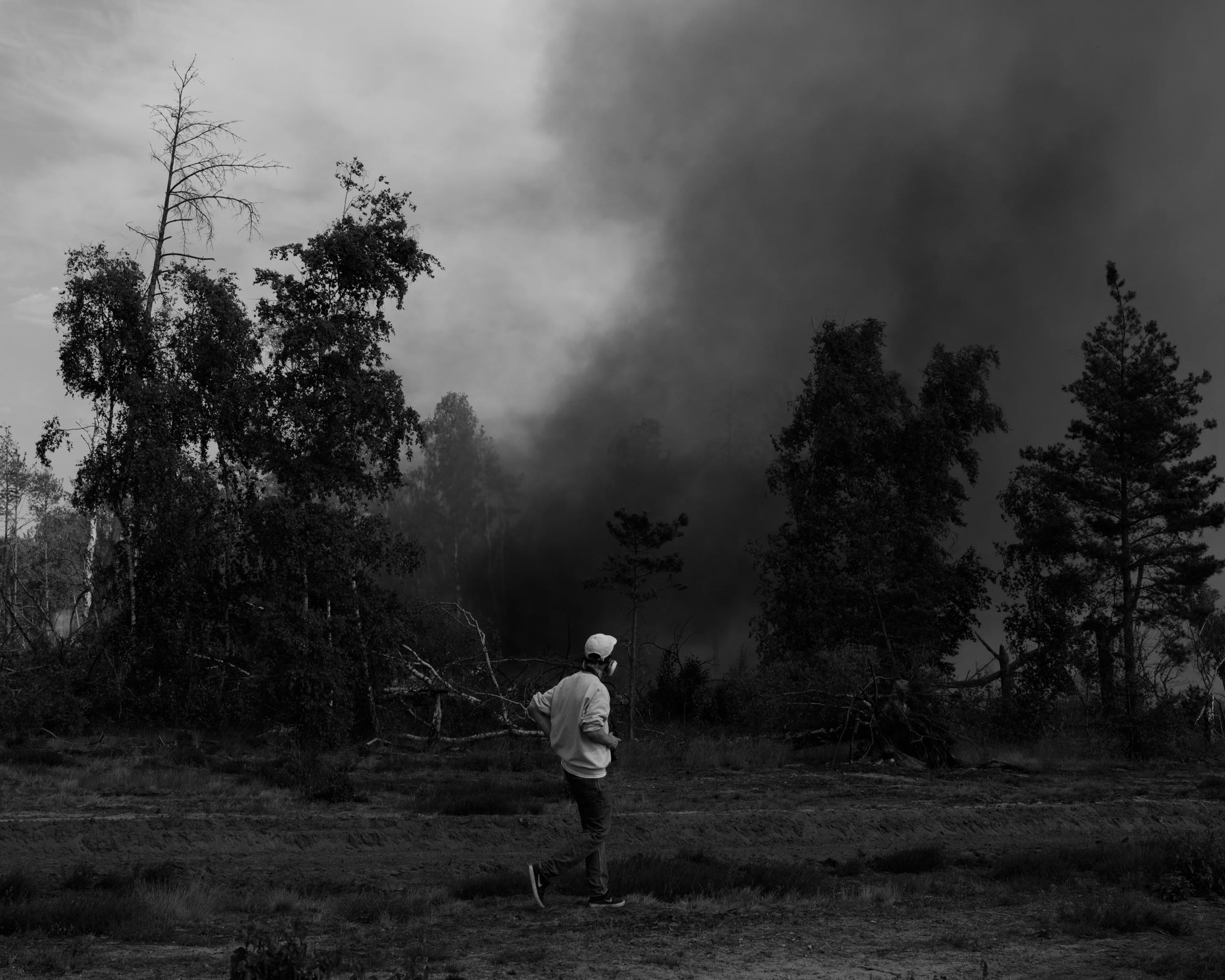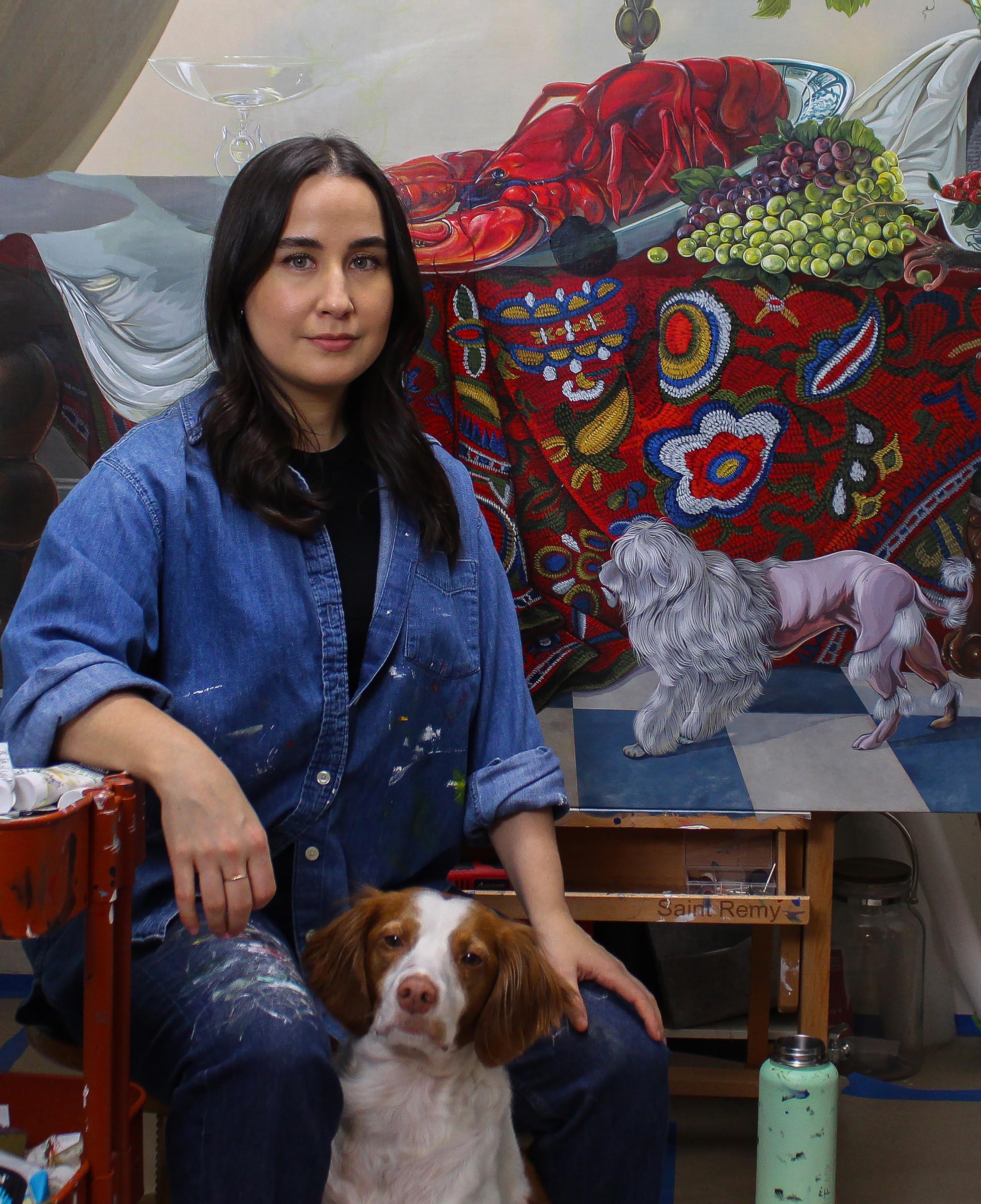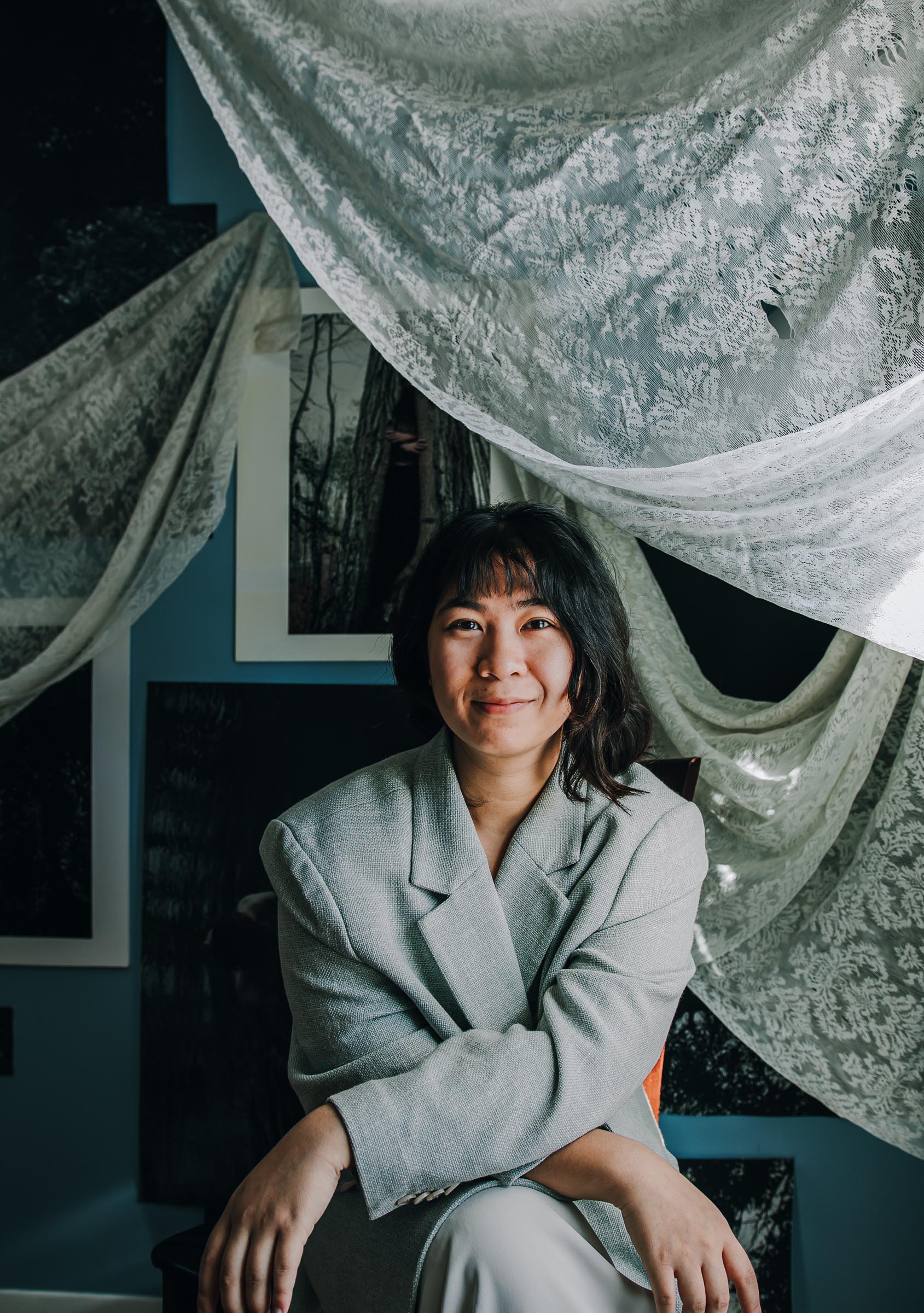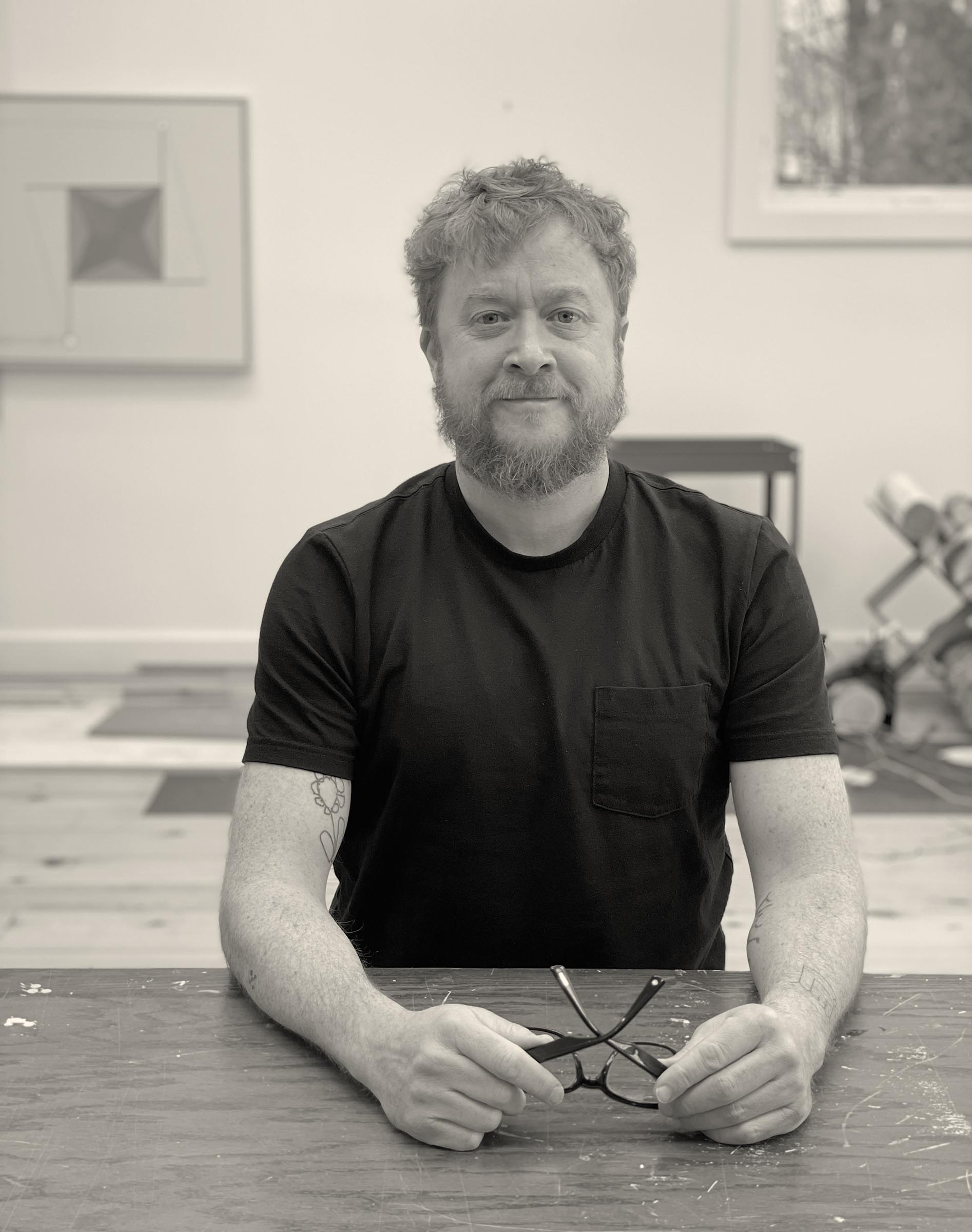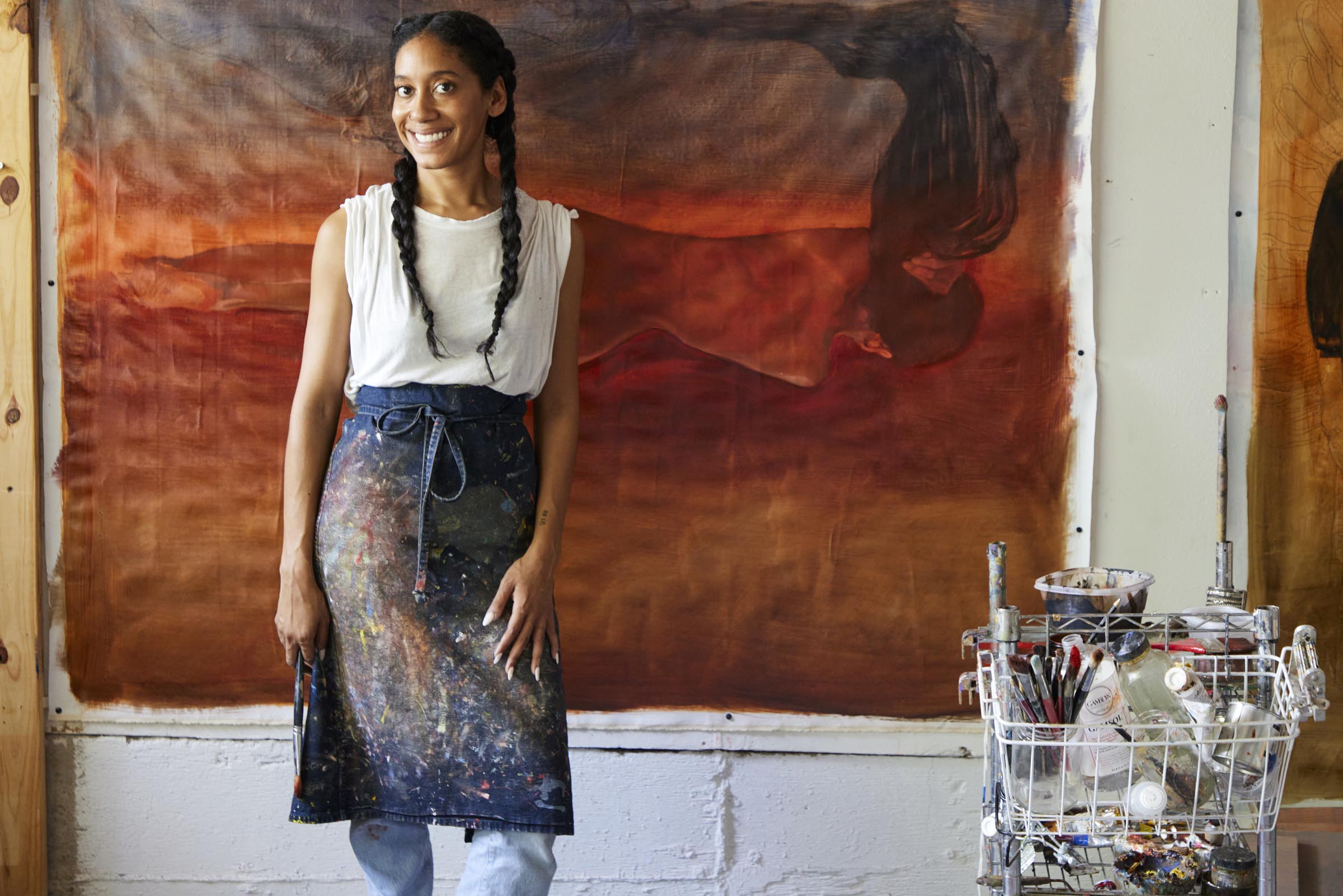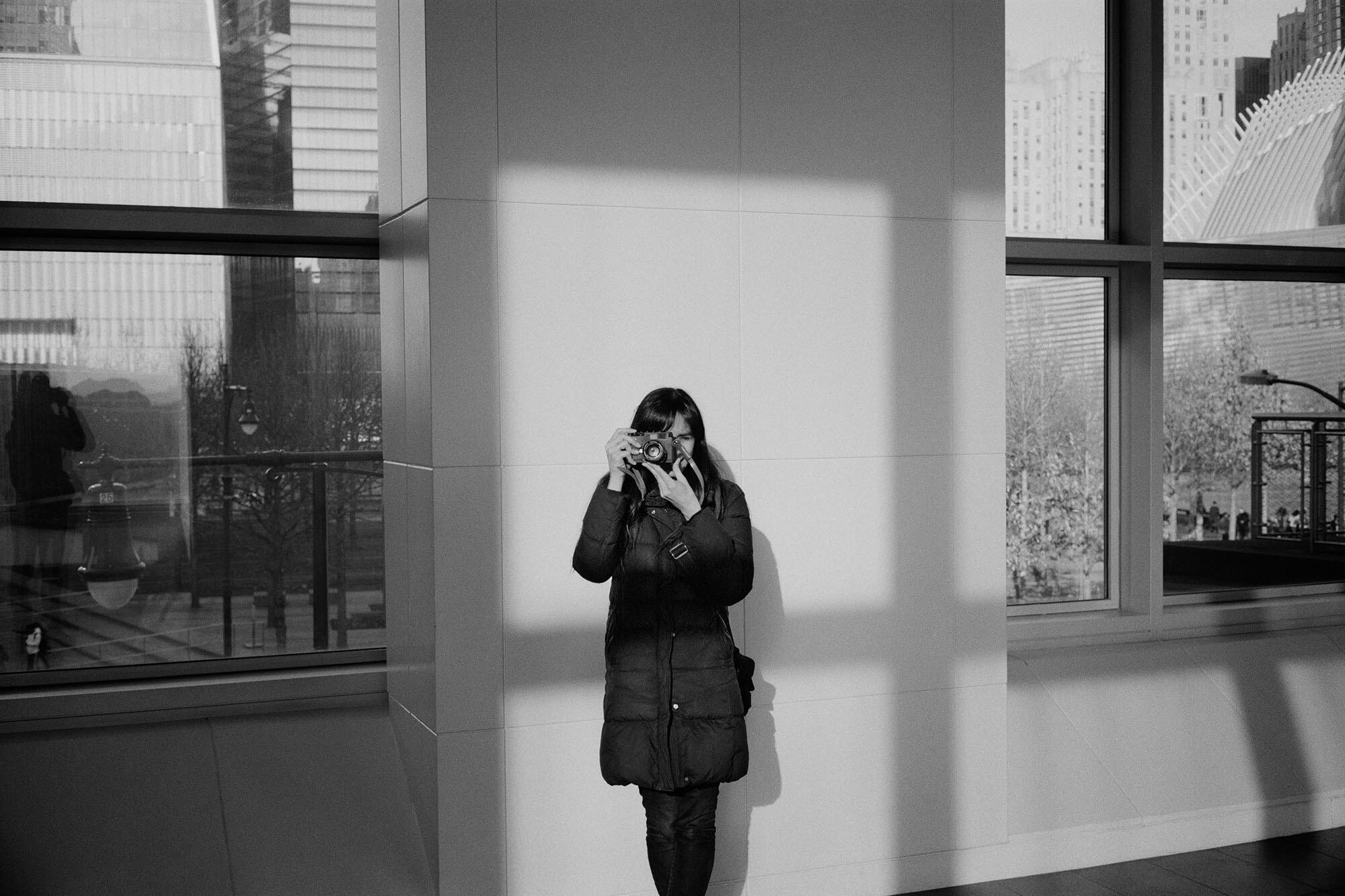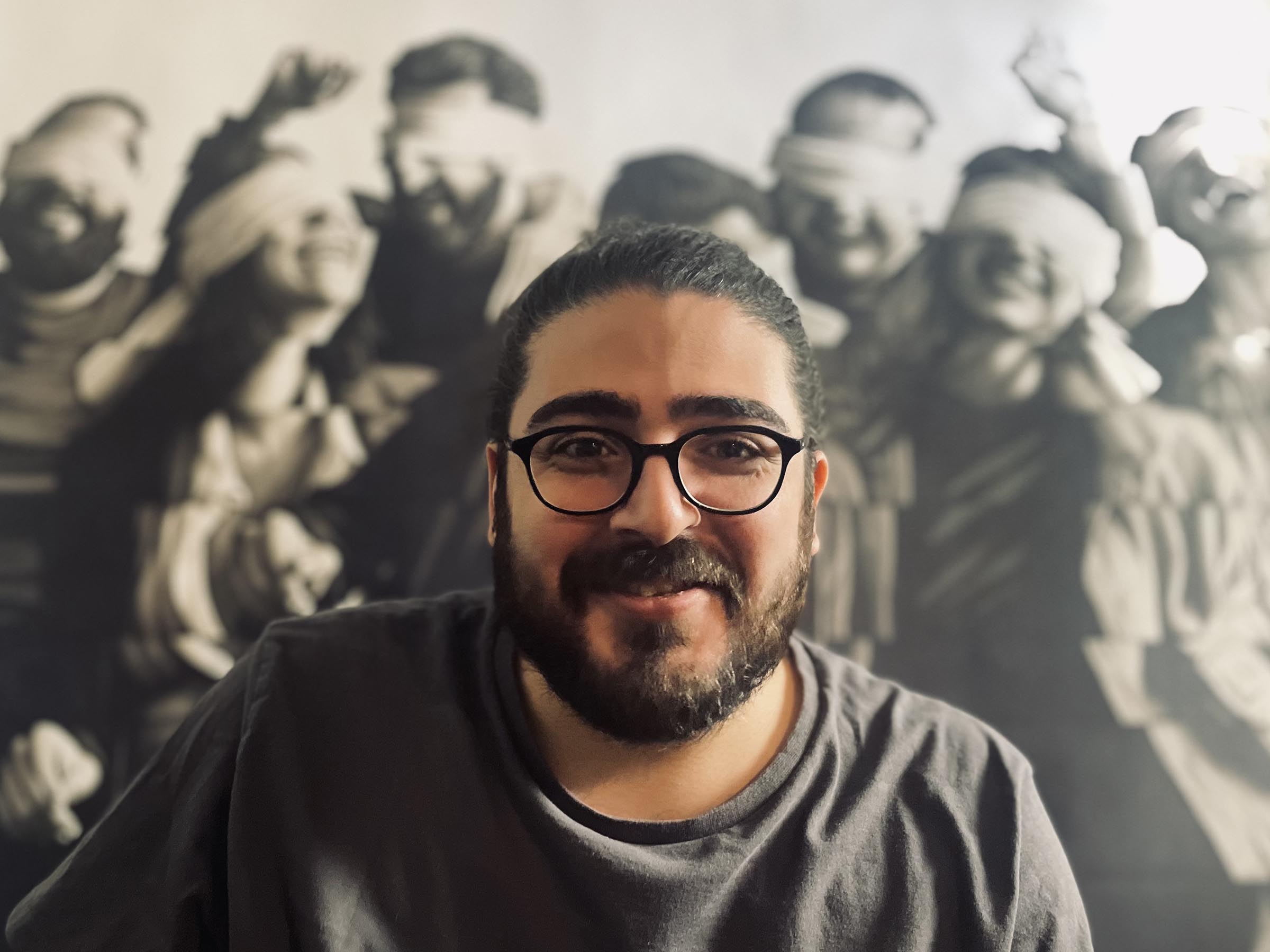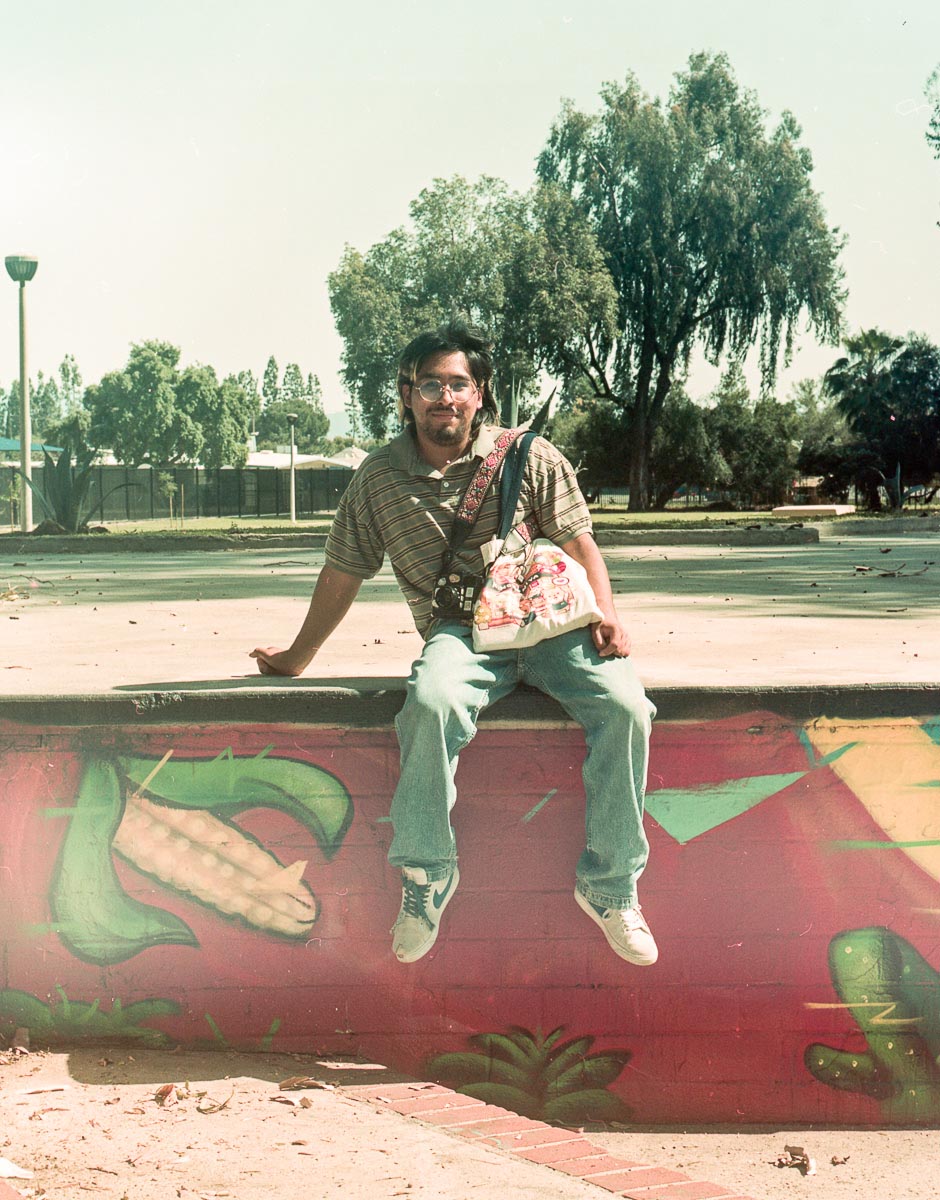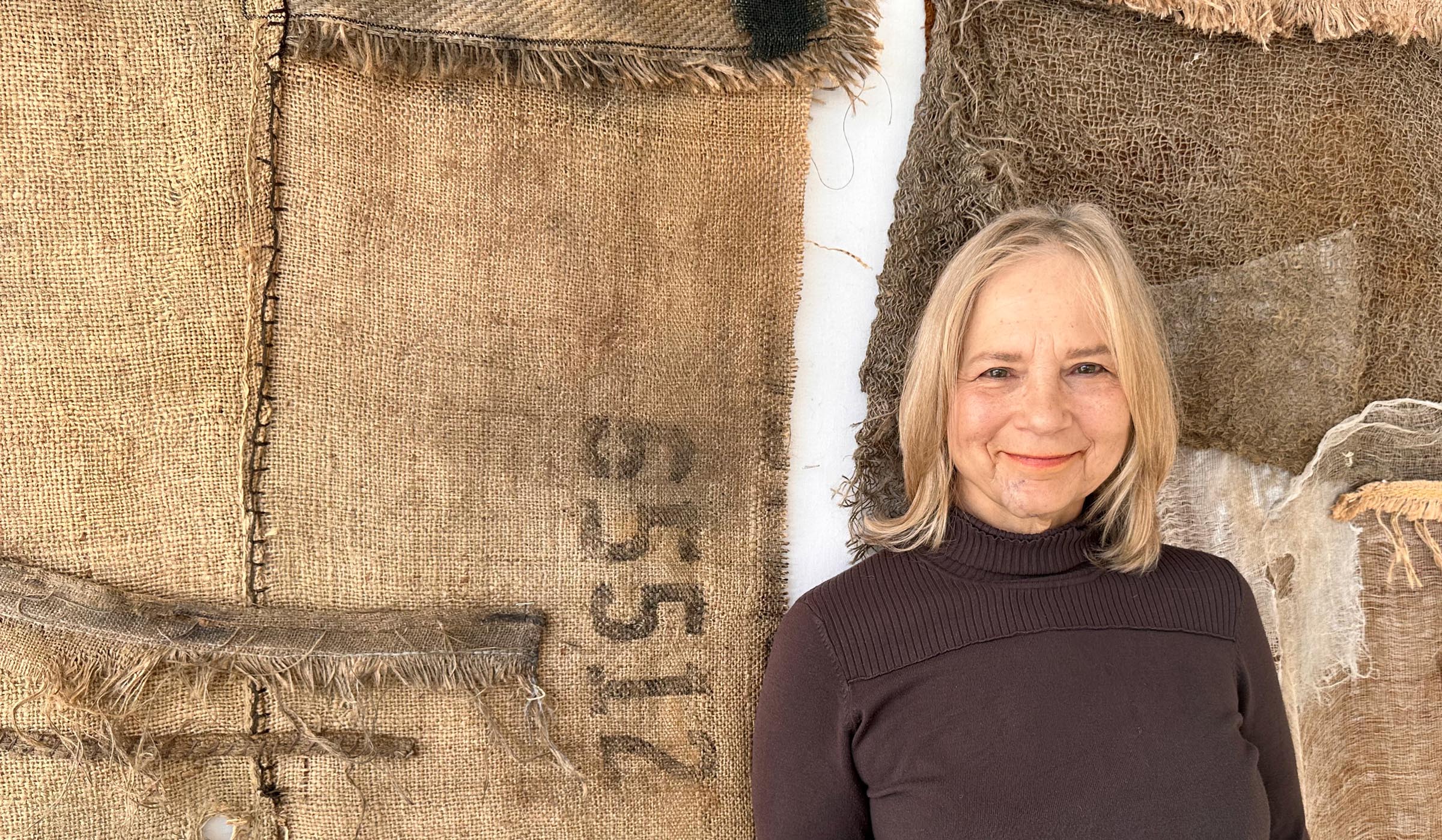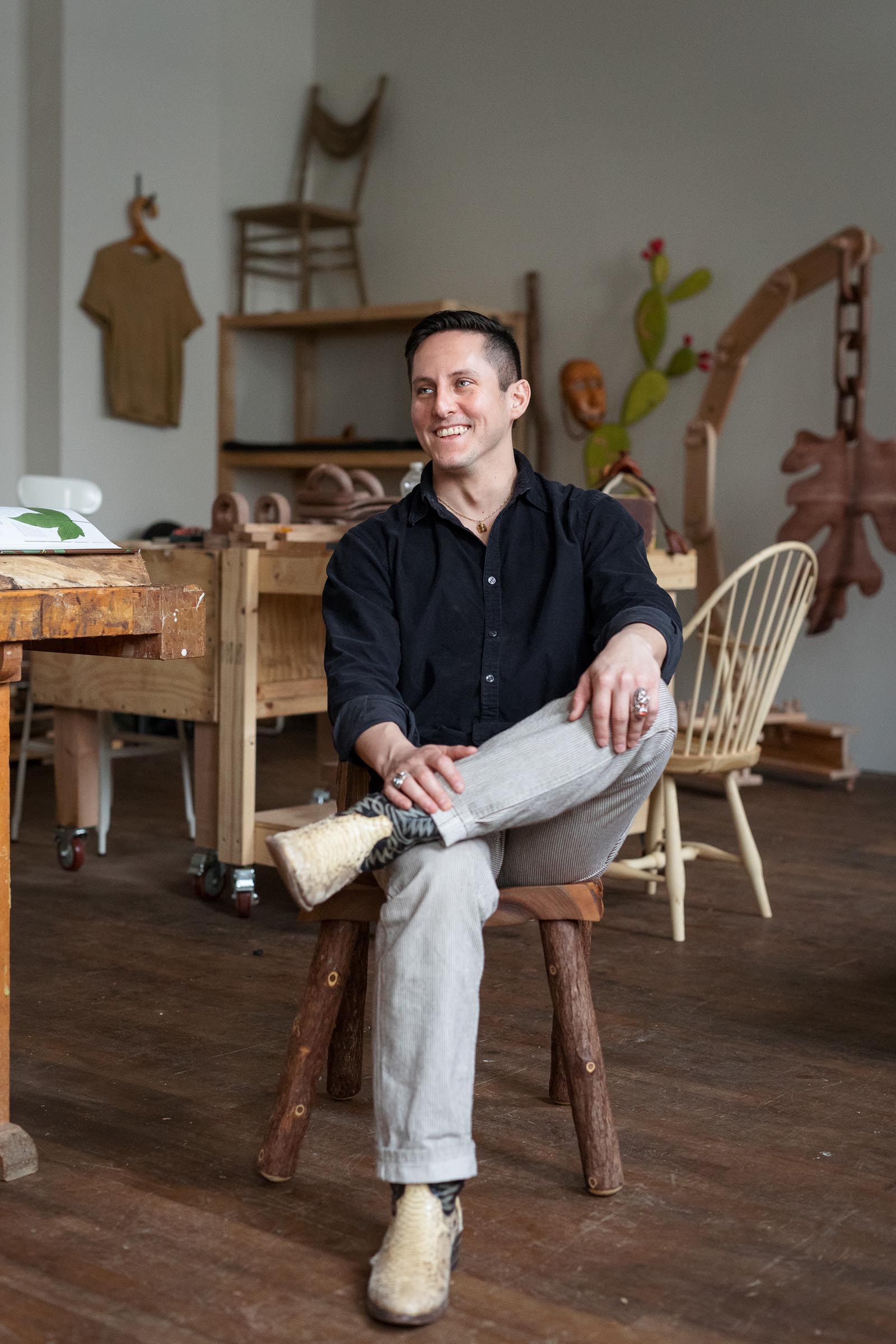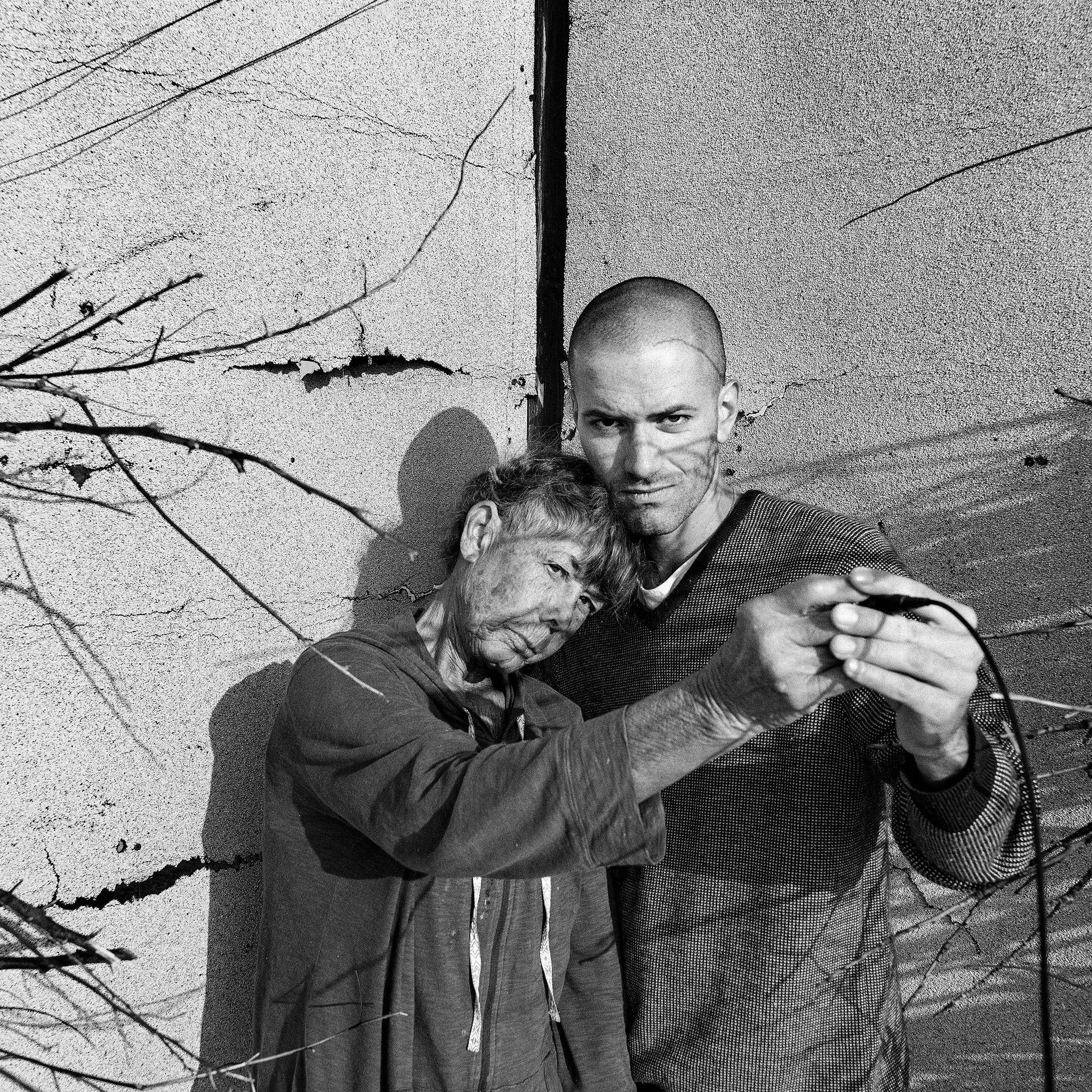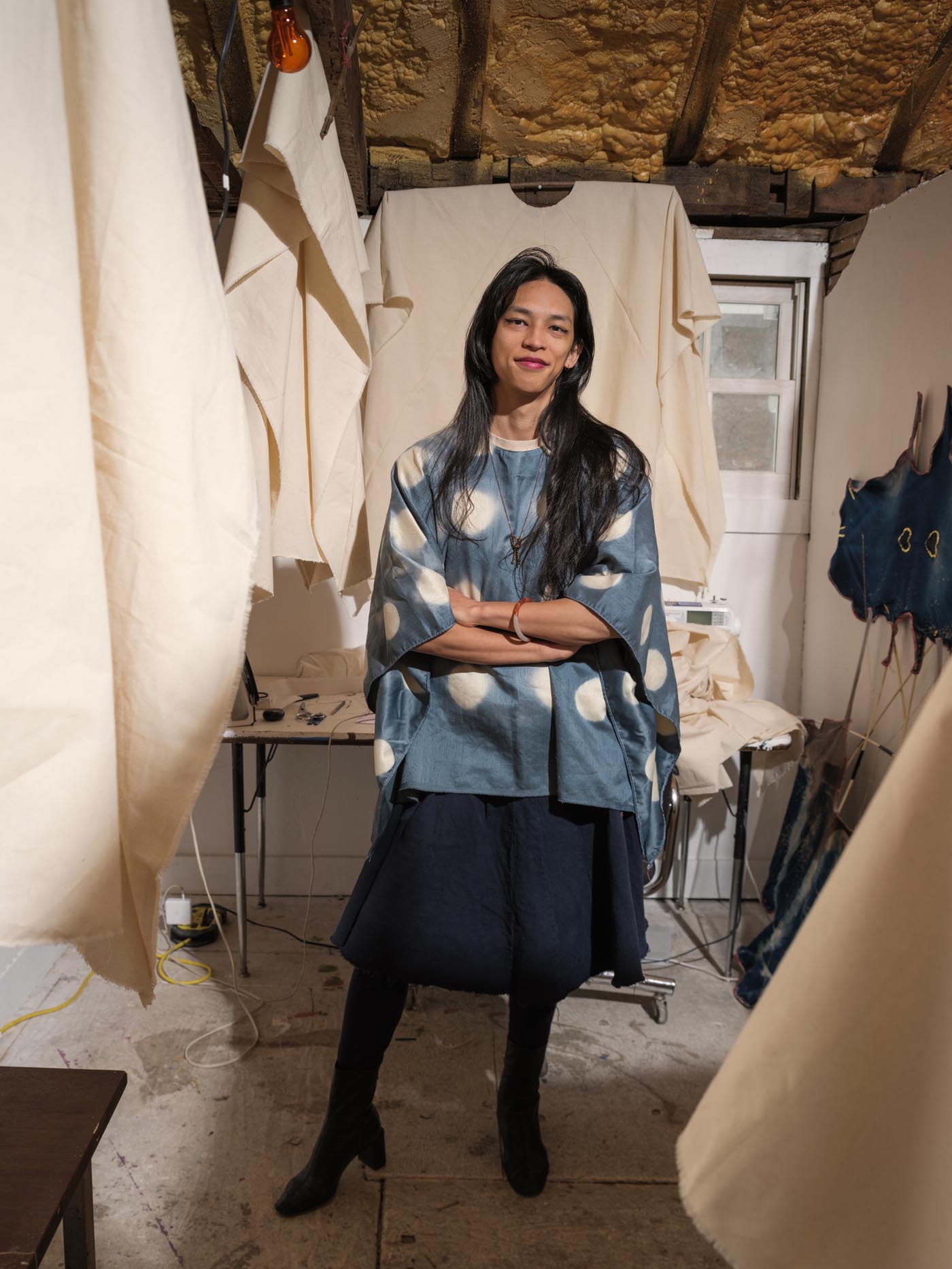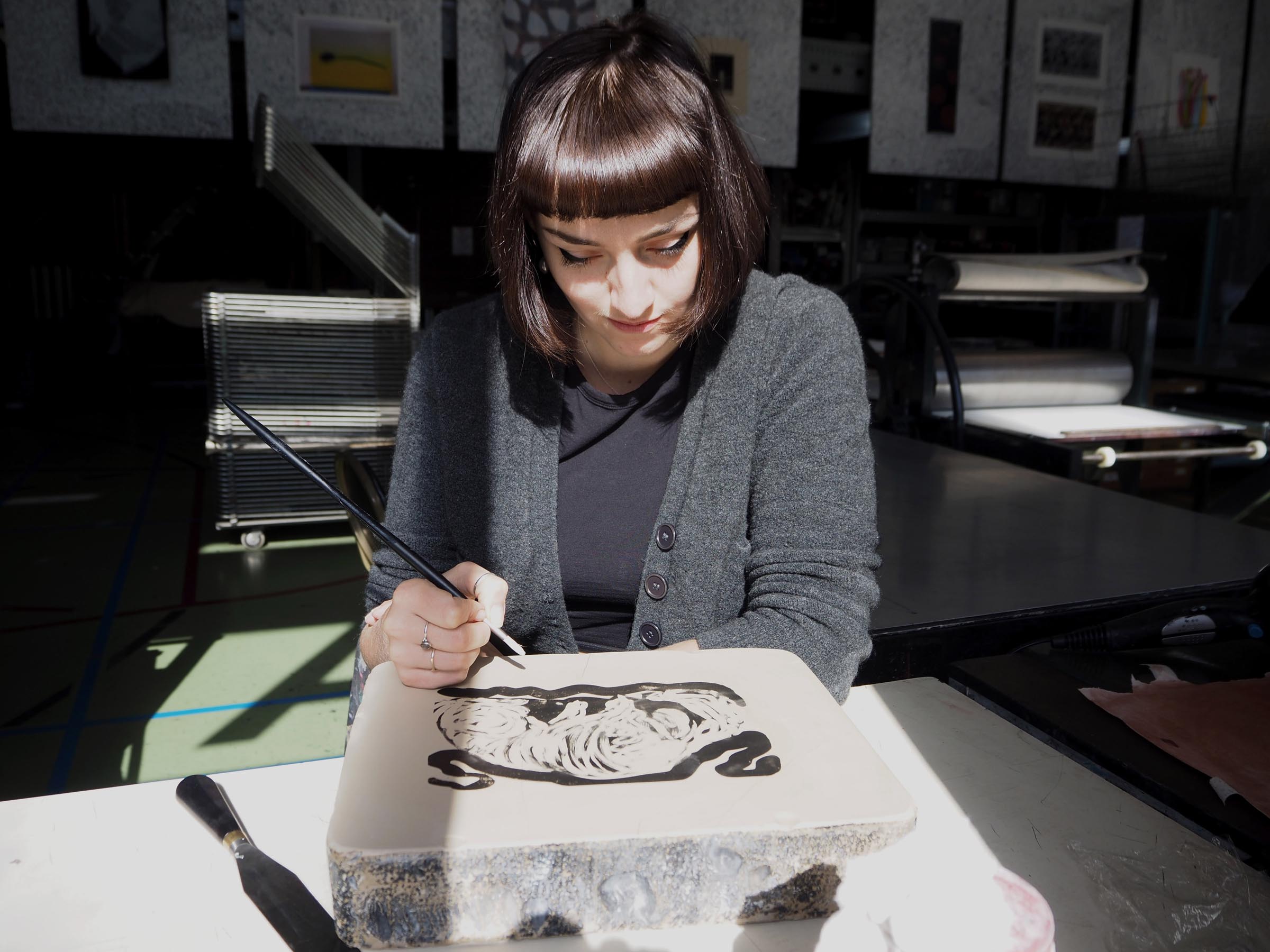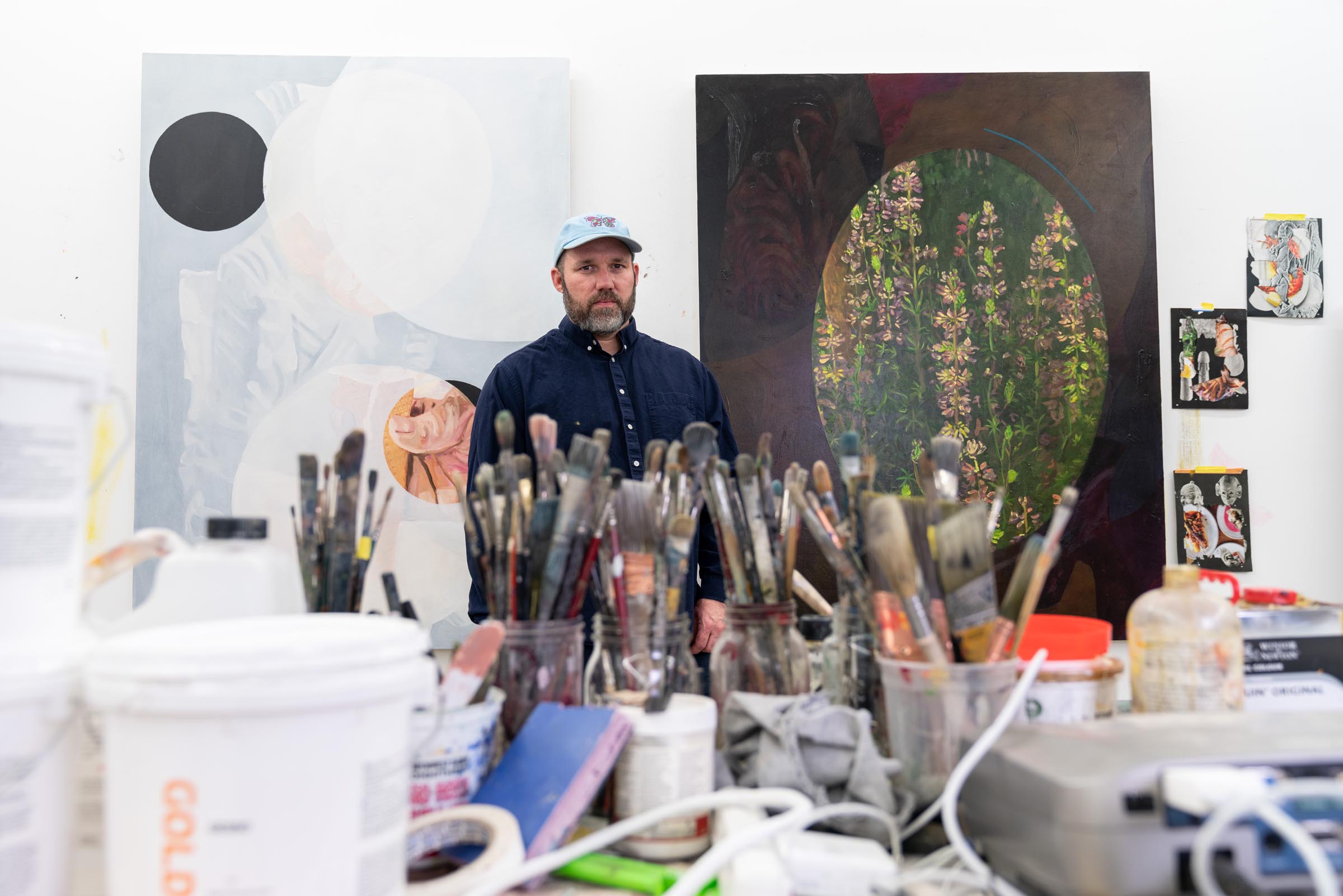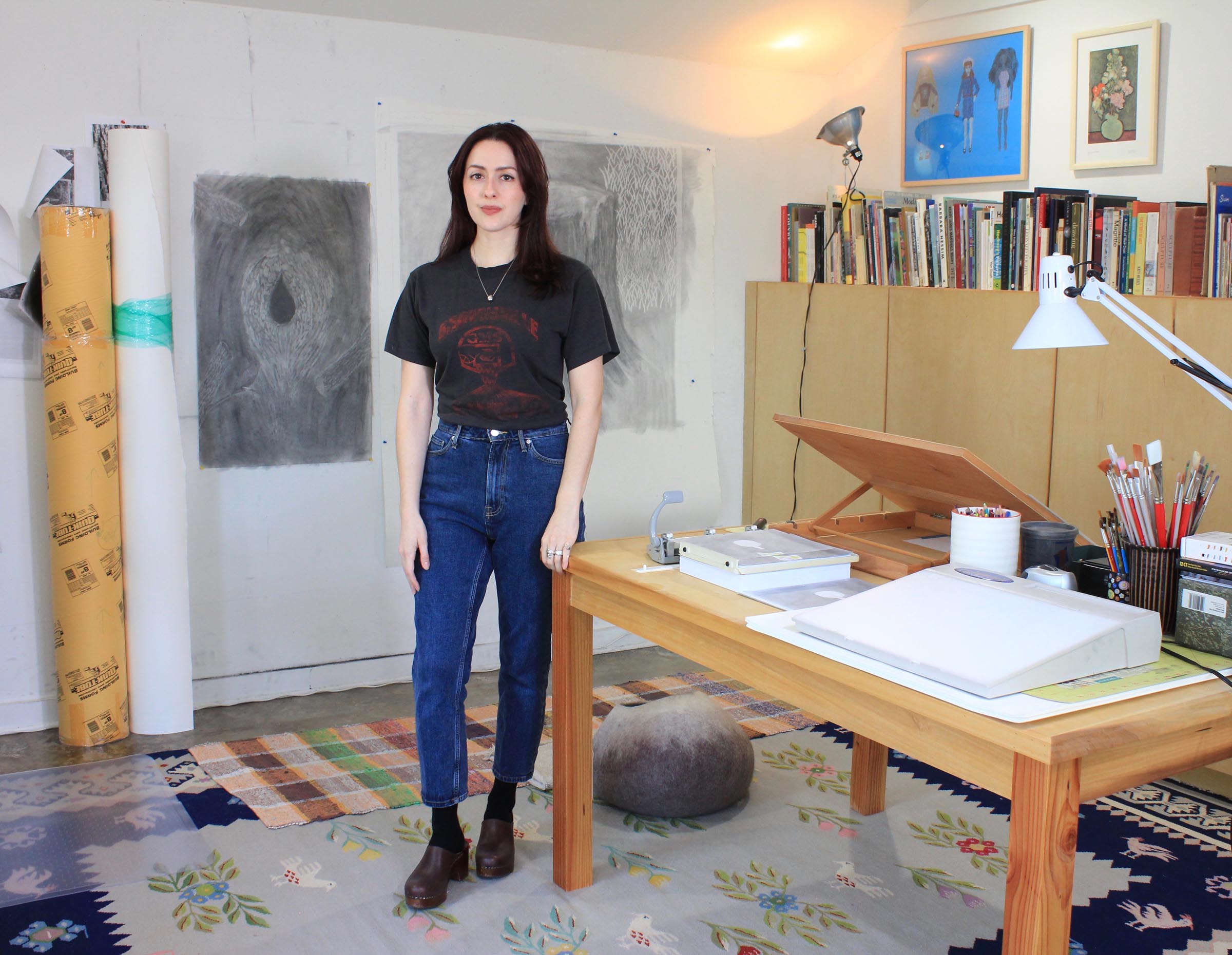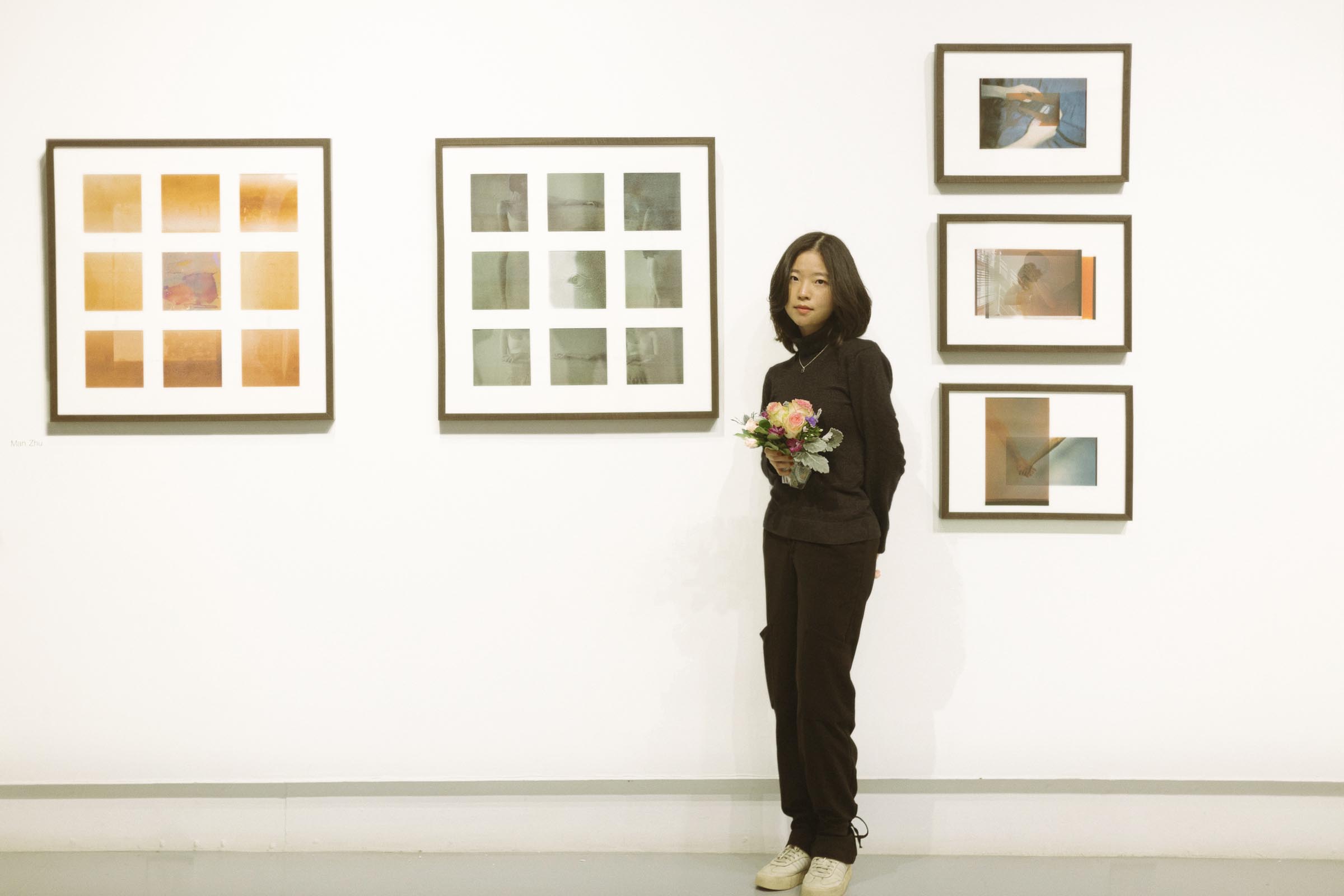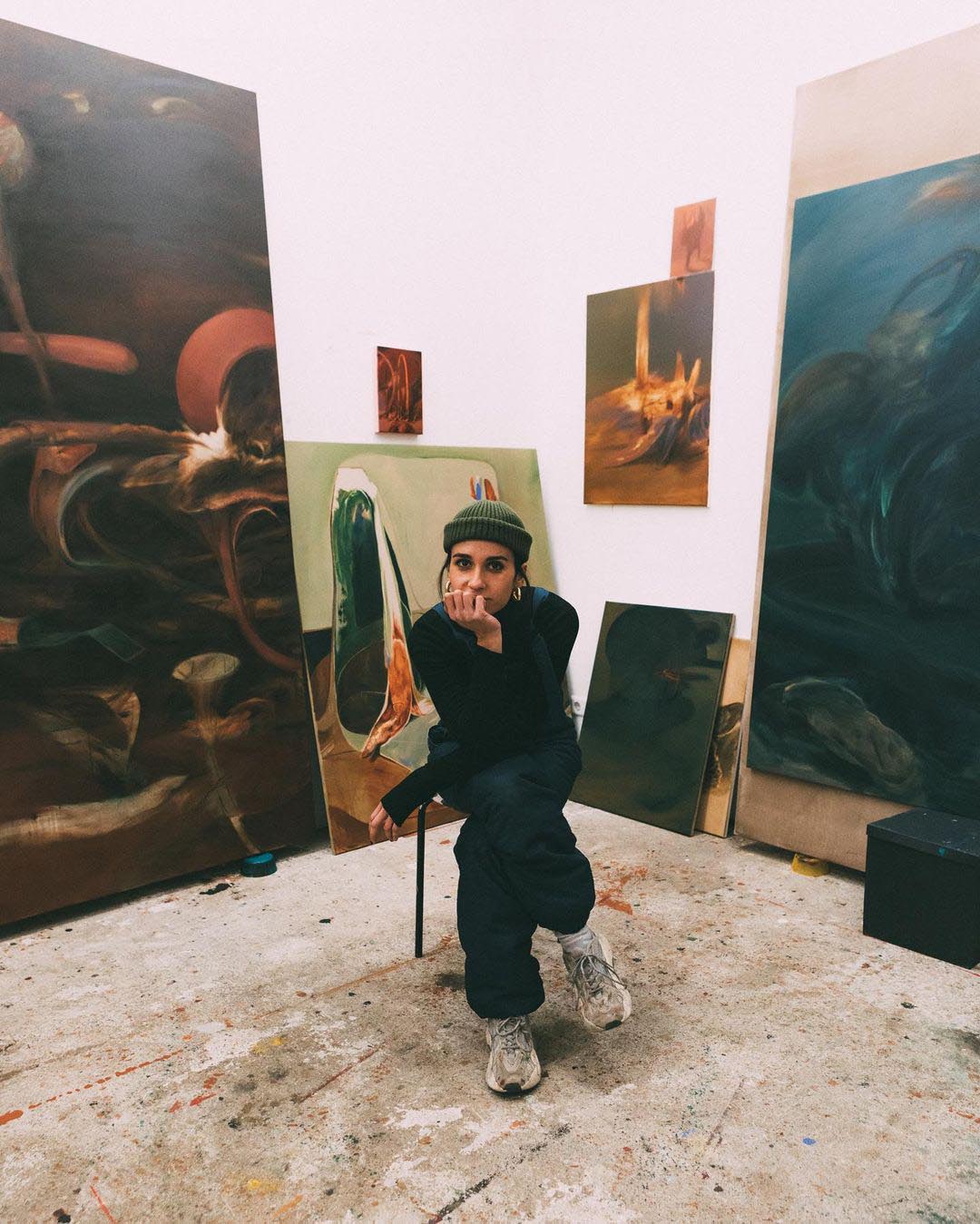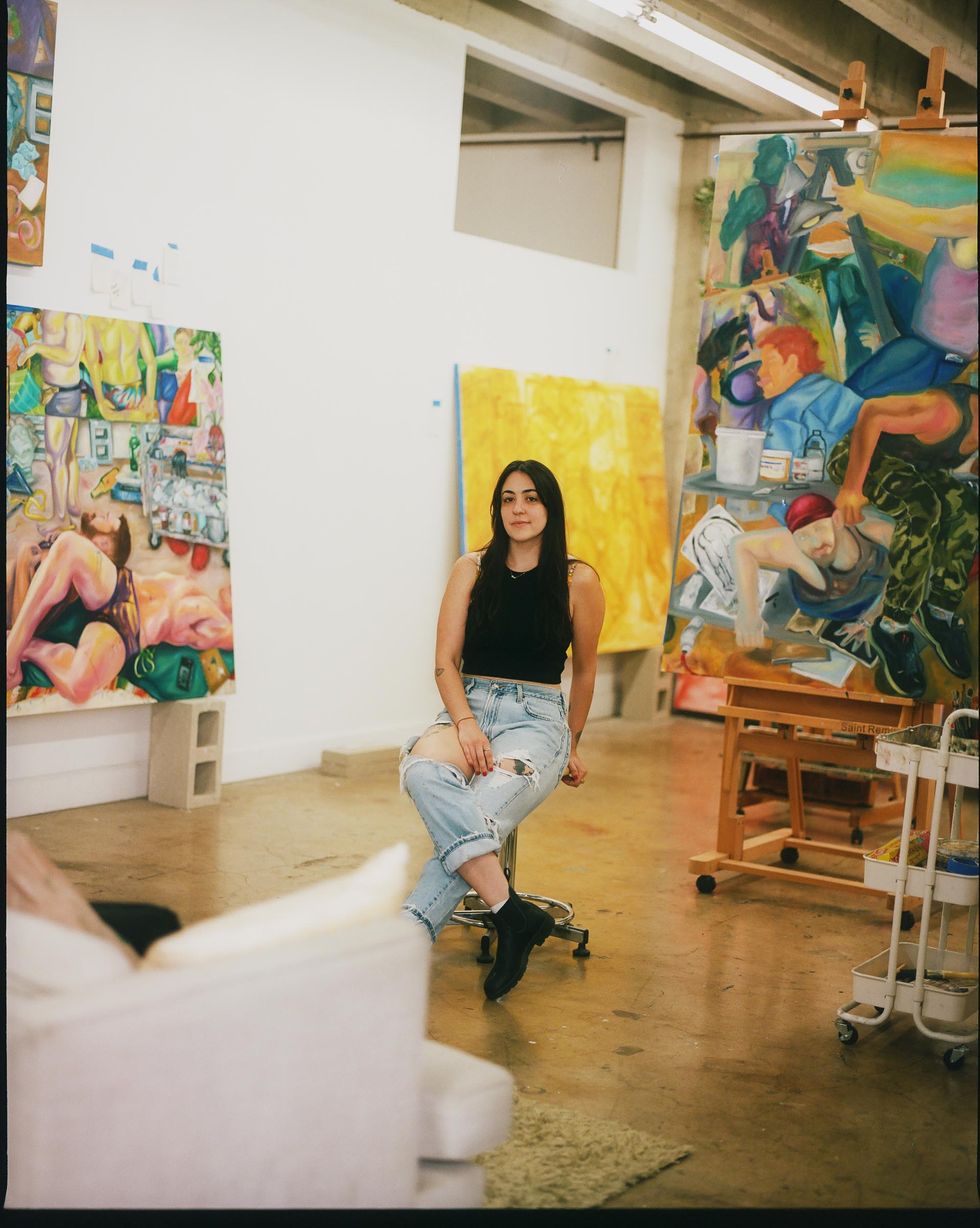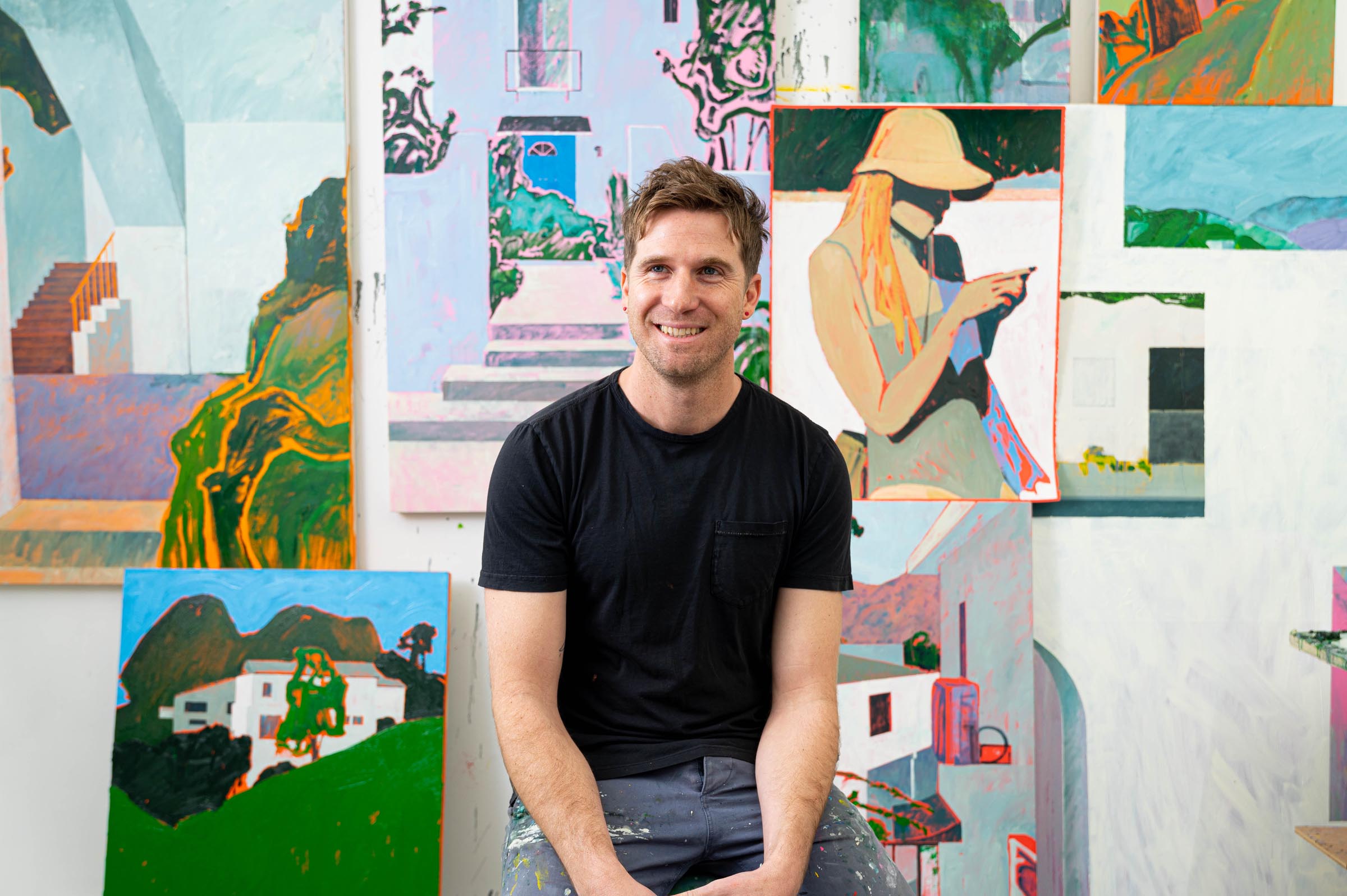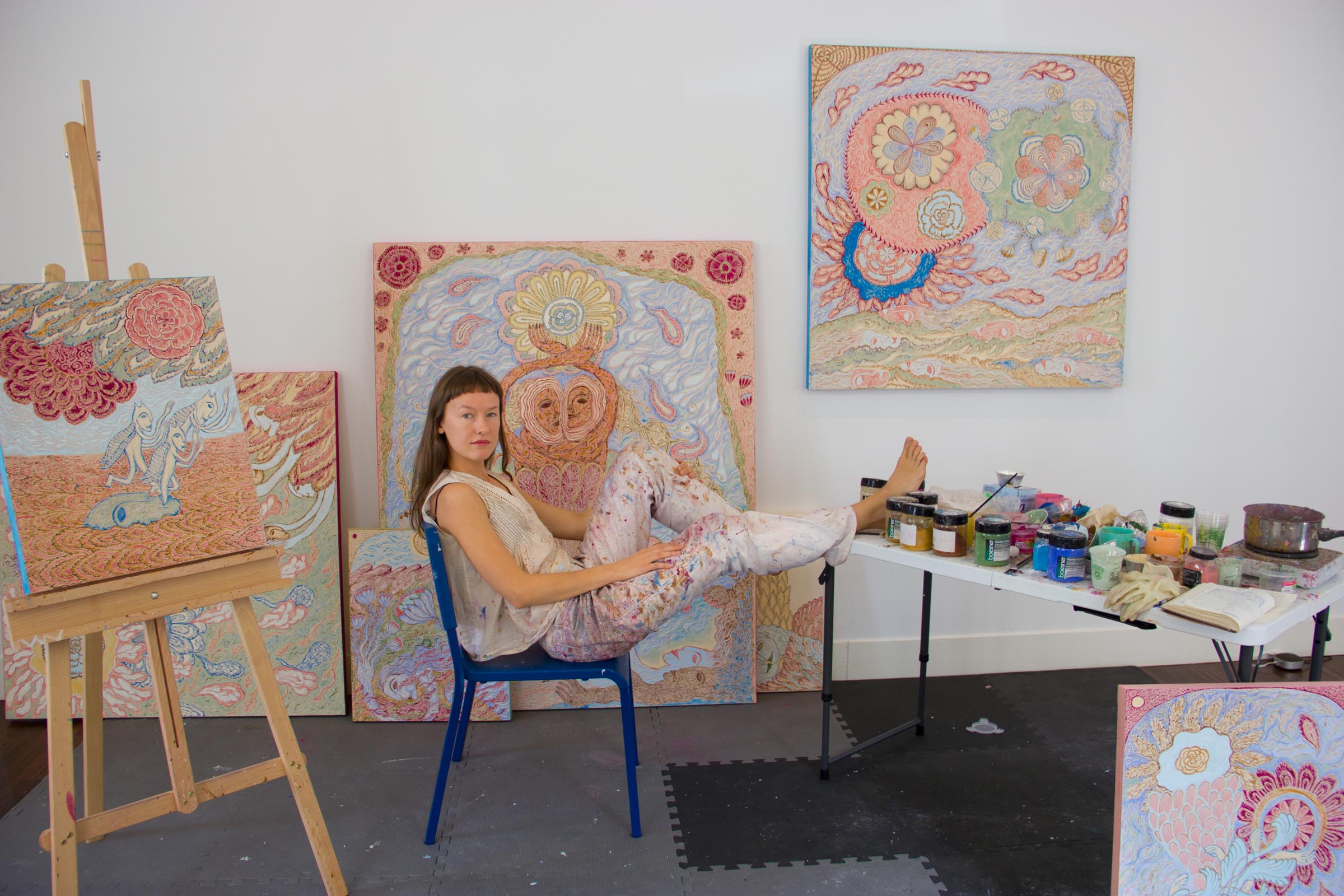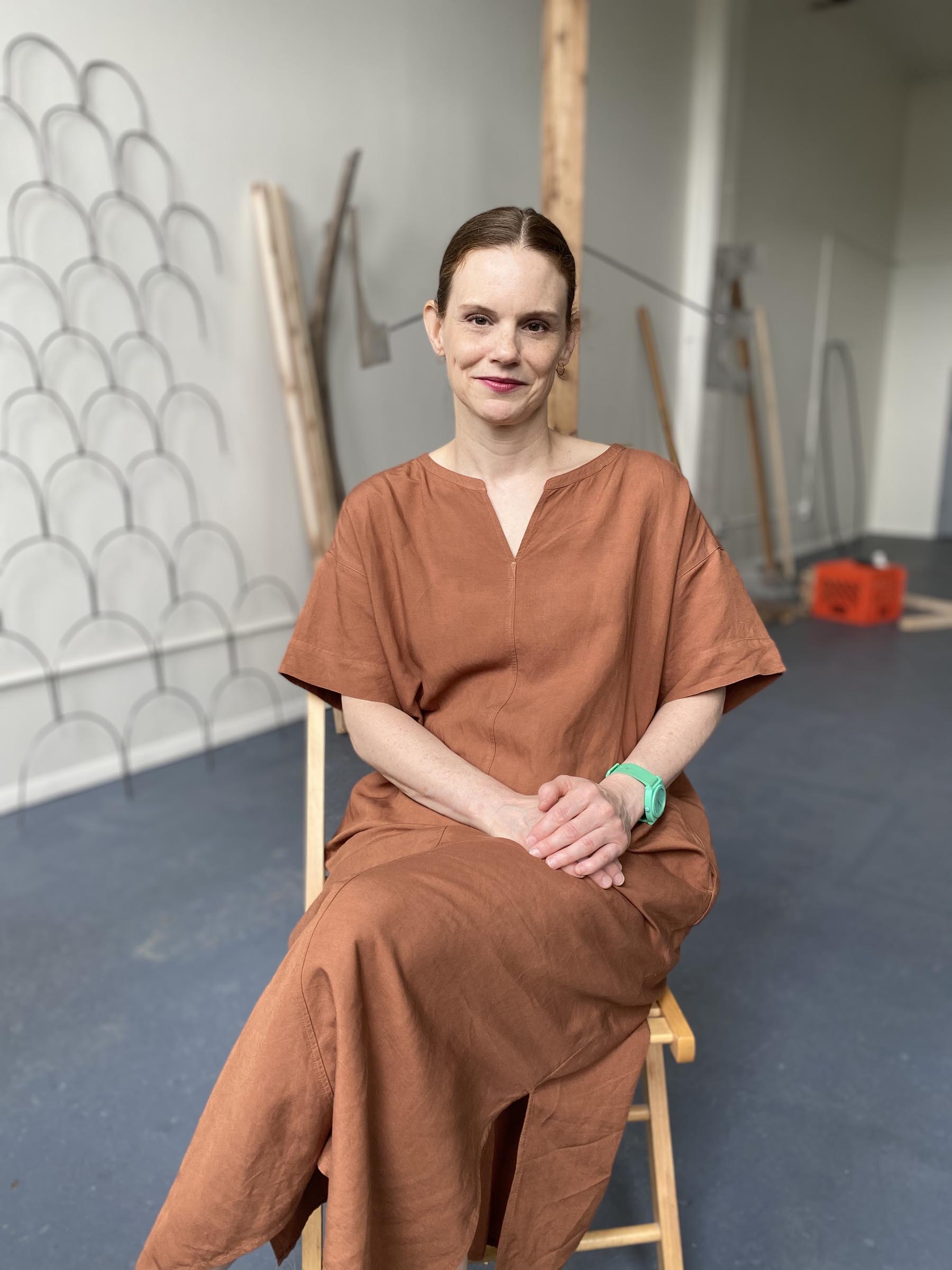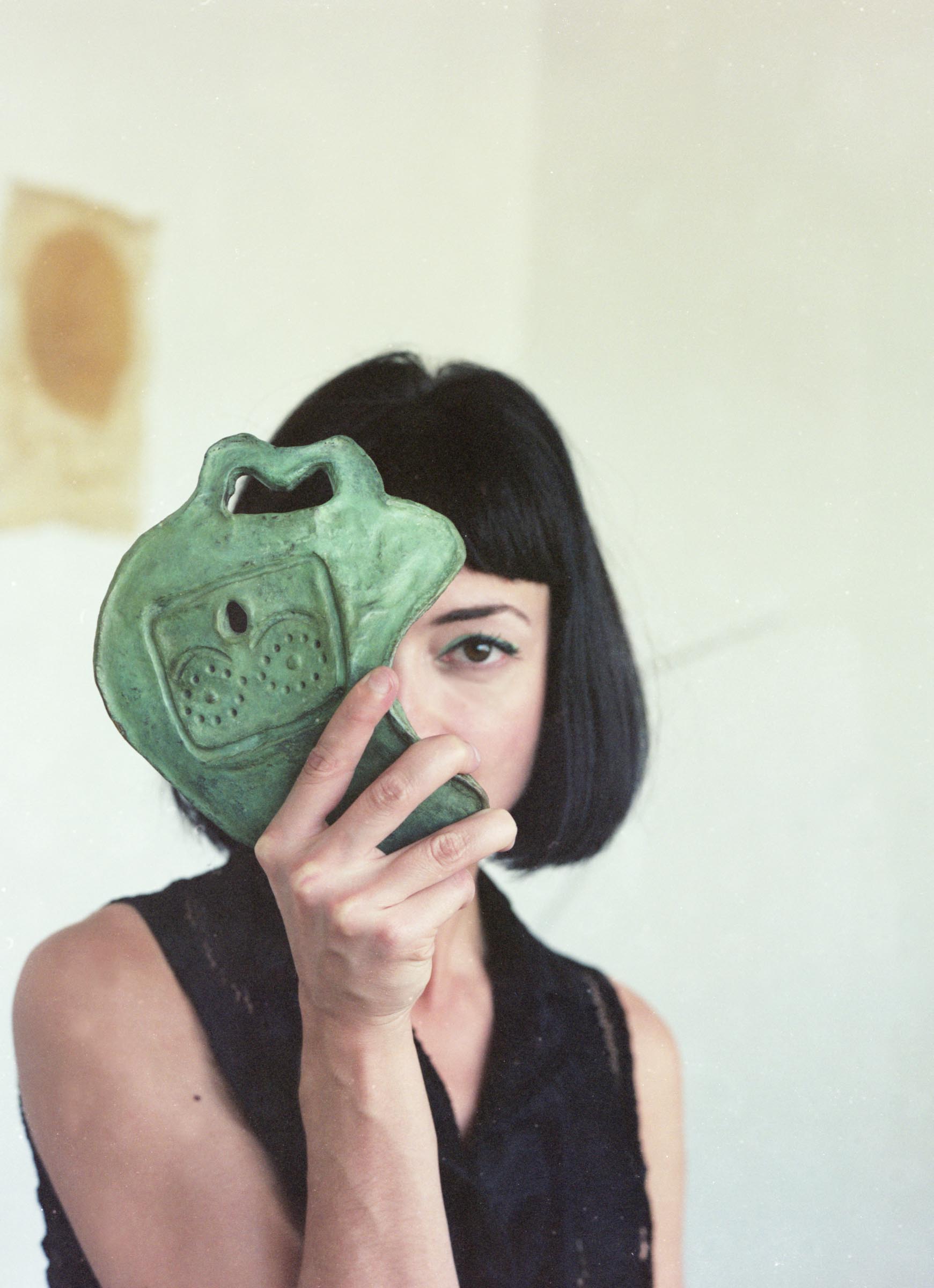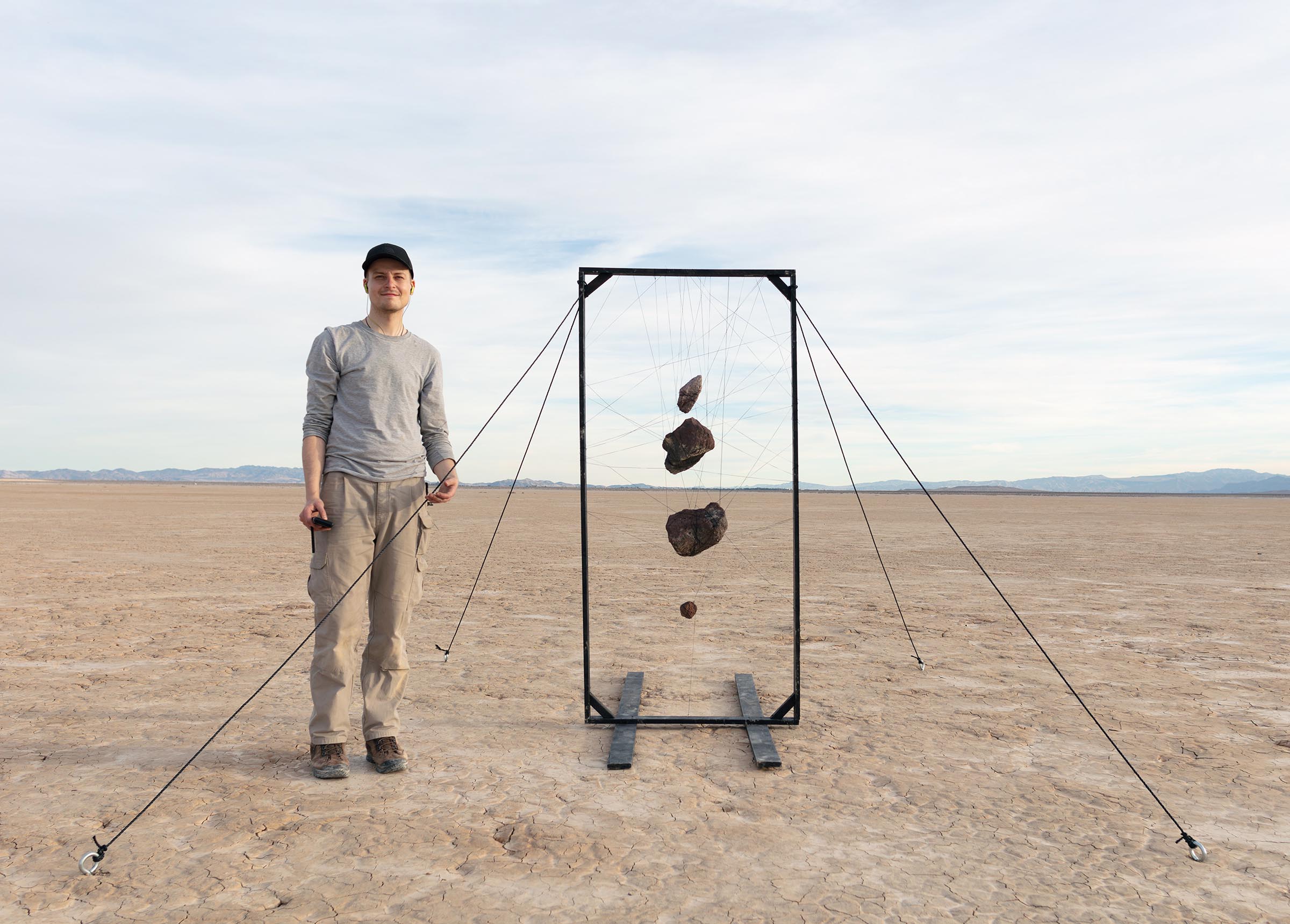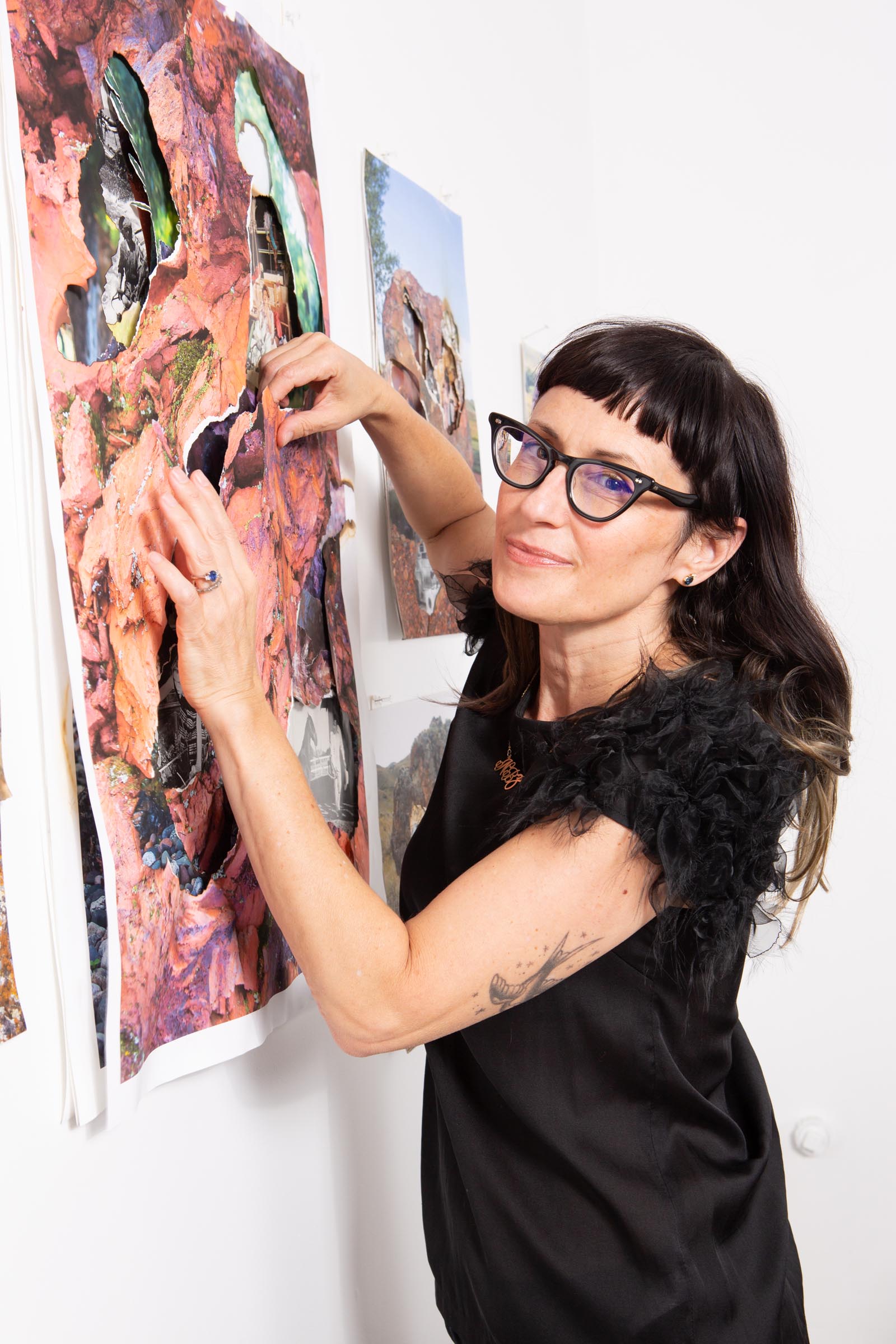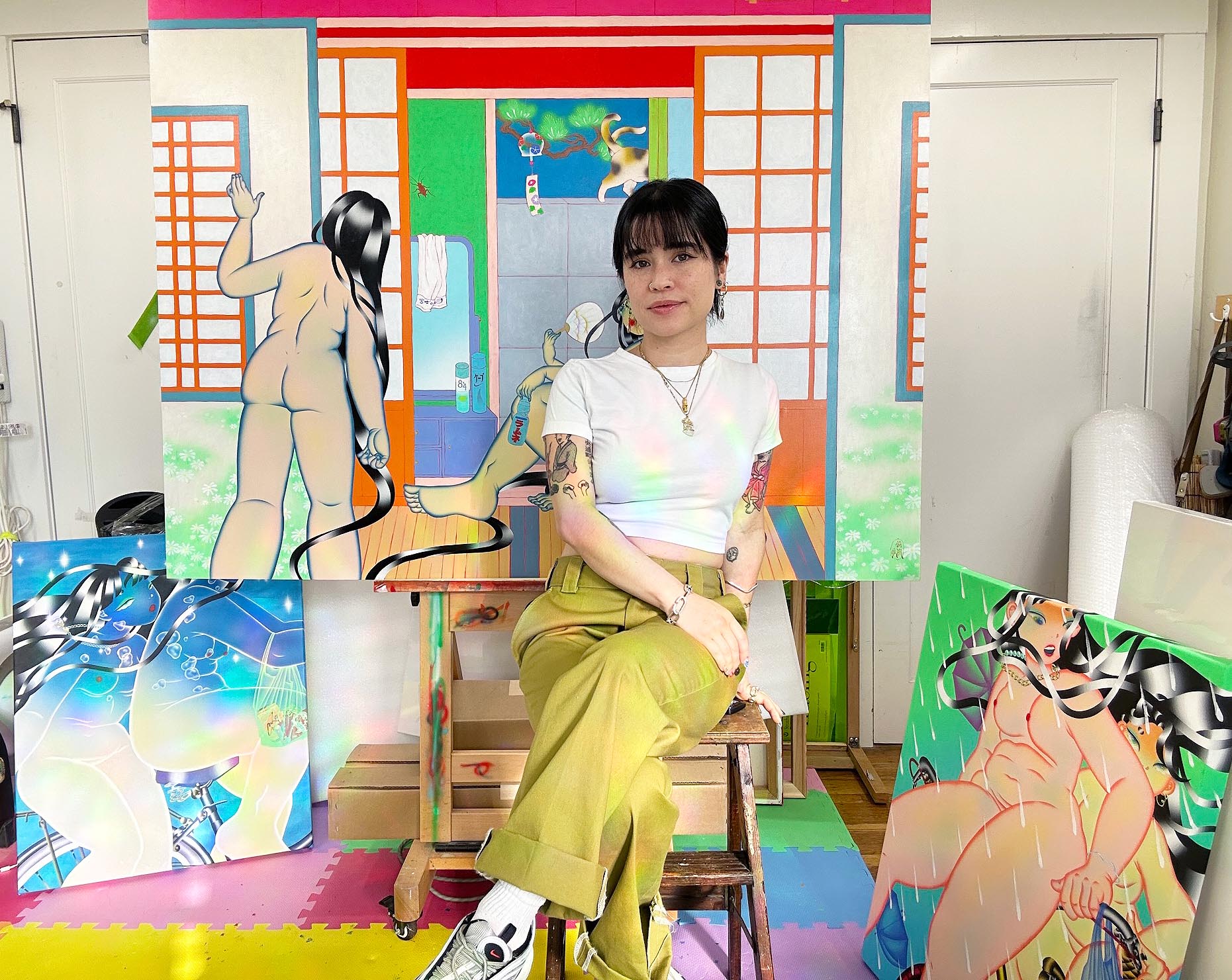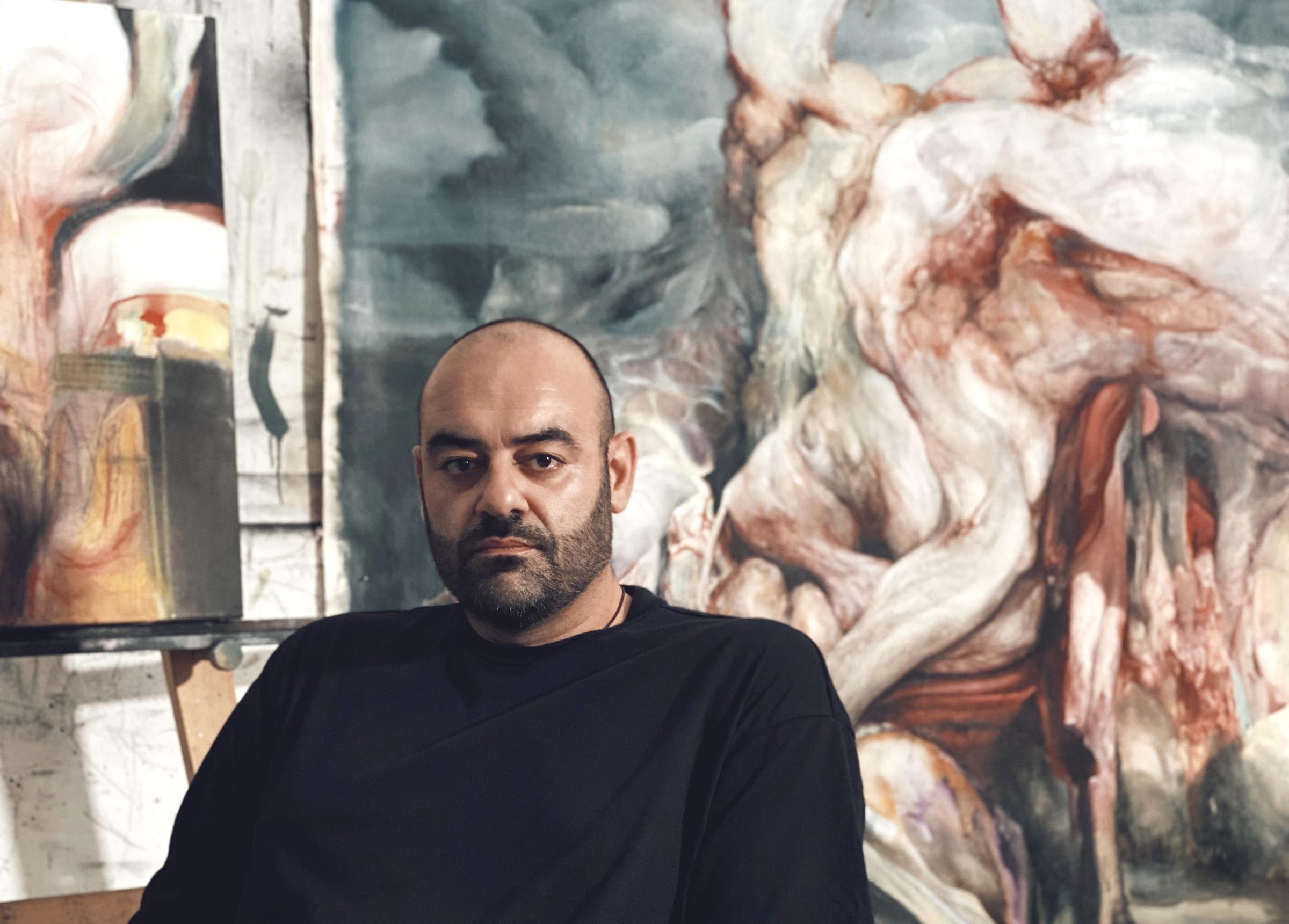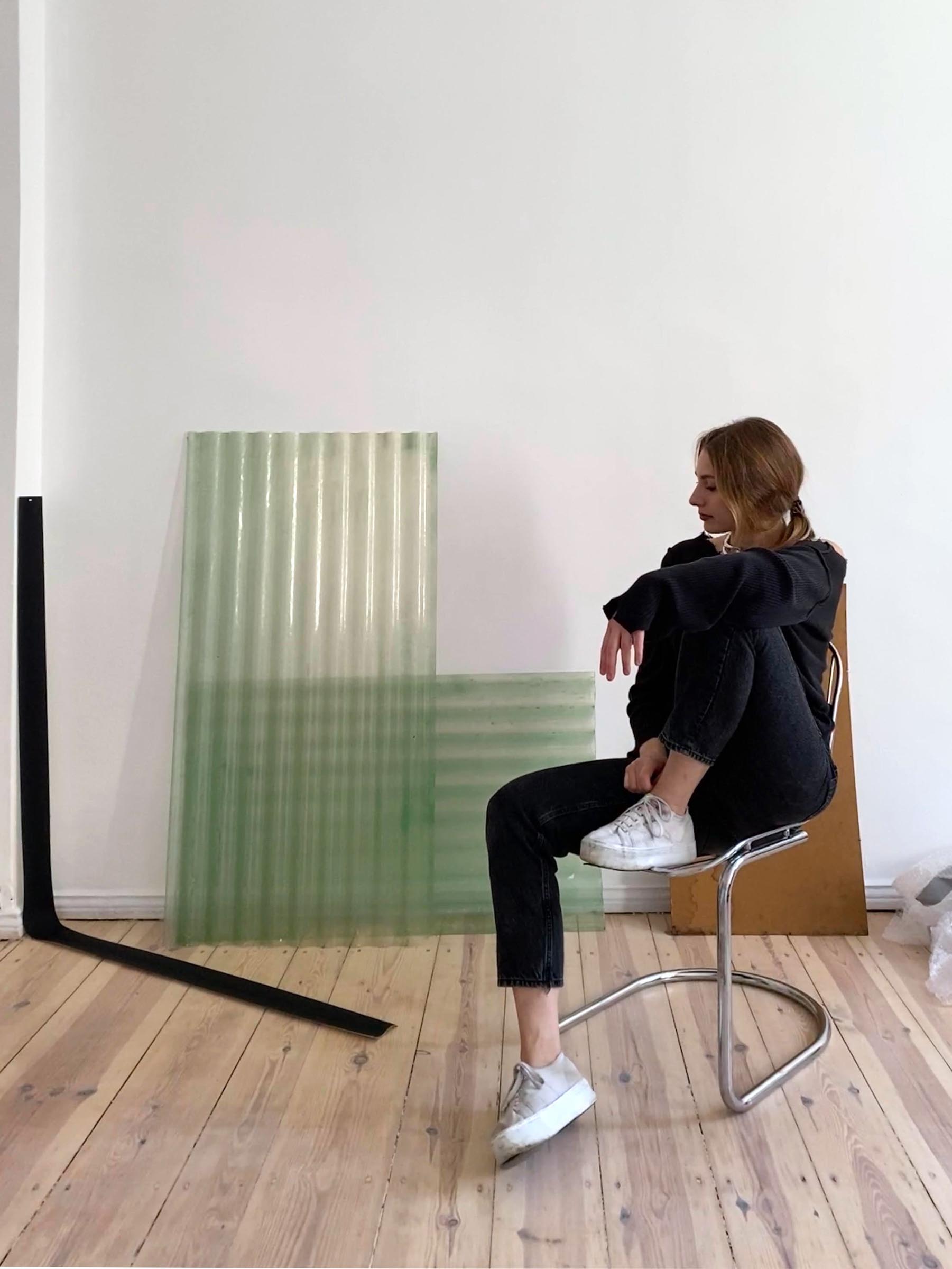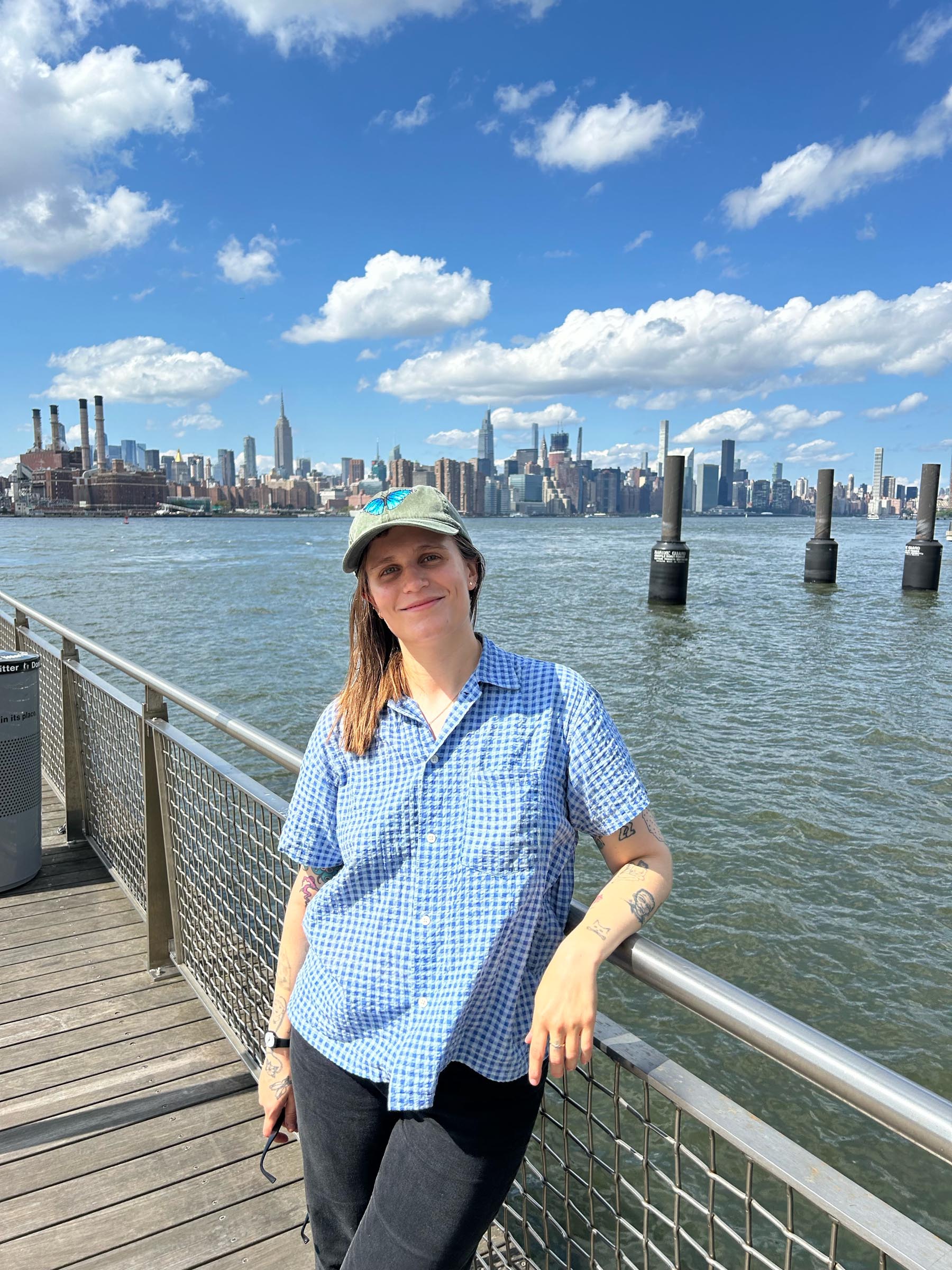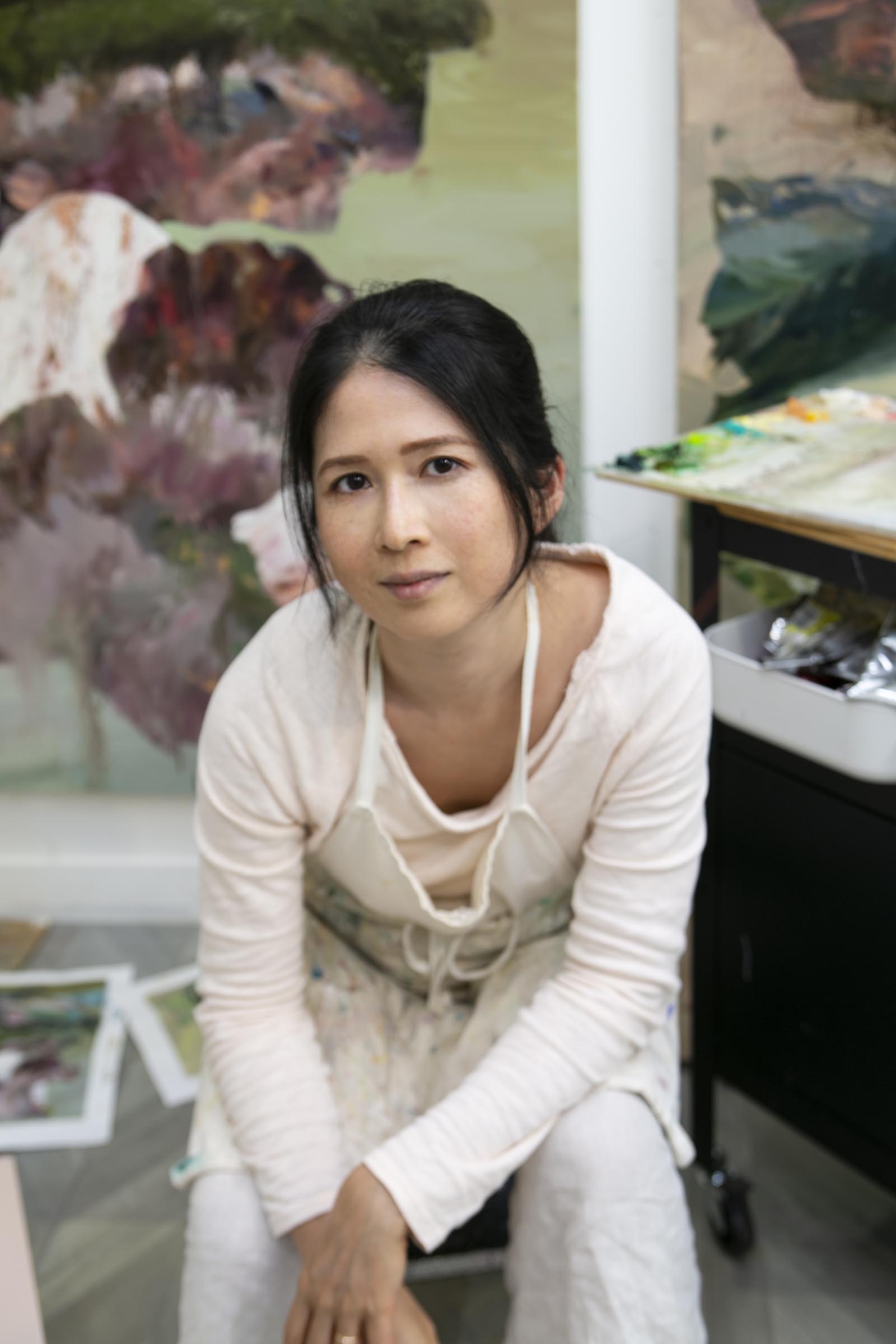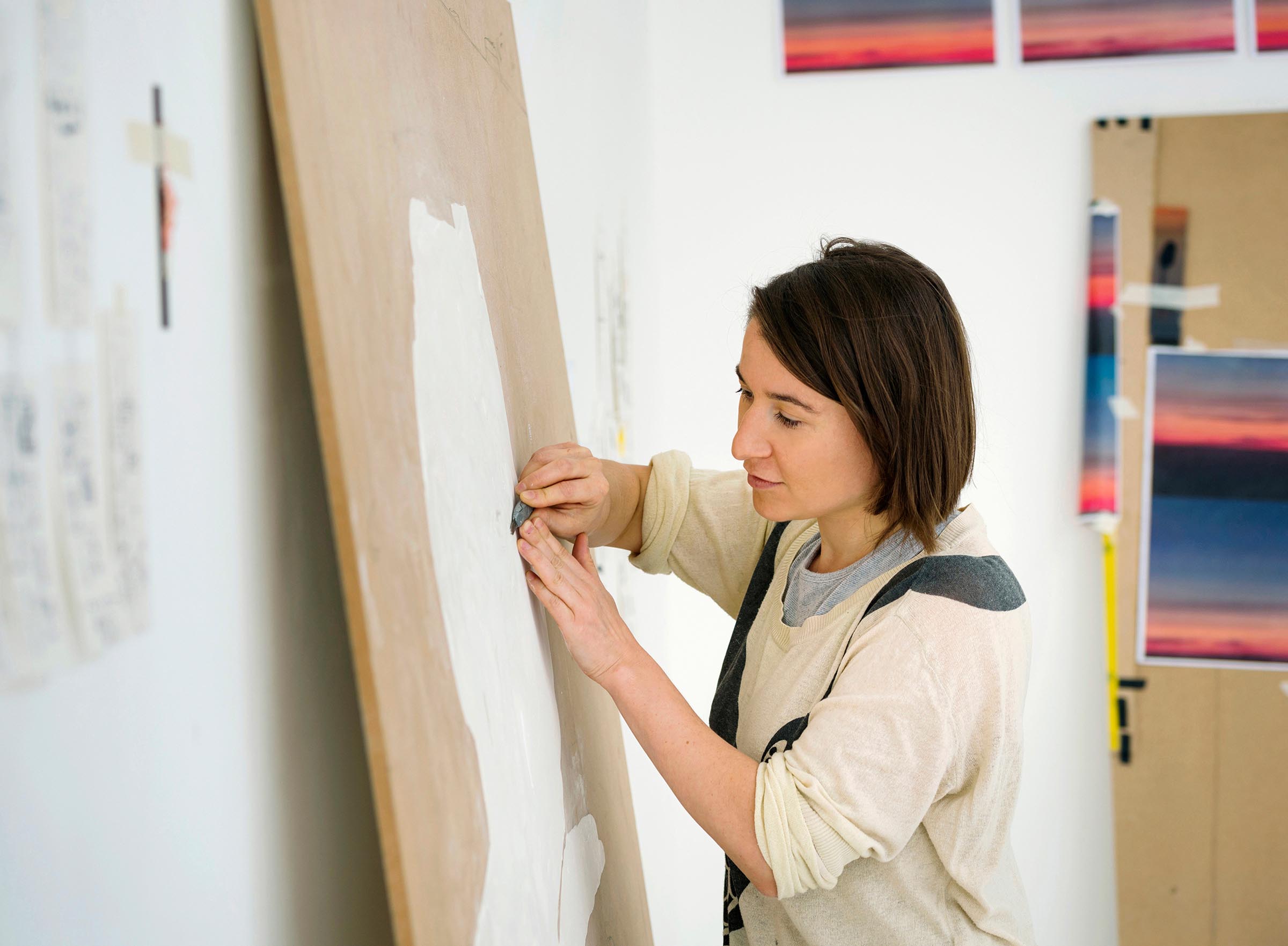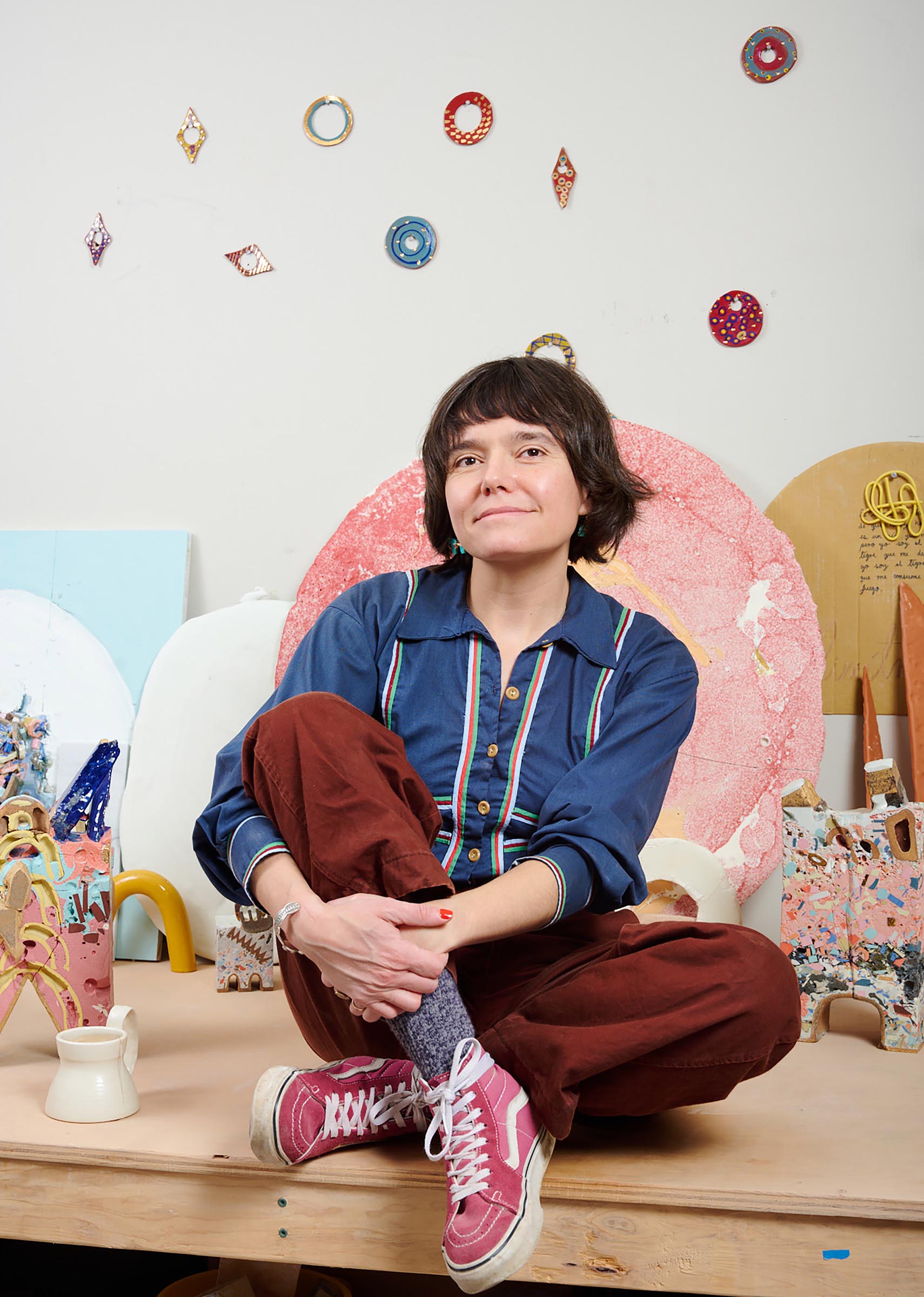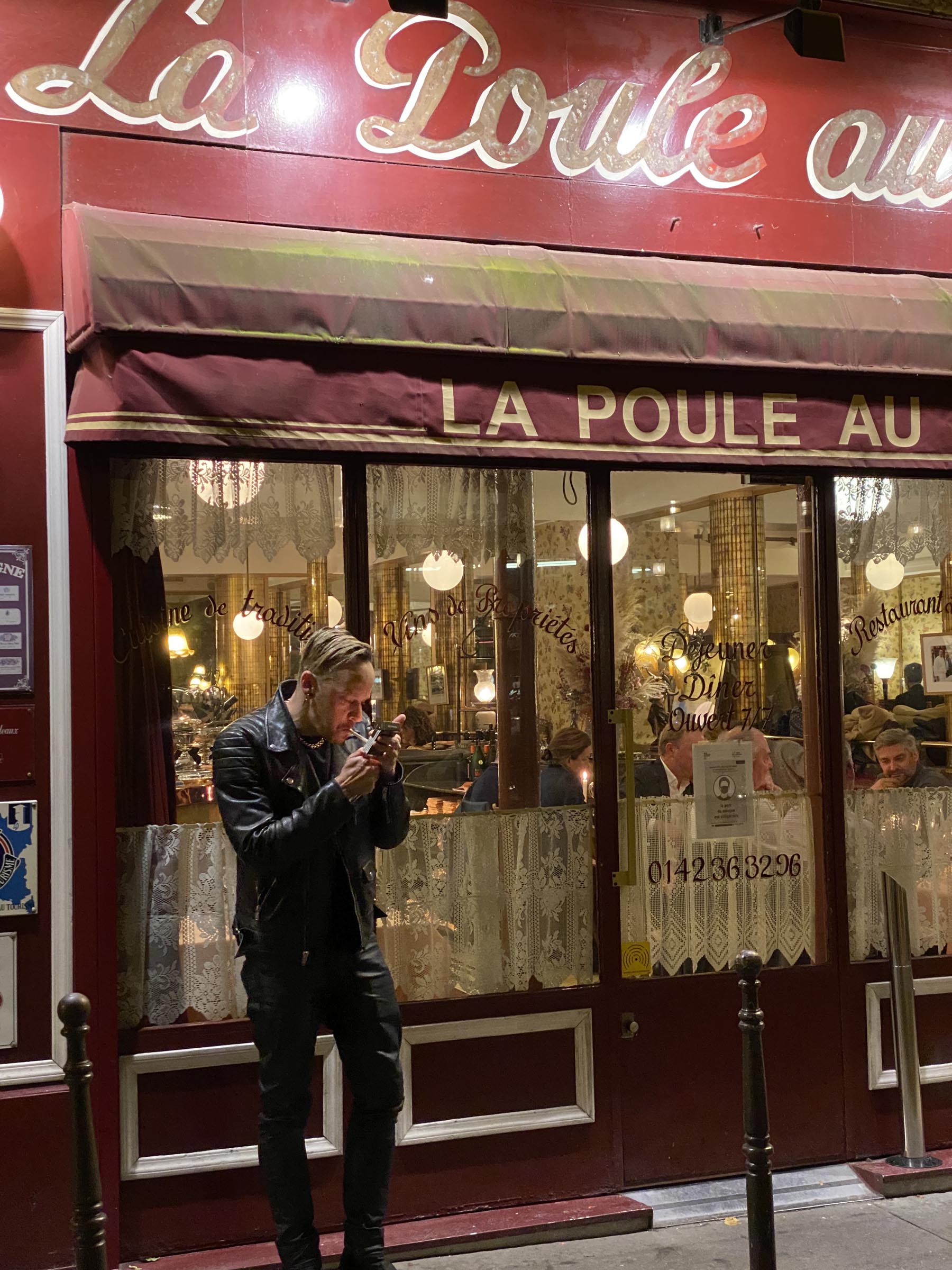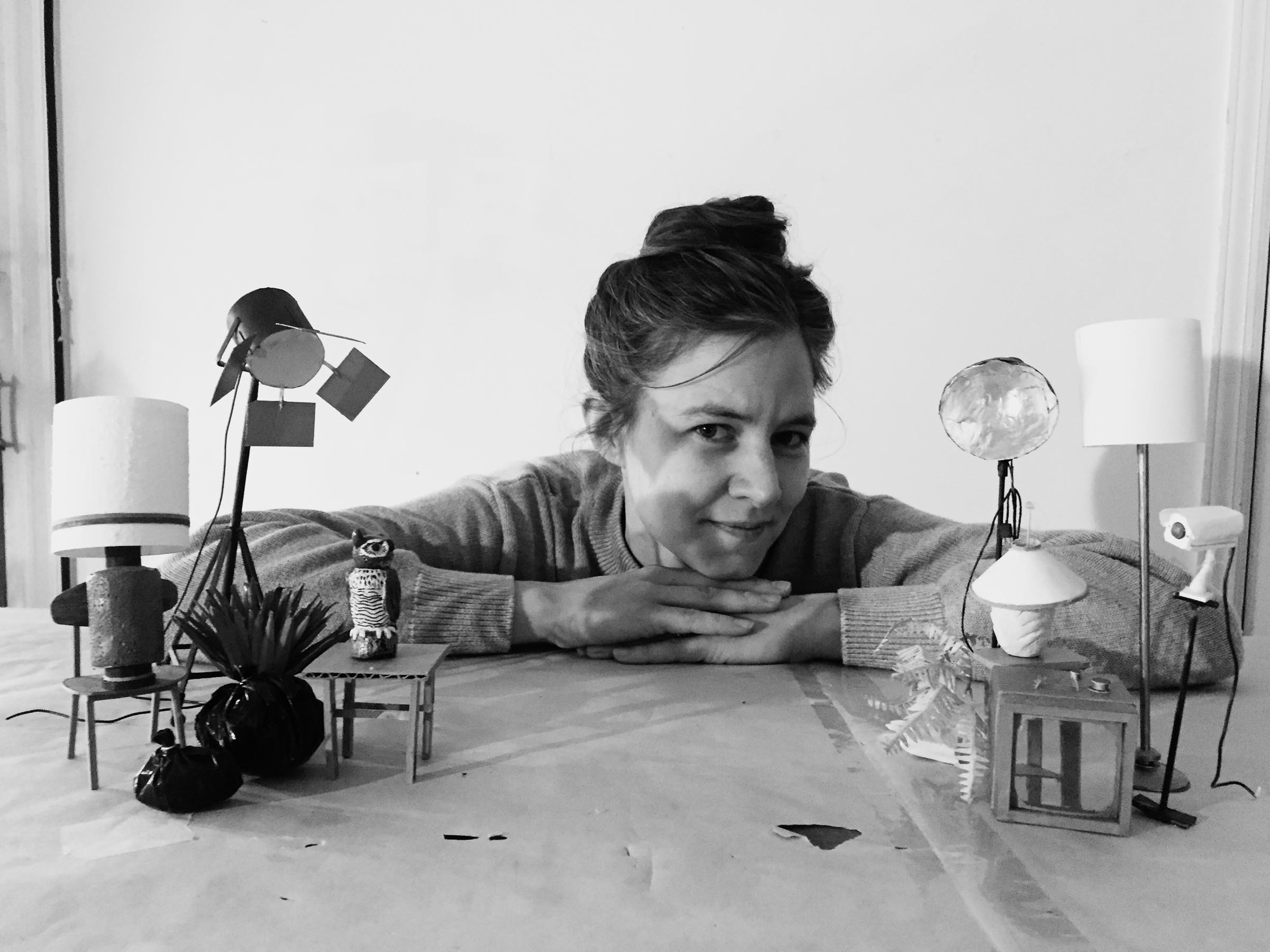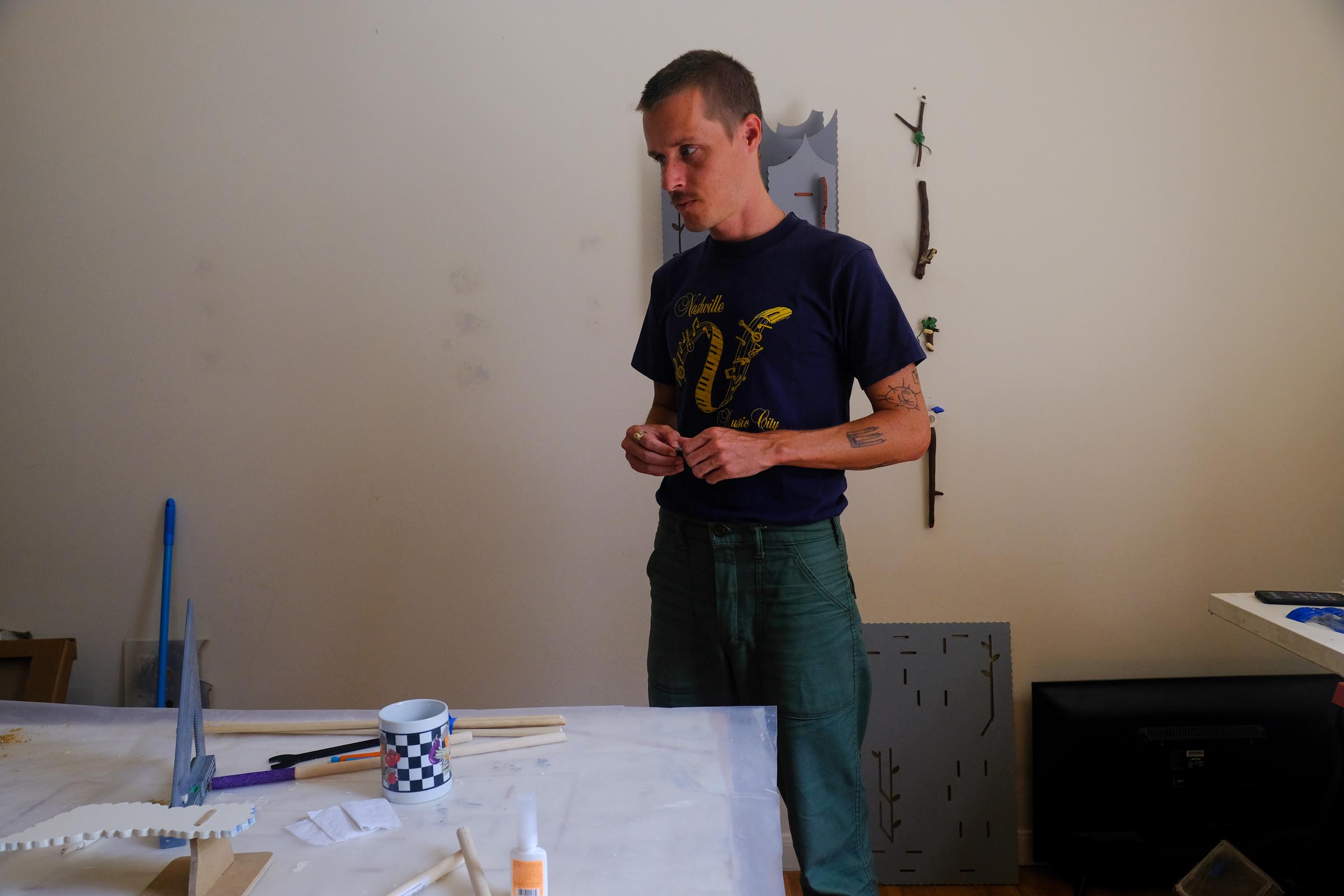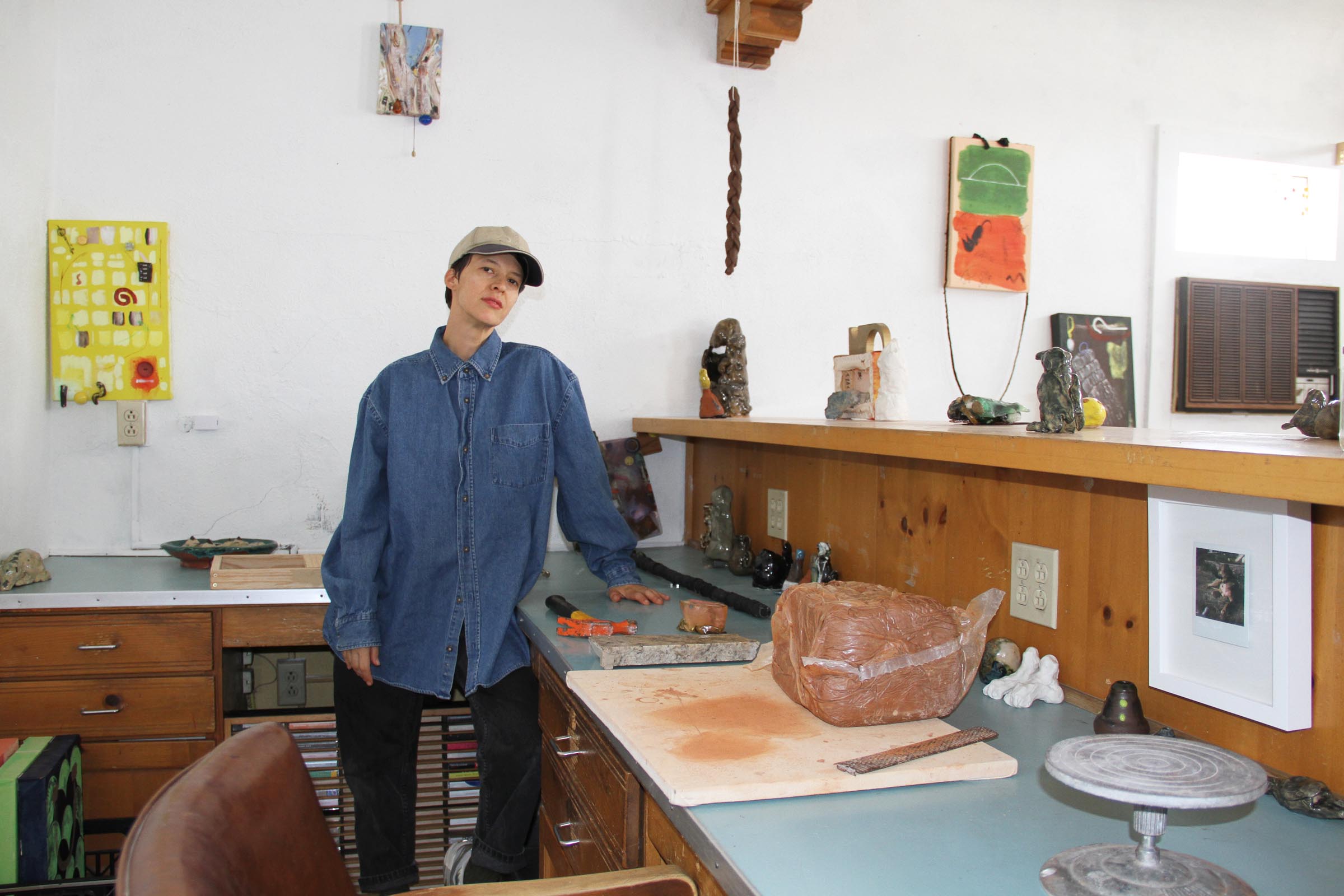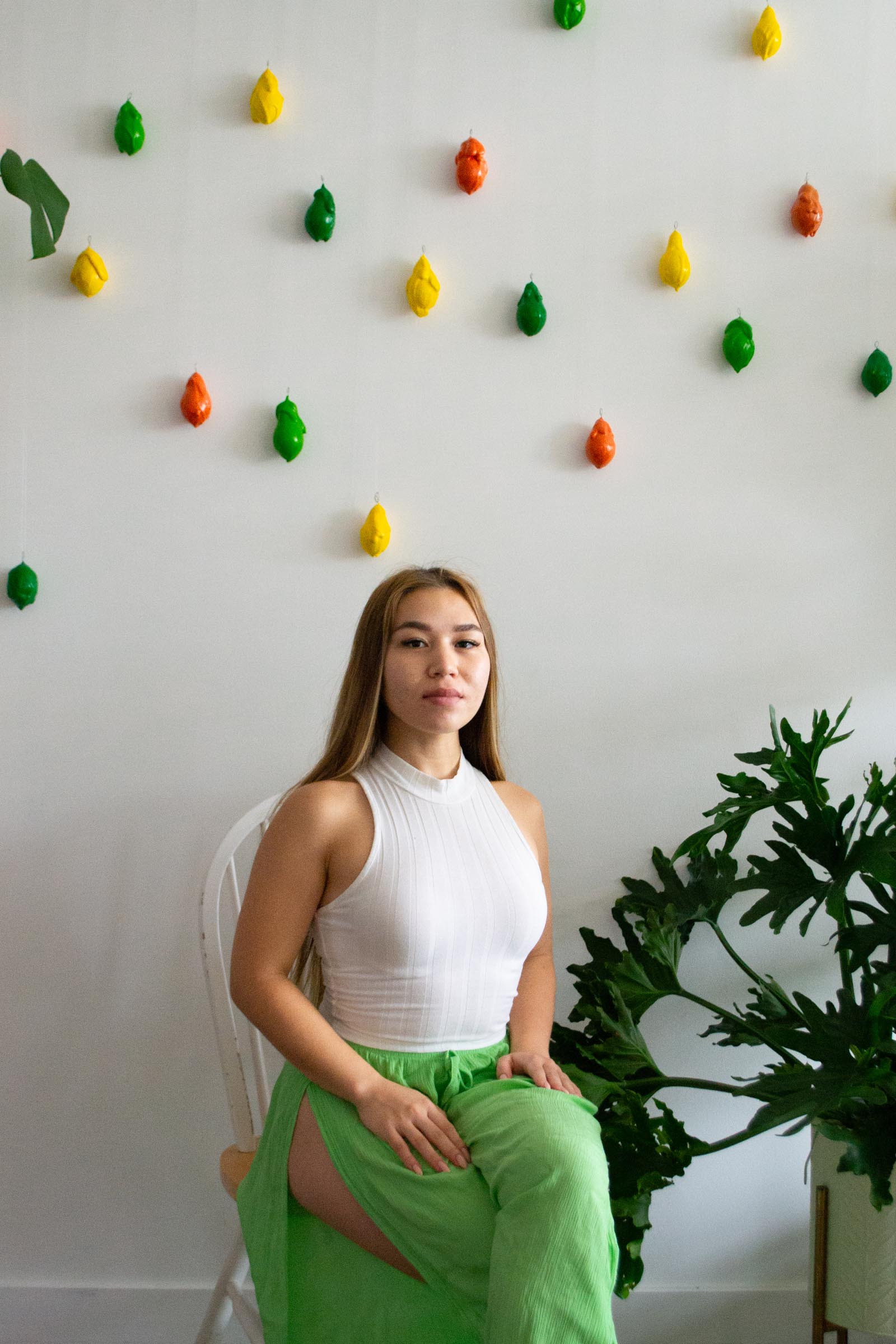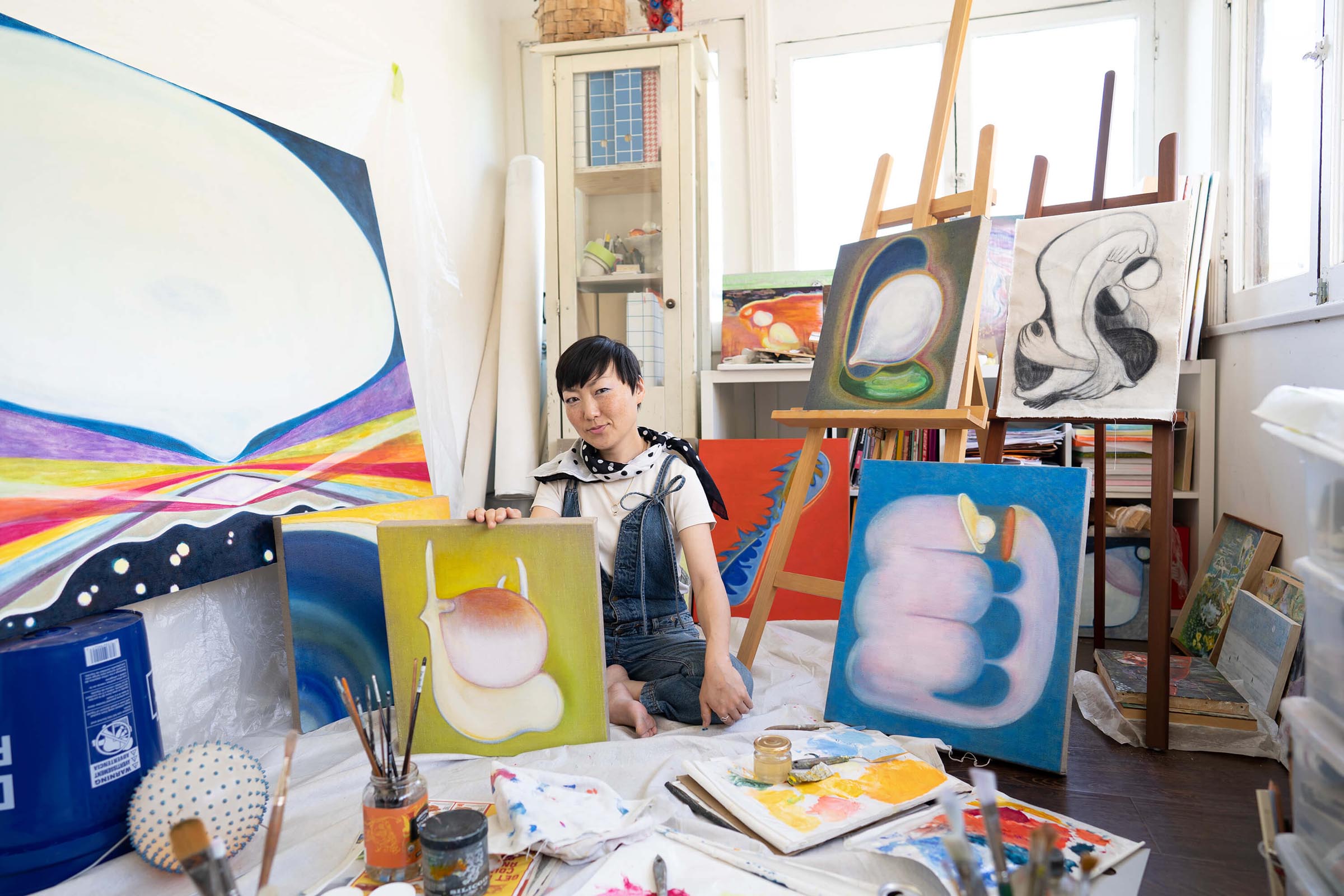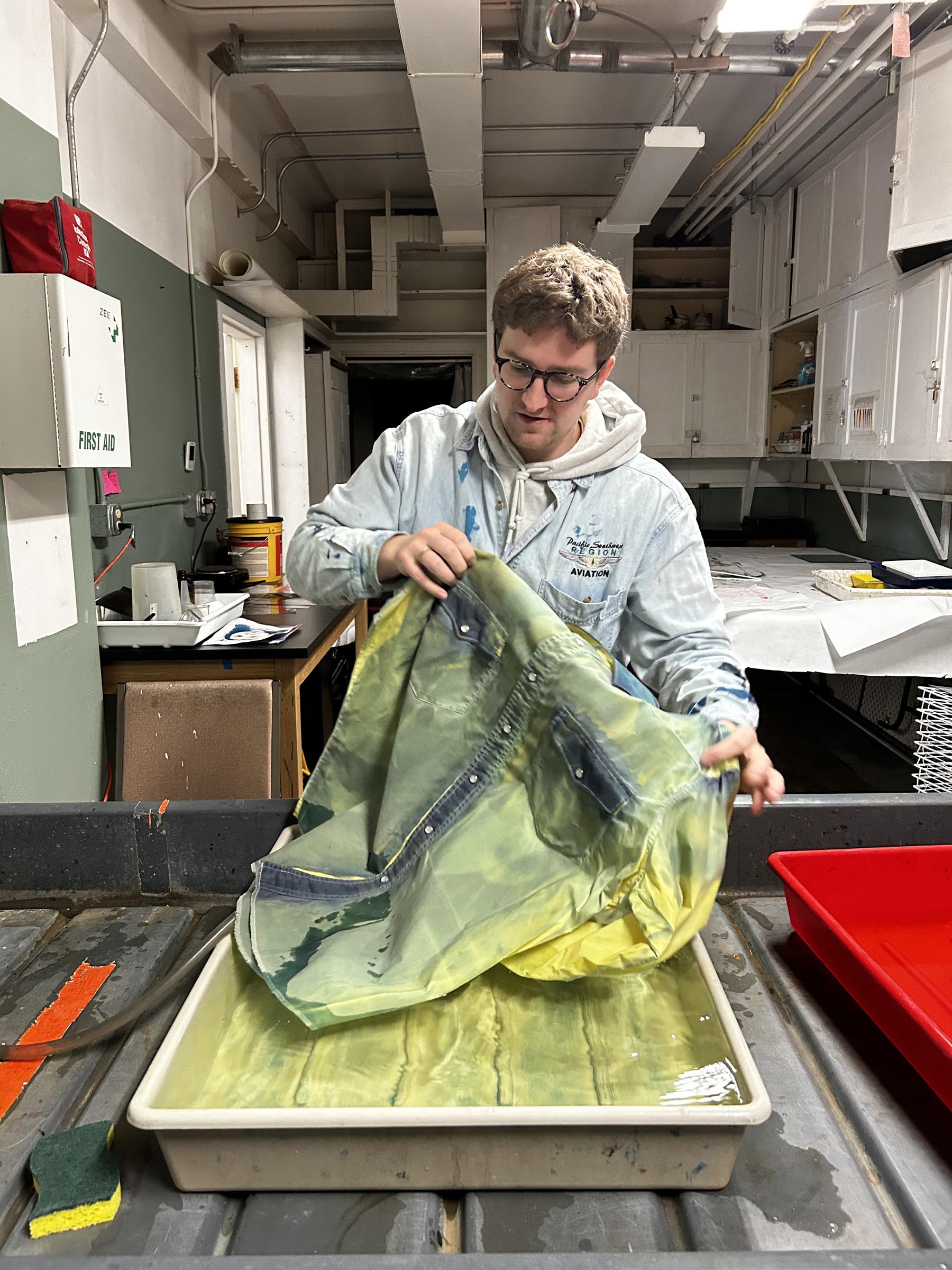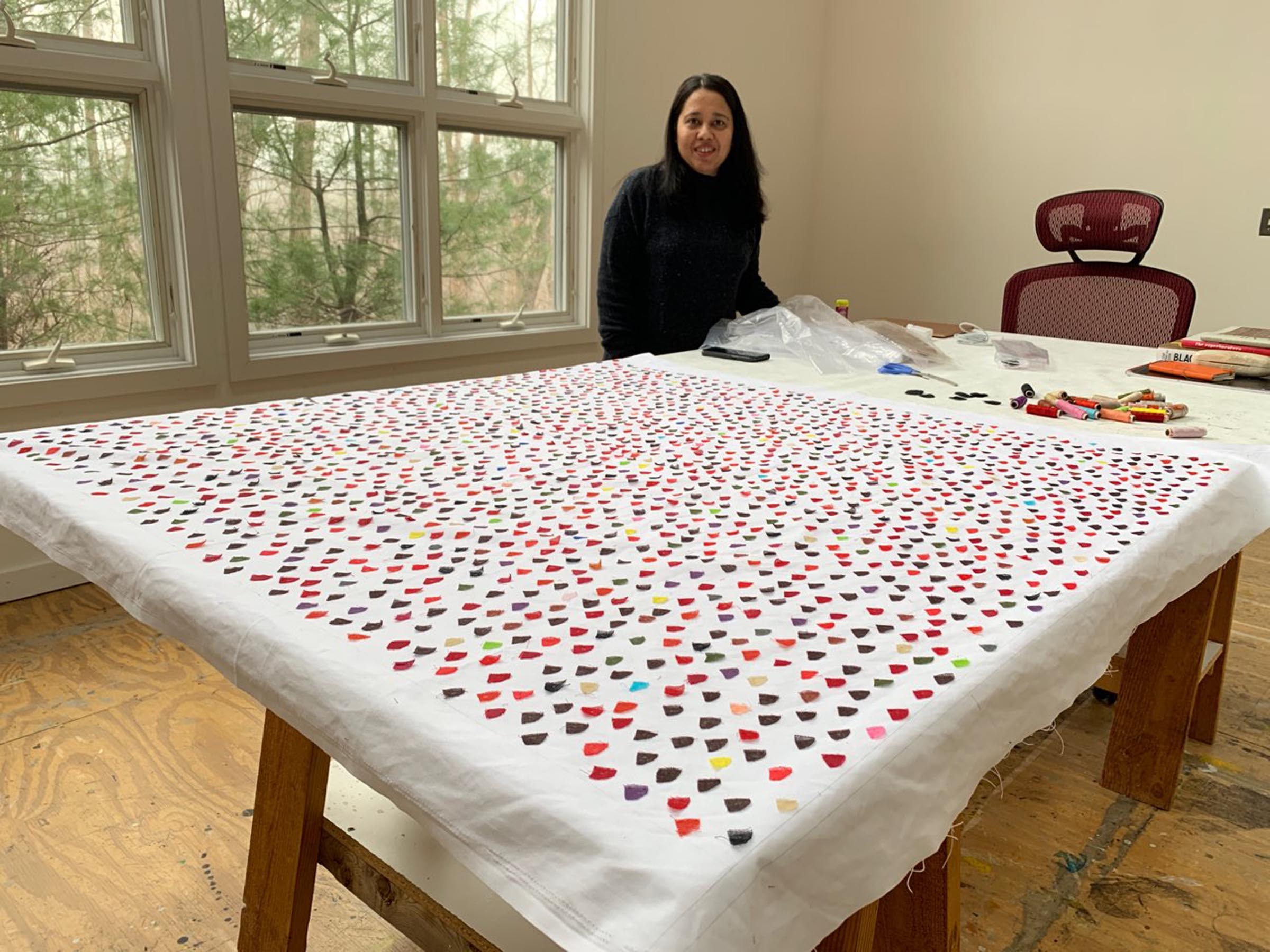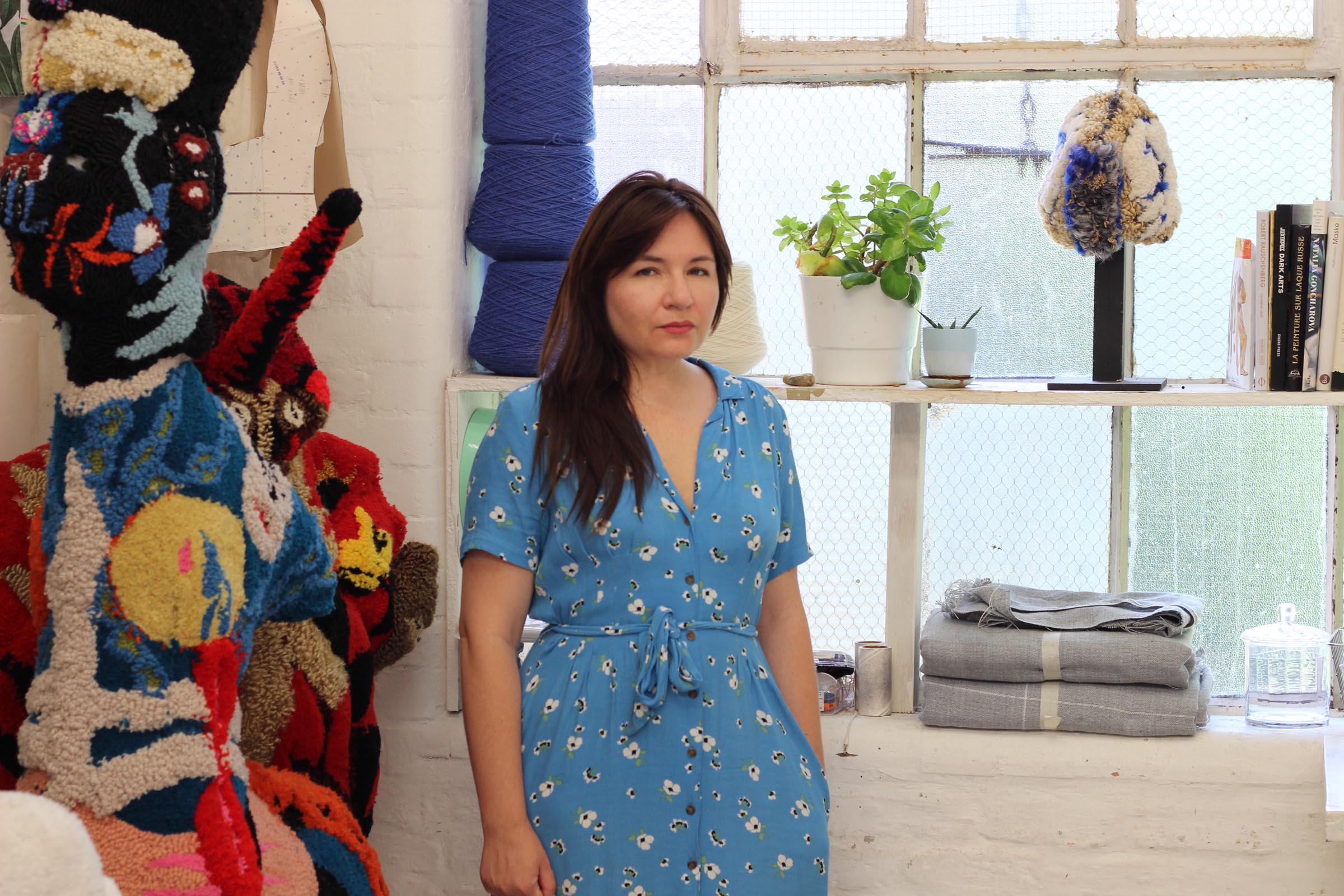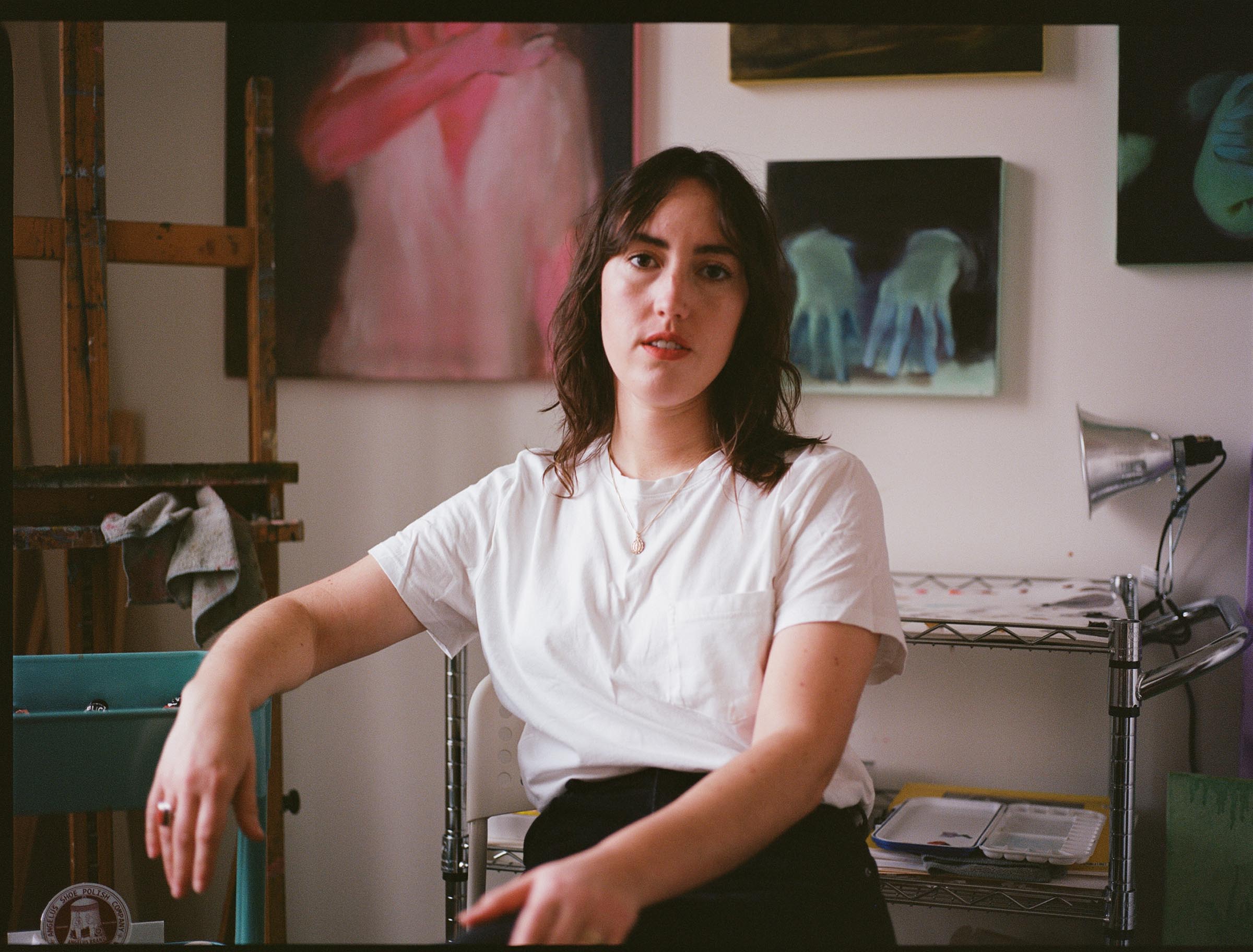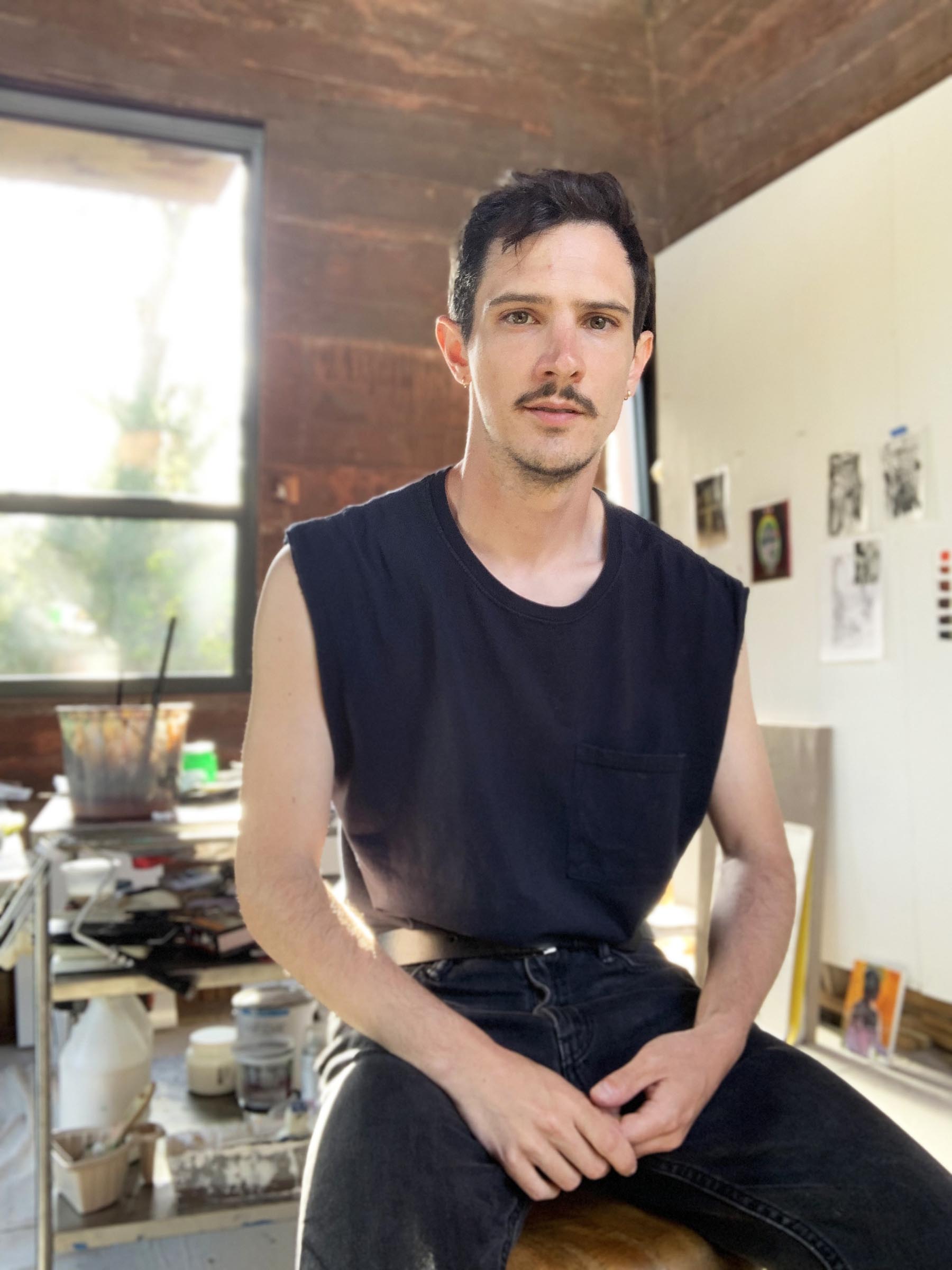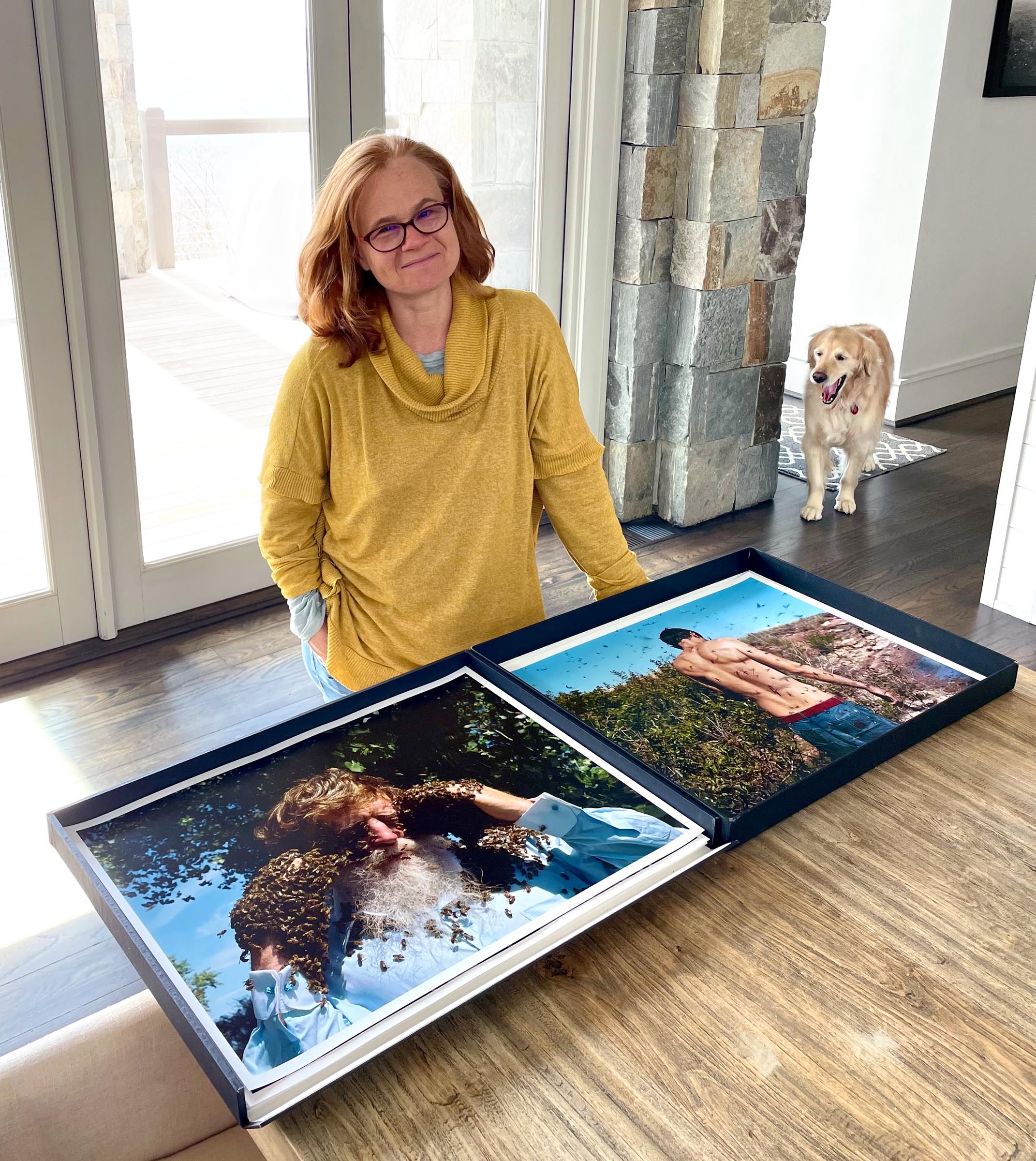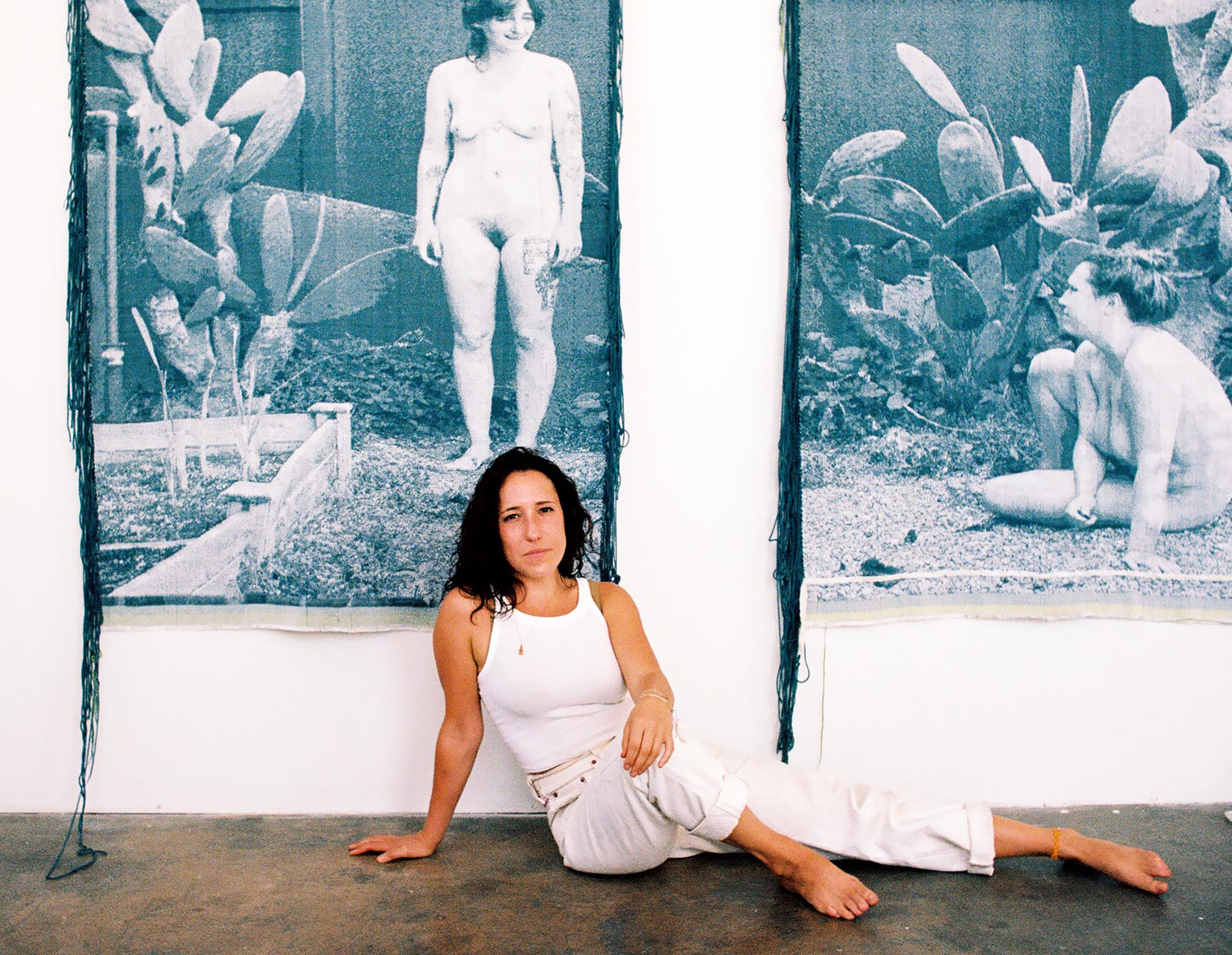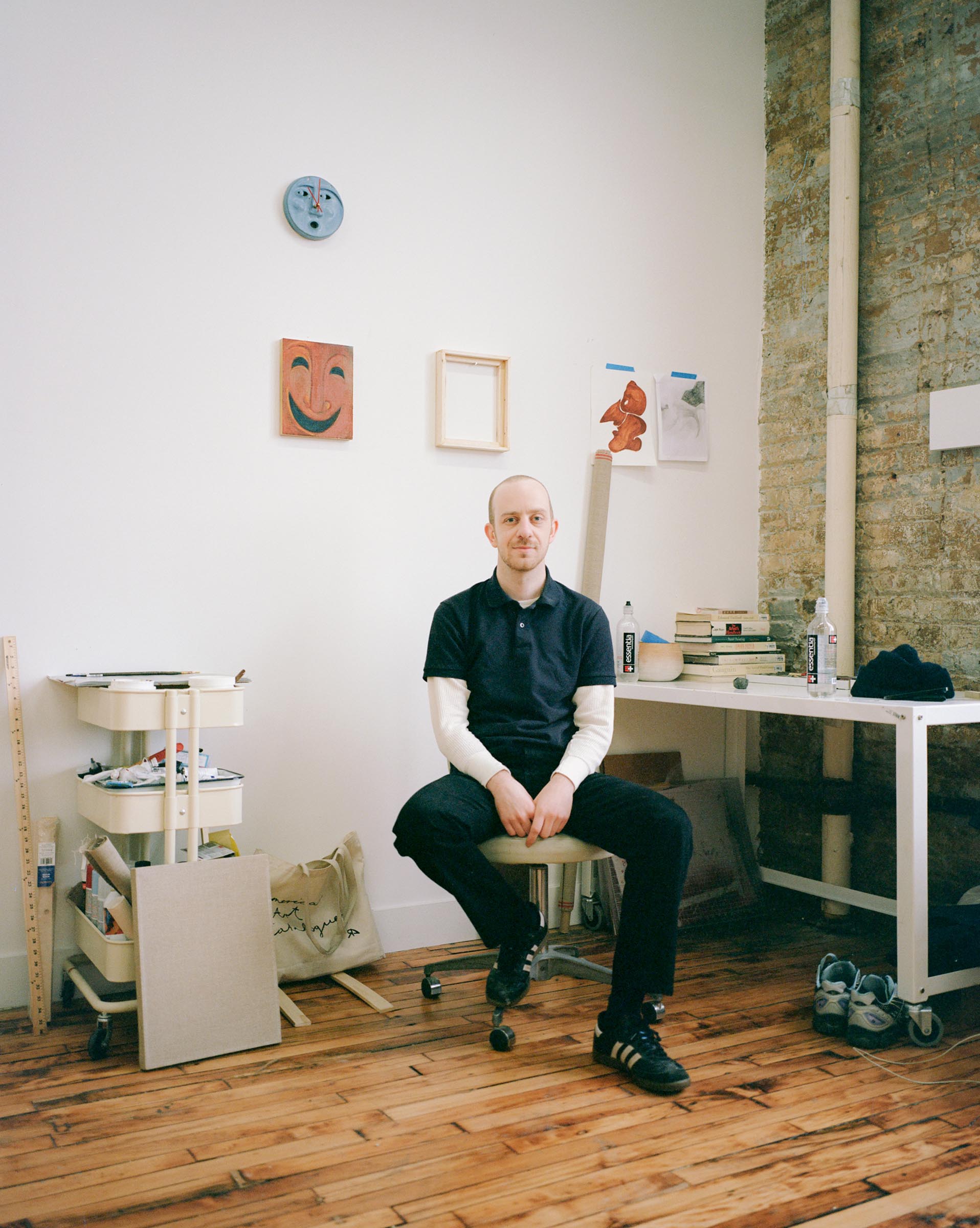How did you get into making art?
I’m Jamaican-born, where I spent my formative years and which has been an immense influence. I distinctly remember in 6th grade, in Jamaica, my artwork was presented to the principal. My art teacher shared with her to highlight that I had been excelling in his art class. She asked me what profession I wanted to do as an adult and I declared, “I am going to be an artist.” I believe saying it out loud and not being discouraged. This inspired me to take this path to be an artist along with a constant urge to make things with my hands.
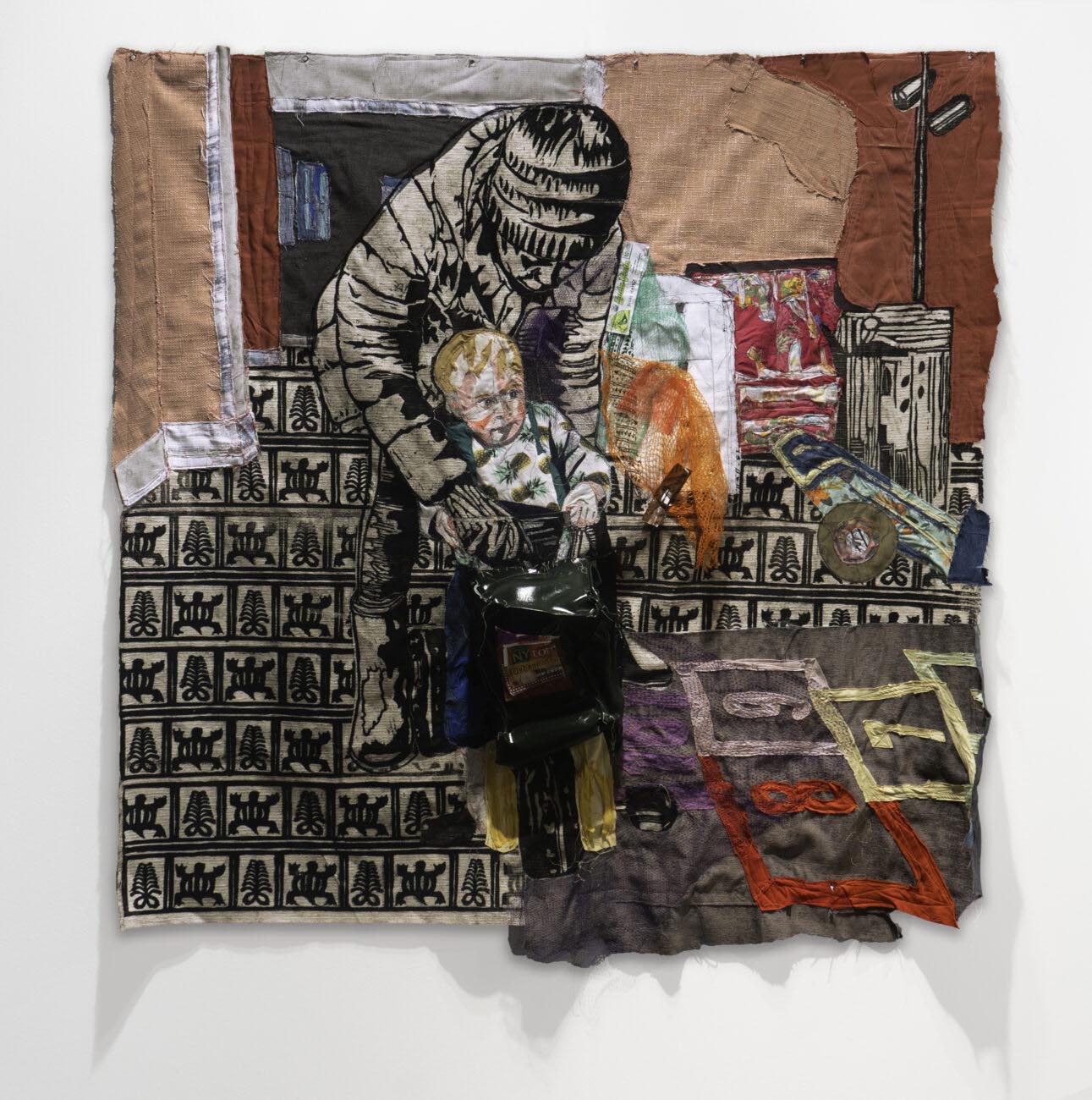
What are you currently working on?
I am currently working on a series of work, Krys and the Gigs, which are fiber paintings from my perspective and at times selfies of myself working as a nanny and dogsitter in the past.
The series centers on the care work experiences I have had and addresses various negotiations I made throughout the work day while celebrating the memories I have made on the job. I believe I was able to avoid most exploitive working conditions by code-switching and reflecting passive-aggressive behaviors experienced when necessary which I learned from watching my mother work as a nanny. There is an ongoing toggle of who has the power in these fiber works. Is it soloely the empoyer or is it shared with the care worker? I also question what does equitable care labor look like?
The series centers on the care work experiences I have had and addresses various negotiations I made throughout the work day while celebrating the memories I have made on the job.
Krystle Lemonias
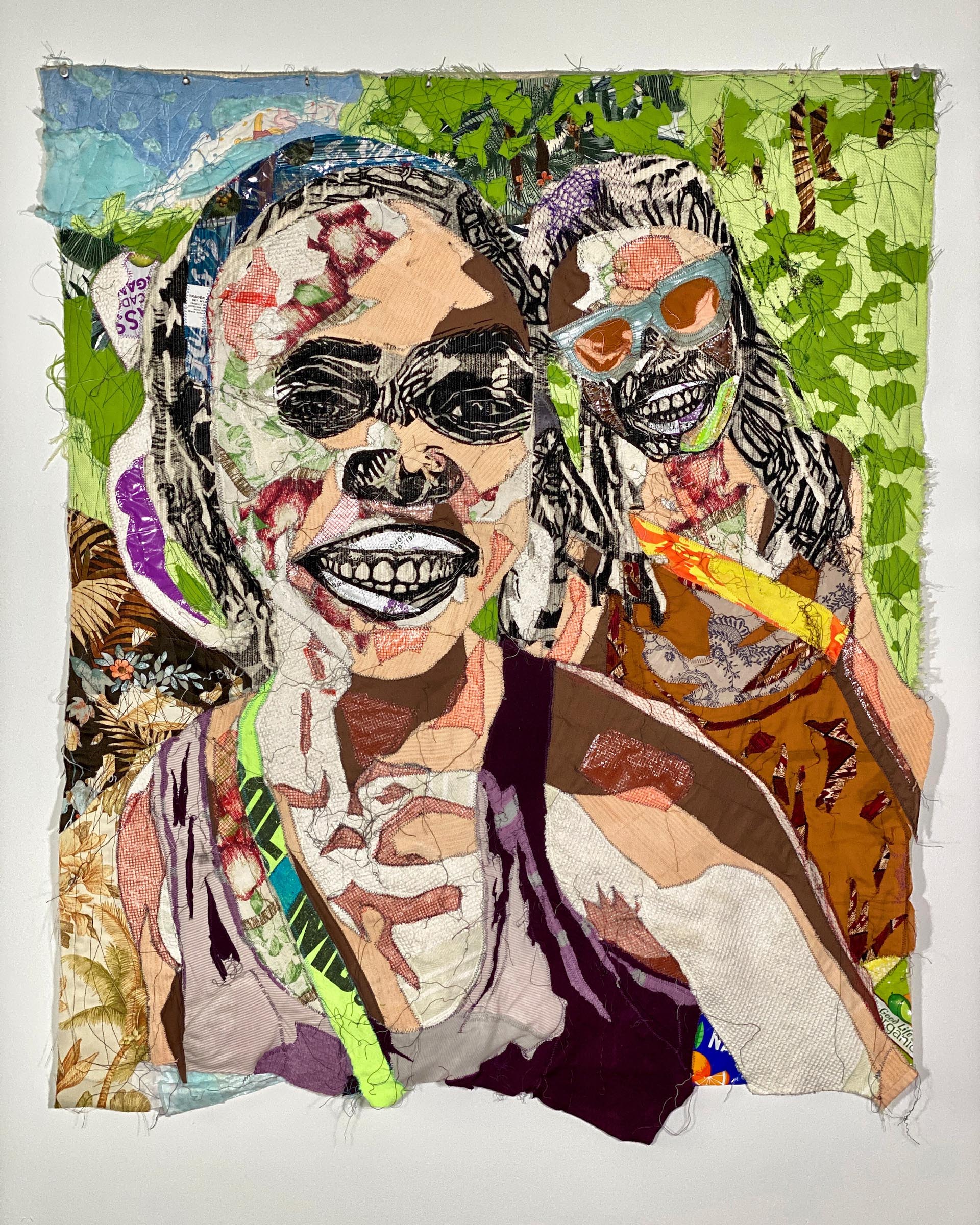
What inspired you to get started on this body of work?
This work began from being inspired by immigrant black women like my mother and myself who has worked as a domestic laborer. This exploration as artwork began when after leaving home to go to graduate school my relationship with my mother became strained. In my reflection of the situation, I found most of our connection was build around nanny work, something we no longer share. I recognized that despite our disagreements on many things I value her work ethic, resilience through challenges on the job, and dedication to providing for her family. My past works in fiber celebrate these characteristics of my mother and women who do care work.
Conceptually, I’m using baby clothes sourced from the family whose children my mother once cared for and have deconstructed them into compositions as a type of representational resistance she has displayed in her work environments. I have used various configuration tactics to exhibit how one would advocate for themself on the job. Each piece shares different moments one would navigate during their work.
Do you work on distinct projects or do you take a broader approach to your practice?
I have streams of thought that start as sketches and writing in my sketchbook that a portion is then developed into full sized works. I usually have more than two series of work being made at a time that I jump back and forth on.
What’s a typical day like in your studio?
My typical studio day in the studio starts about noon and often ends at 10pm, breaking to have dinner for about an hour. I get in the studio 3 days a week. I usually have a schedule for the week as to what part of the work I will be focusing on to have some sense of accomplishment at the end of each session. My work is very laborious and can feel as if it will never end so I give myself checkpoints to measure my progress. Some days are designated to cutting and pinning fabric and another is devoted to sewing the fabric in place.
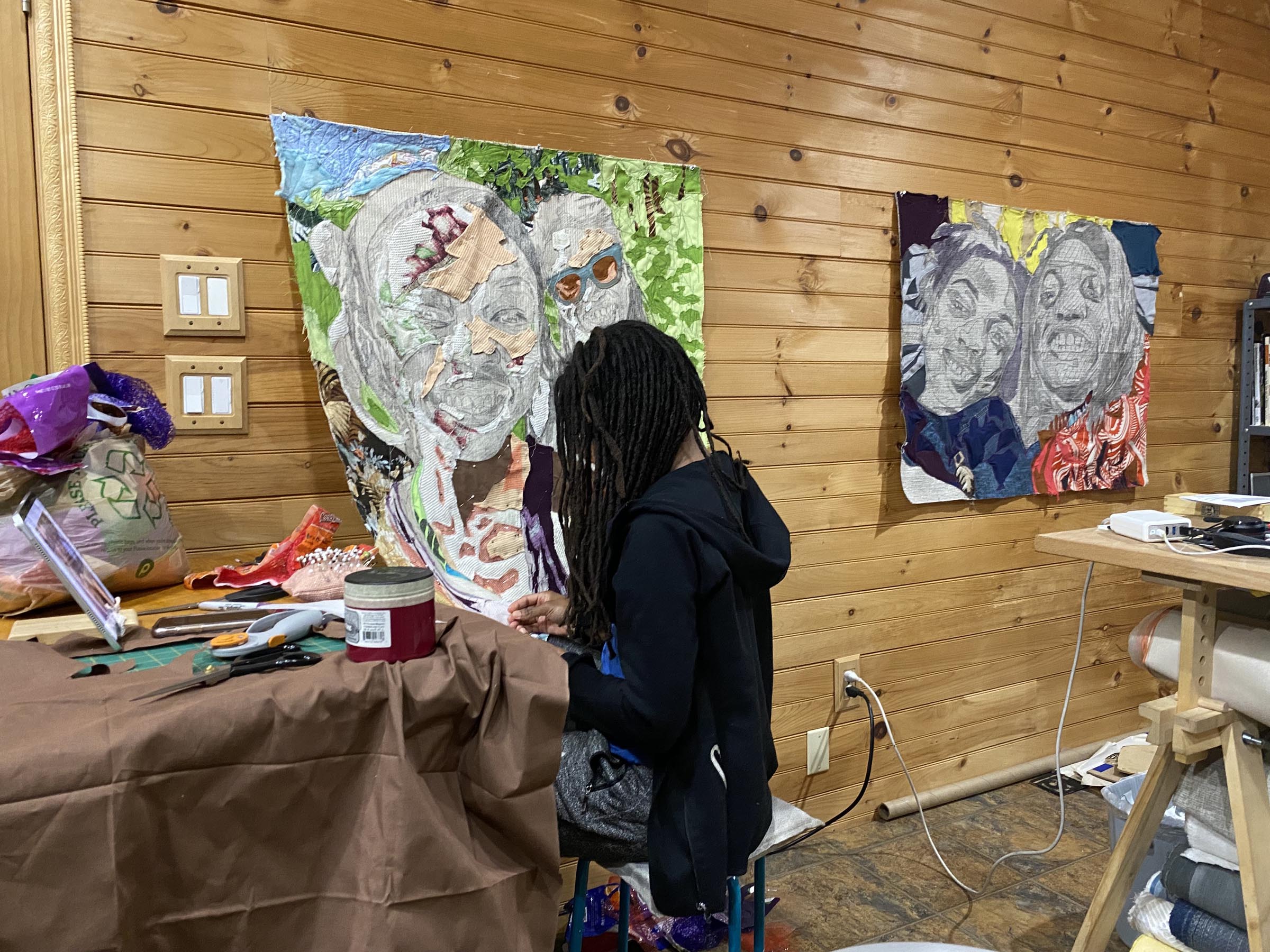

Who are your favorite artists?
Last weekend I went to NYC to see what was showing in Chelsea and came across some really clever and experimental work. I saw an exhibition with ceramic work by Jen Deluna and paintings by Will Watson.
I also love the works on paper by my friend, Khari Johnson Ricks. Other artists work I adore are Deborah Jack, Derrick Adams, Nick Cave and Allana Clarke. I am very impressed by the work of these artists and many others that continue to inspire me in my practice.
Where do you go to discover new artists?
I discover new artists mostly on instagram and in artist books that I purchase. However, there is nothing more thrilling than seeing new work in a museum or gallery space. I discover new artists like this often as well.
Learn more about the artist by visiting the following links:
